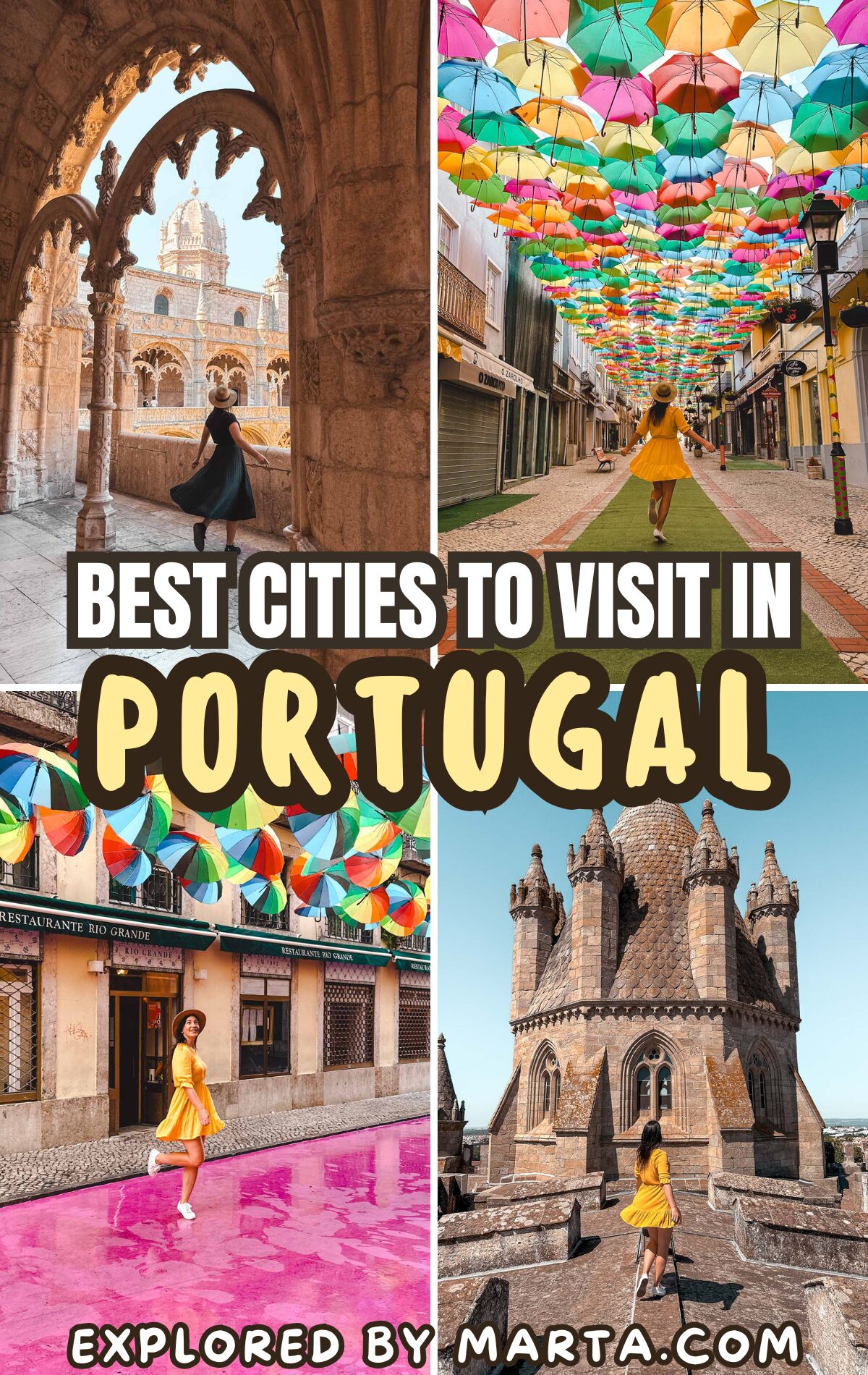23 best towns and cities to visit in Portugal
This post may contain affiliate links. If you use these links to buy something I may earn a small commission at no extra cost to you! Thank you for your support!
Come with me to explore the best towns and cities to visit in Portugal! From Lisbon’s vibrant neighborhoods and Porto’s riverside charm to the fairytale palaces of Sintra and the golden beaches of Lagos, Portugal is full of destinations that will steal your heart.
We’ve spent many months traveling around Portugal and exploring it all, from famous landmarks to forgotten medieval places that date back a thousand years. Each place has its own unique charm that makes it worth visiting.
In this blog post, you’ll find the ultimate list of the best towns and cities in Portugal, complete with descriptions, photos, and my travel tips. No matter the length of your travels, this guide will help you choose the best places to visit in Portugal! Cheers!
1. Lisbon, the majestic capital of Portugal
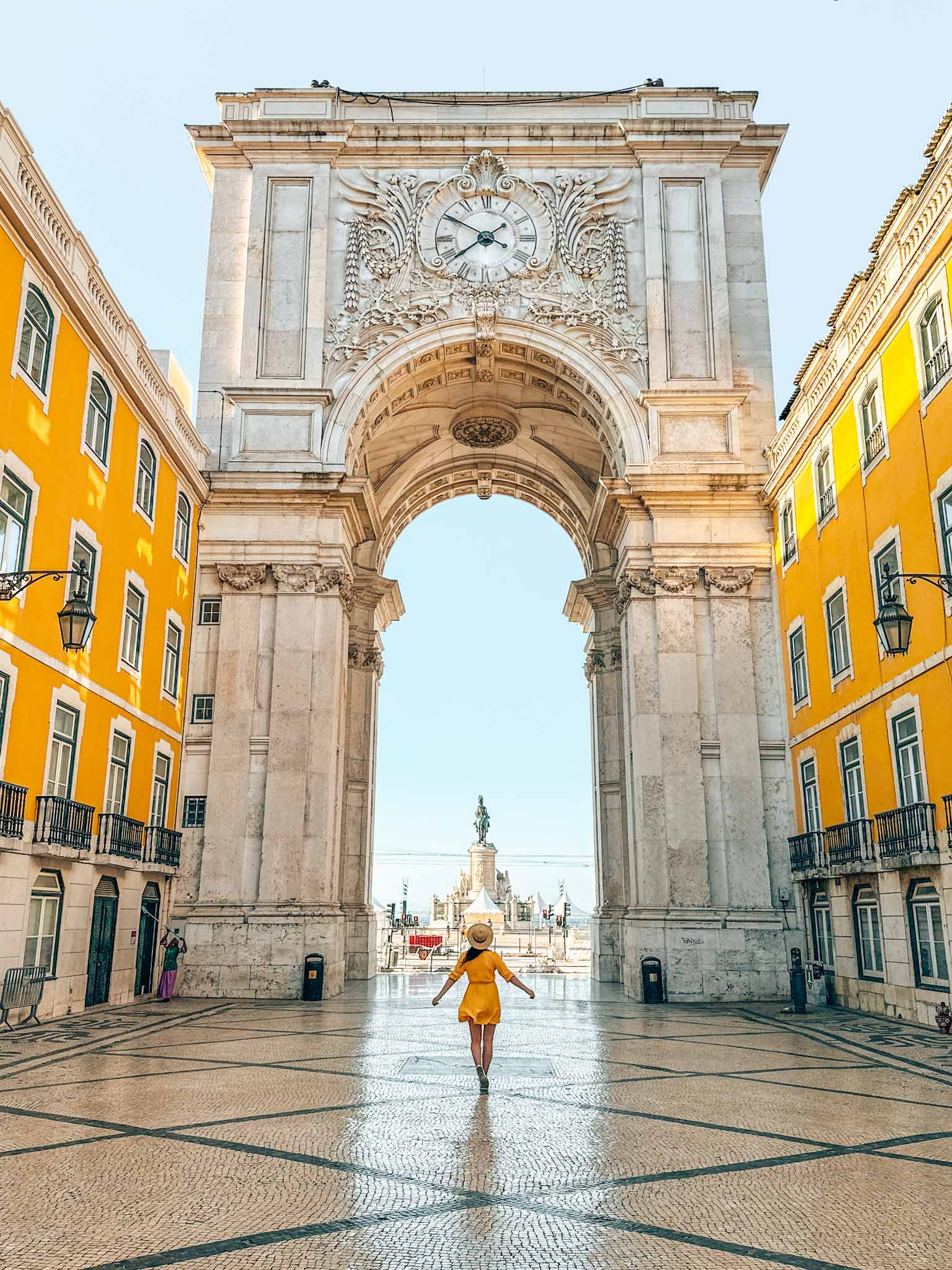
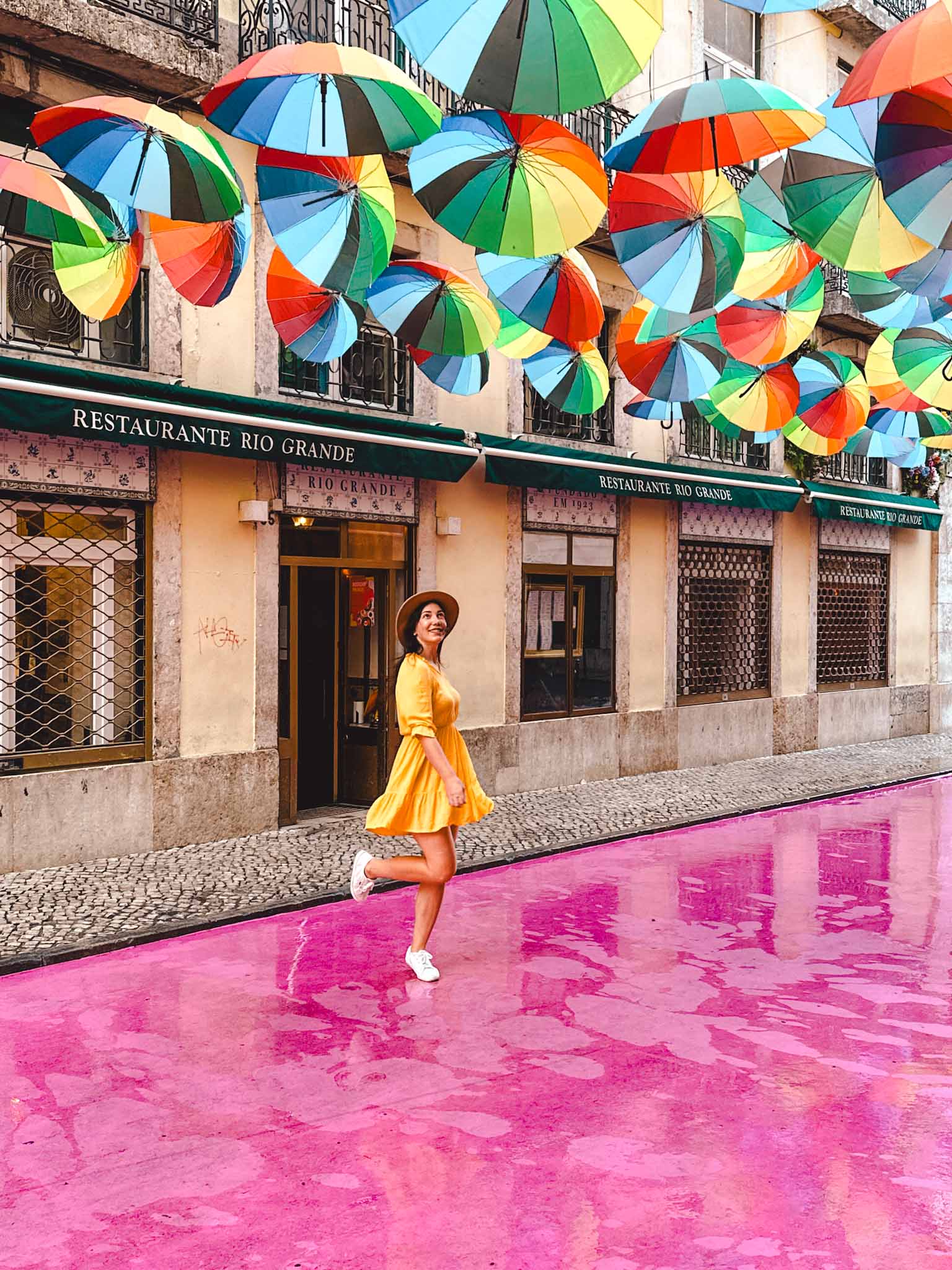
Lisbon, the majestic capital of Portugal, is one of my favorite places in Portugal and one of my favorite capitals in Europe!
Built across seven hills and overlooking the Tagus River, Lisbon is full of colorful houses, iconic landmarks, historic squares, and delicious food. It has a little bit of everything!
We’ve visited Lisbon several times (one time we stayed there for three weeks), and it never fails to surprise us with something new each time.
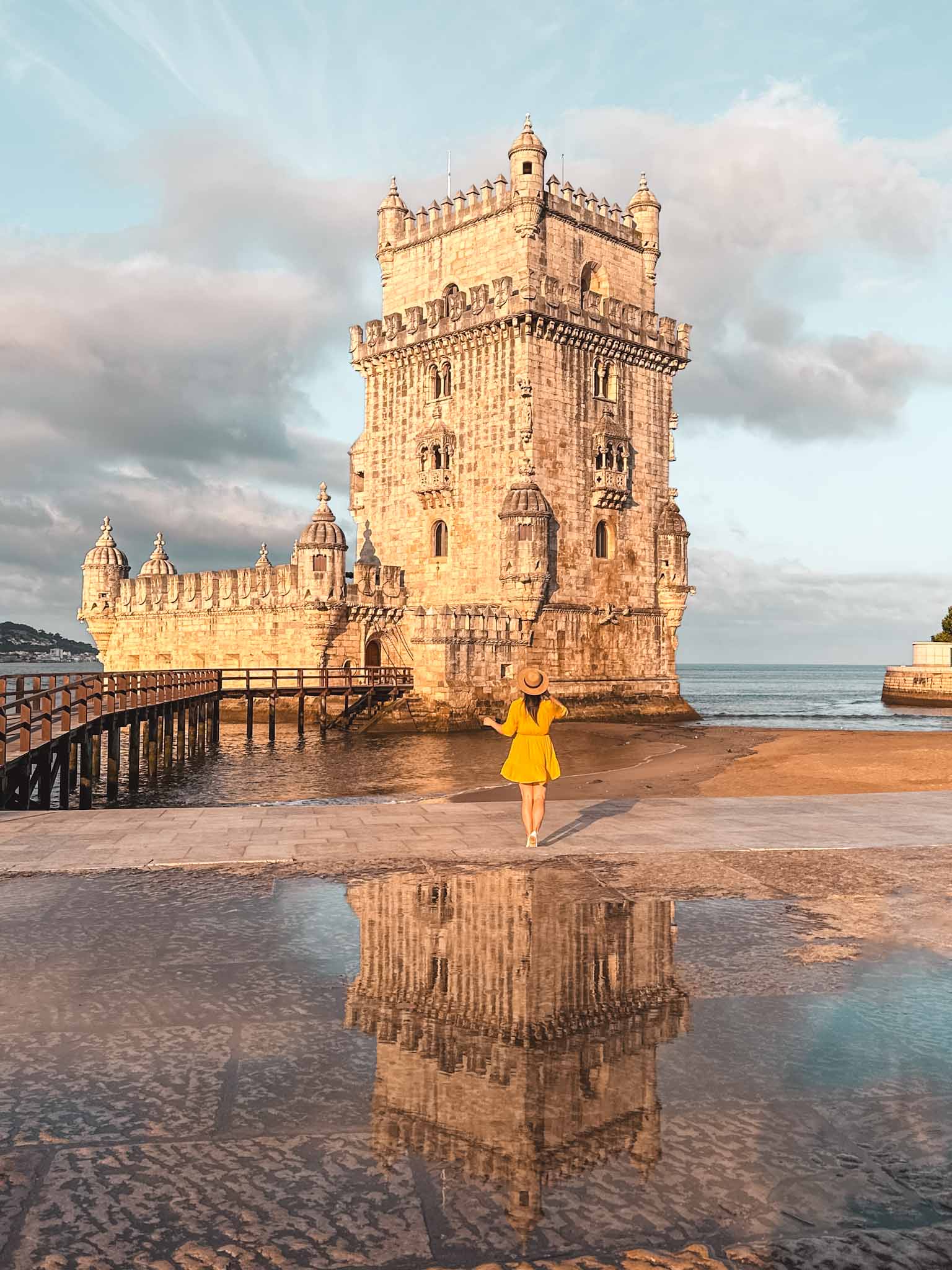
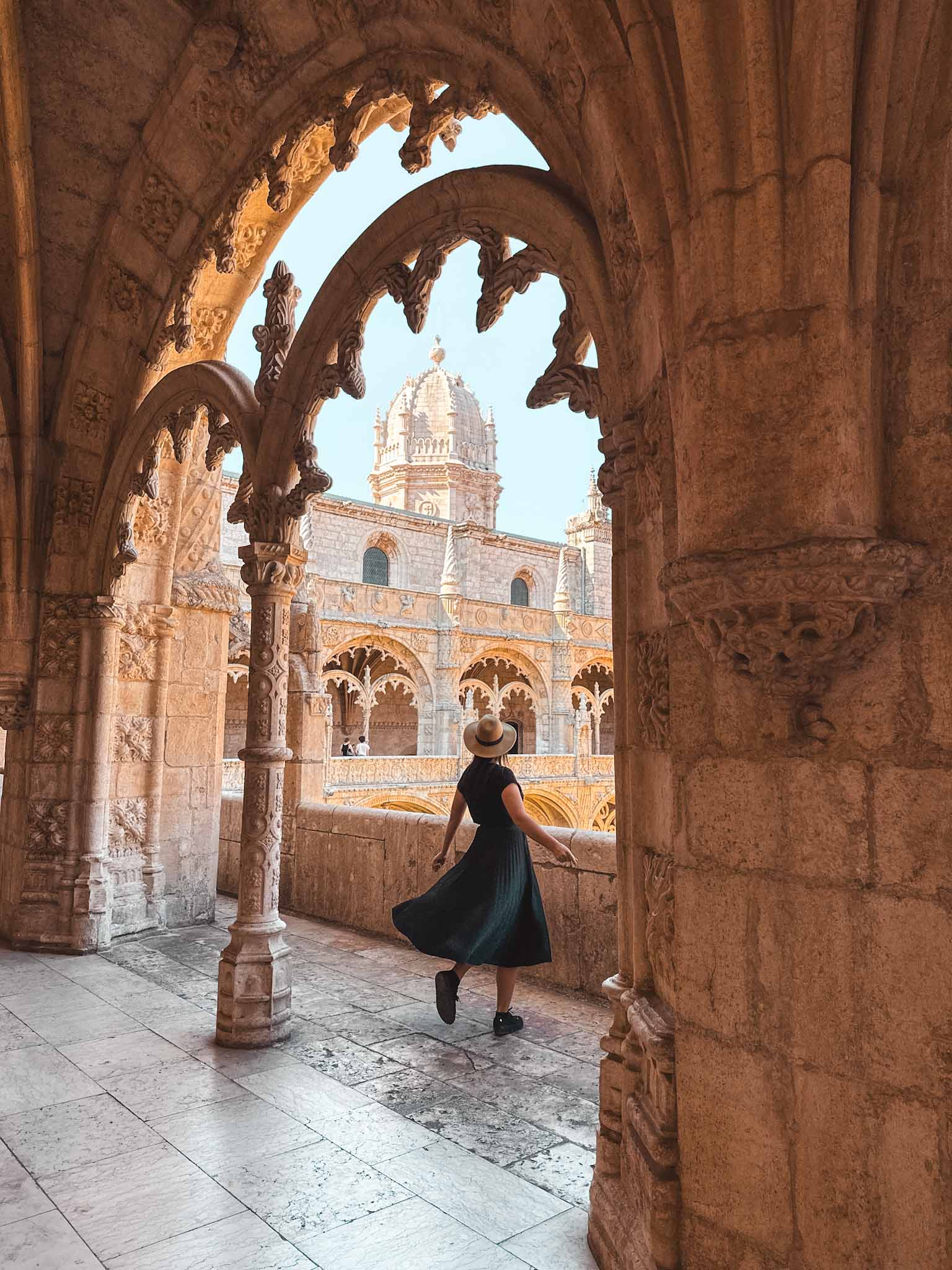
Some of Lisbon’s most famous landmarks include Belém Tower and the Jerónimos Monastery in the Belém district, both UNESCO World Heritage Sites that represent Portugal’s Age of Discovery.
Belém is also where you can try the Pastéis de Belém, the original version of Portugal’s famous custard tarts, pastel de nata. But besides that, there are many other fantastic places where you can try pastel de nata in Lisbon.
In the historic heart of the city, don’t miss Arco da Rua Augusta, a triumphal arch next to the Praça do Comércio square, as well as the most picture-perfect place in Lisbon – Pink Street.


The best way to start the day in Lisbon is to watch the sunrise at the famous Miradouro de Santa Luzia viewpoint, one of the most popular viewpoints in Lisbon.
Another hotspot to catch the best views of Lisbon is Miradouro das Portas do Sol, just steps away from Miradouro de Santa Luzia viewpoint.
However, to finish the day, I recommend climbing up to another Lisbon highlight, the Castelo de São Jorge, sitting high above the city with panoramic views over Lisbon’s red rooftops and the Tagus River. It is one of the best spots to catch a sunset.
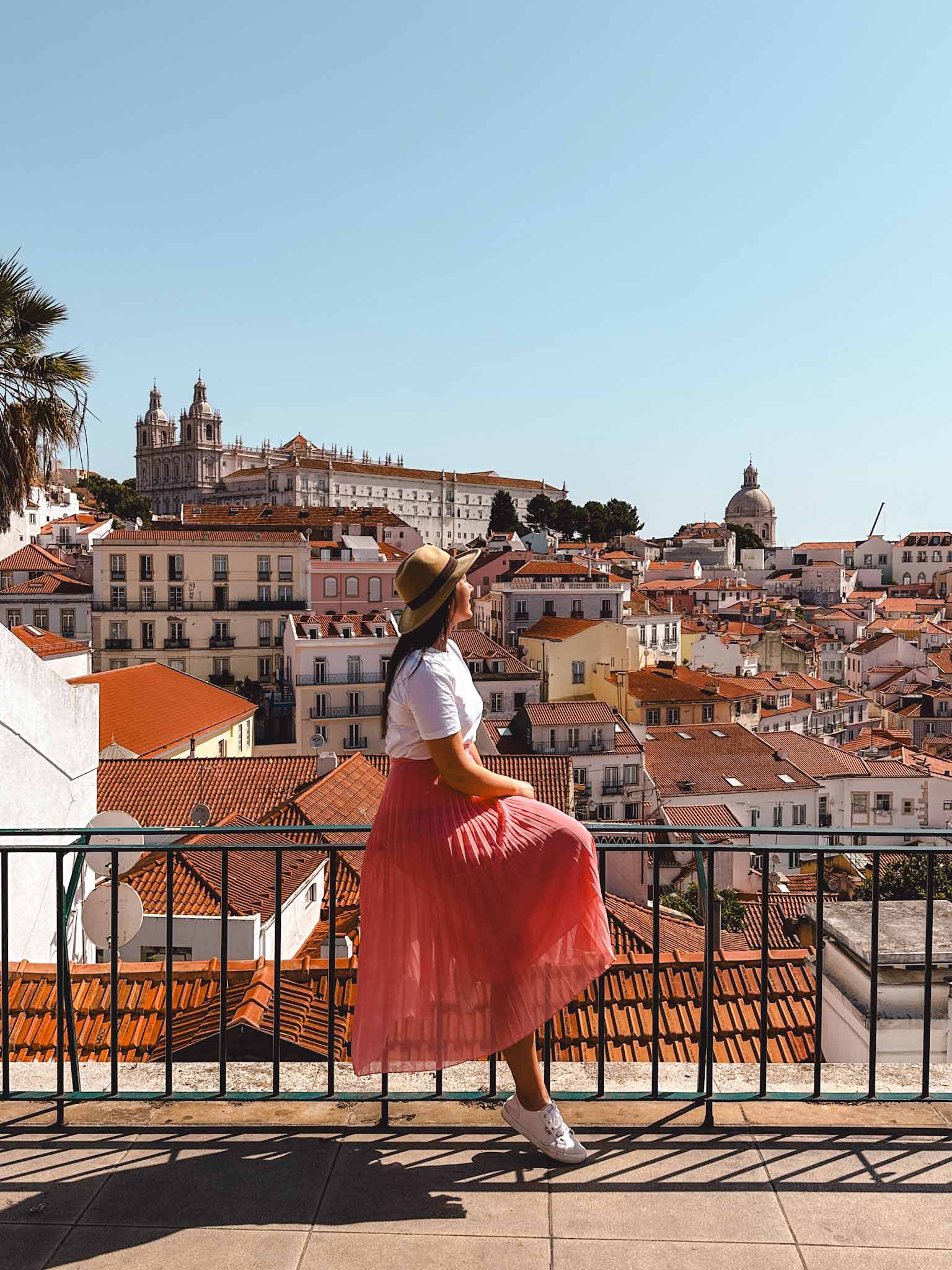

While exploring Alfama, one of Lisbon’s oldest neighborhoods, make sure to visit the Lisbon Cathedral (Sé de Lisboa), the city’s oldest church, dating back to the 12th century. It is one of Lisbon’s most recognizable landmarks!
Before leaving Lisbon, there is one bucket list thing you must do in Lisbon – you have to take a ride through the city on the famous and charming yellow Tram 28!
This city truly has something for everyone, whether you are a history lover or just want to eat good food and take cute pictures, haha. It’s just one of those places that stays with you after you leave!
2. Porto, the charming capital of the North
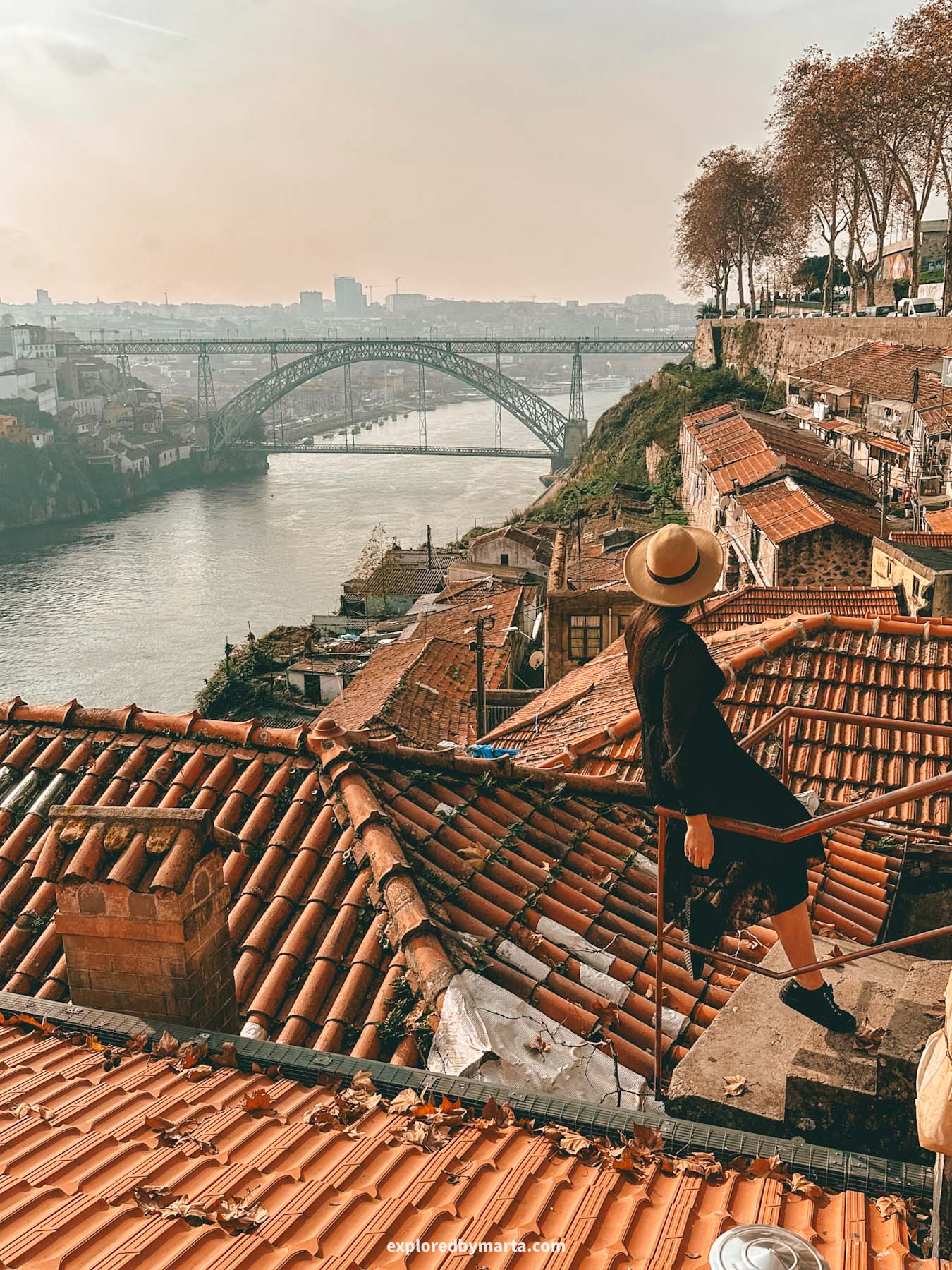
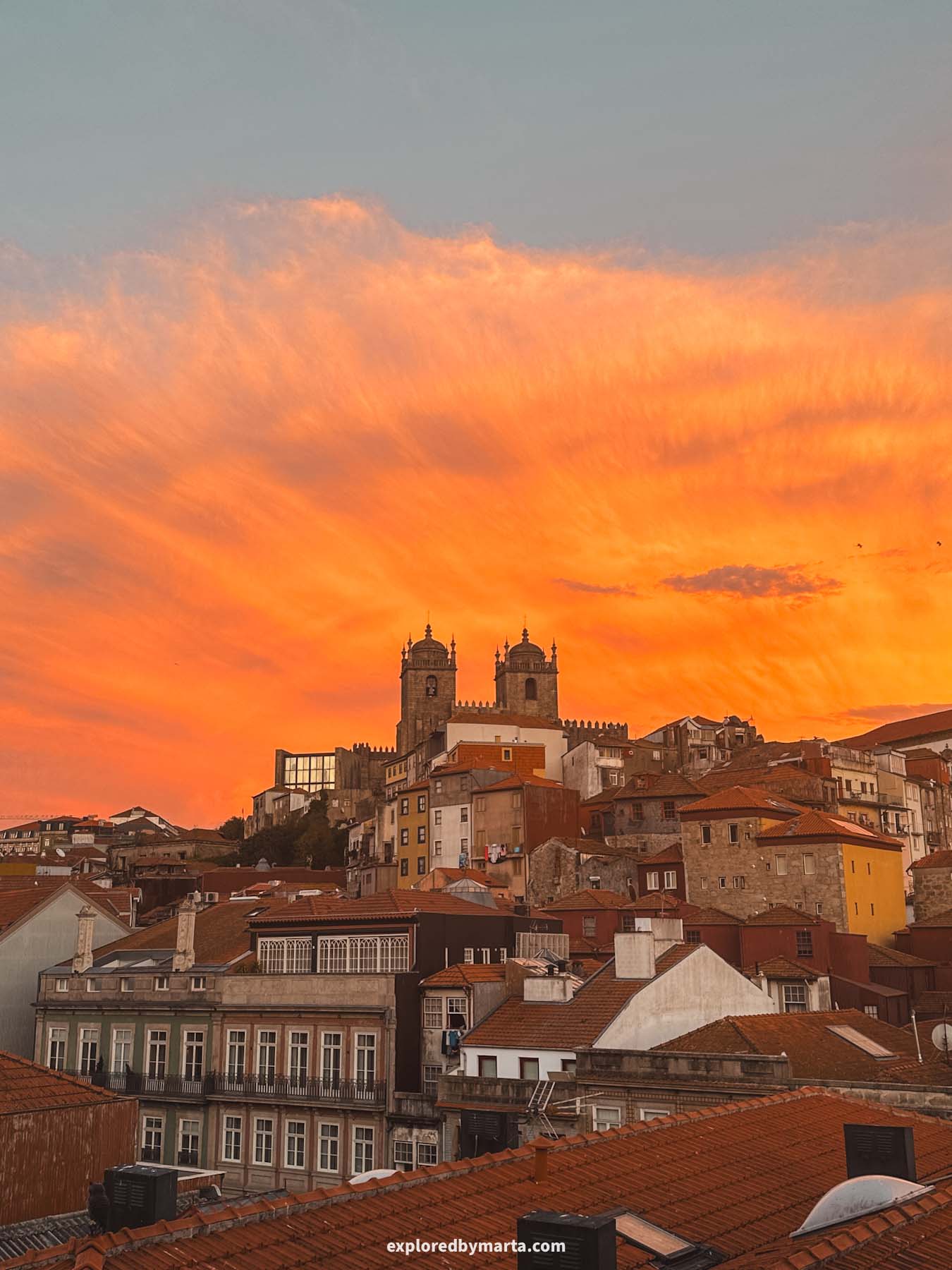
Located along the Douro River in northern Portugal, Porto is the second-largest city and an absolute must-visit place in Portugal.
And, no, I’m not going to take part in the age-old debate about which city is better, Porto or Lisbon, because I loved them both for different reasons and have visited each more times than I can count, haha!
And Porto is definitely a unique character!


We’ve actually spent several weeks in Porto and explored all its bucket list tourist attractions, as well as some of Porto’s many hidden gems usually skipped by the regular crowds.
From its colorful riverside houses in the Ribeira district to its grand churches and viewpoints overlooking the Douro, every corner of Porto has something special. Like the perfect mix of old and new!
One of Porto’s most famous landmarks is the Dom Luís I Bridge, an iron masterpiece that connects Porto with Vila Nova de Gaia across the river. You can walk along the upper deck for amazing views of the city, especially at sunset.

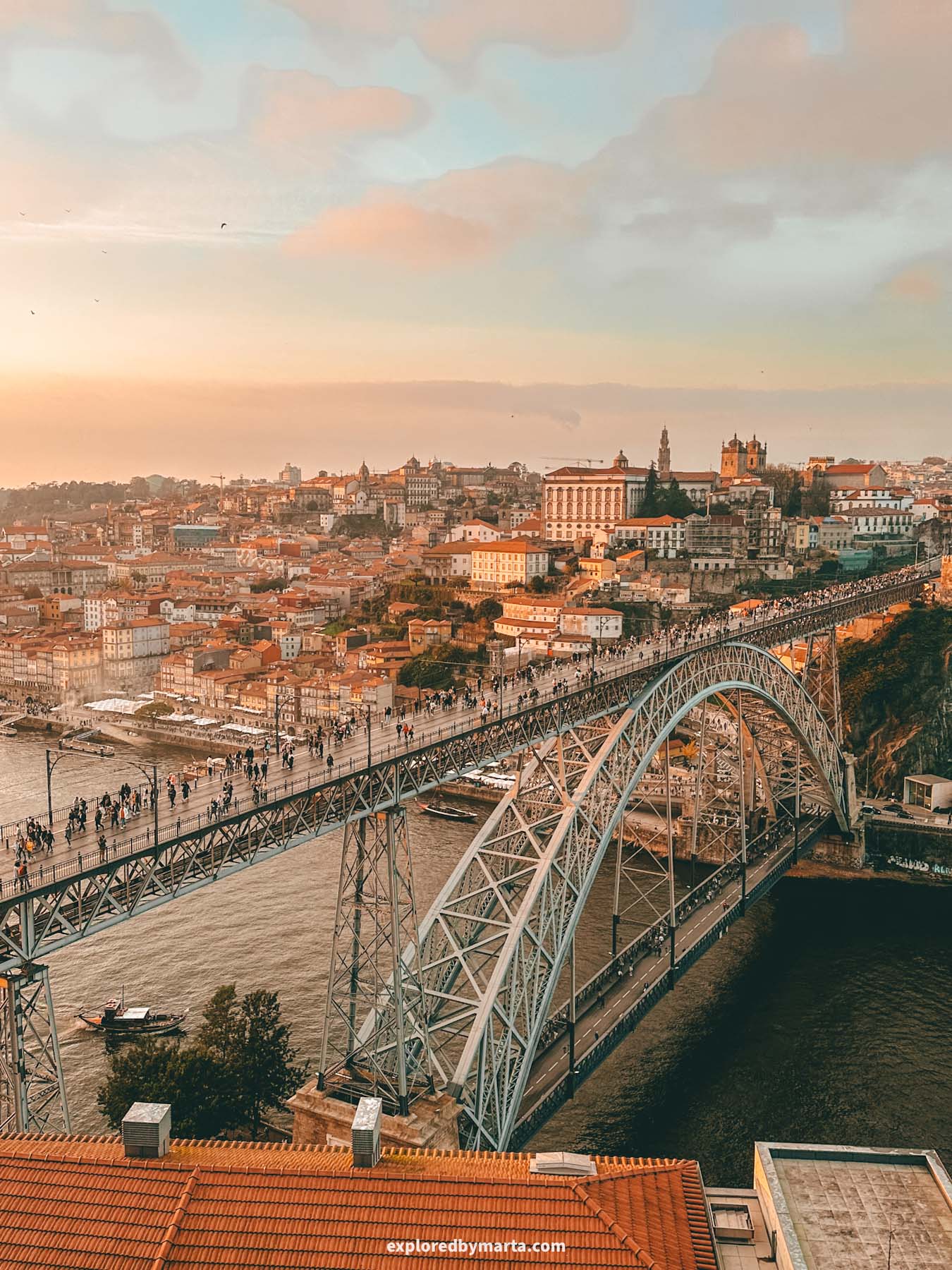
Another highlight is the Clérigos Tower, which offers one of the best viewpoints in the city (yes, you can climb up to the tower! So windy!).
Nearby, don’t miss the famous Livraria Lello, one of the most beautiful bookstores in the world, said to have inspired J.K. Rowling when she lived in Porto.
Another must-visit attraction is the Porto Cathedral, which dates back to the 12th century and is one of the oldest buildings in the city. I loved exploring its tile-covered courtyard and stone rooms and halls!


But Porto is full of charming churches – some feature gorgeous tile-covered walls like the lovely Capela das Almas, but others offer panoramic views from their rooftops like Igreja de São Lourenço.
By the way, if you love Portuguese tiles, you must check out São Bento Railway Station!
Food-wise, you must try a Francesinha, the city’s iconic (and very filling!) sandwich! It’s a strange type of sandwich, but I’m definitely not complaining, haha.
Porto is a city that captures your heart from the moment you arrive. There’s an unbeatable charm to this place, so I really hope you get to visit Porto and see and feel it for yourself!
3. Sintra, town of the fairytale palaces

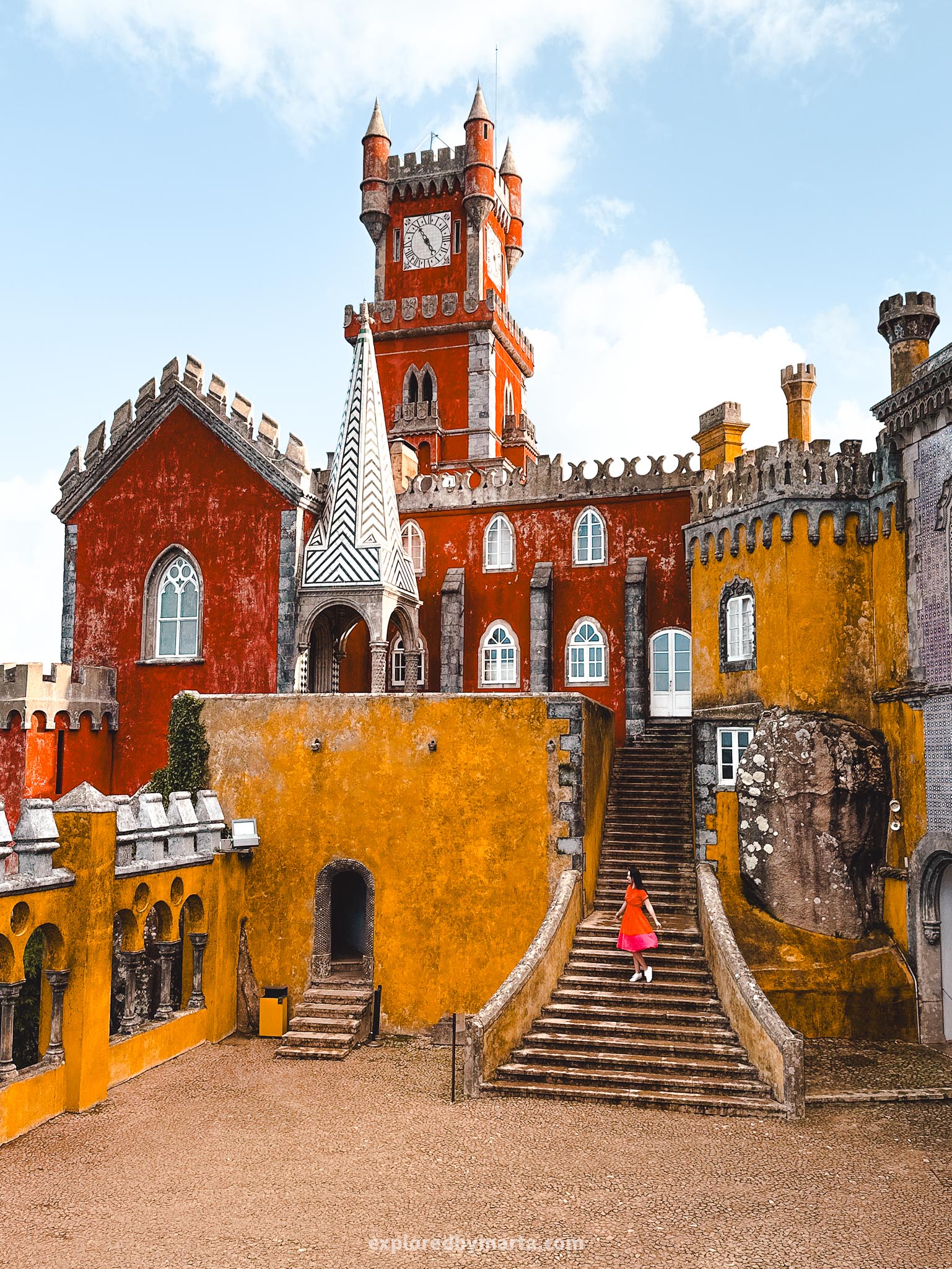
The fairytale town of Sintra is one of the most iconic places to visit in Portugal. Portuguese royalty has favored this dreamy place since the Middle Ages due to its picturesque setting, lush forests, romantic architecture, and fairytale palaces.
Is it the most magical place on Earth? I don’t know. It could be.
Located just 40 minutes from Lisbon, Sintra is the perfect destination for a day trip from Portugal’s capital! I’ve been to Sintra multiple times, and the last time we spent over a week there. You could easily spend an entire day or two exploring the palaces, gardens, and scenic viewpoints.

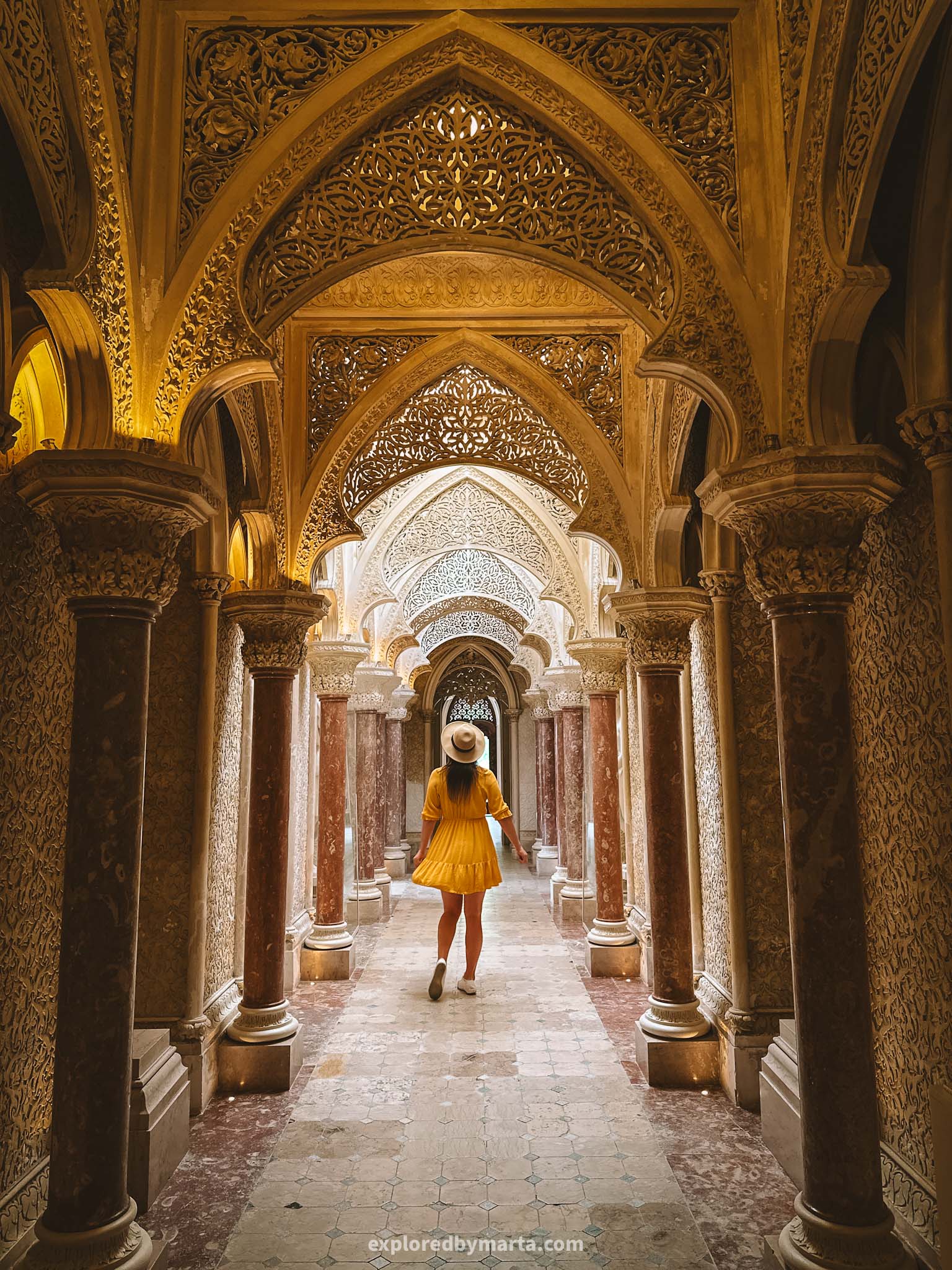
The most famous attraction in Sintra is Pena Palace, one of the Seven Wonders of Portugal. Its vibrant colors, tiled facades, and sweeping views over the Atlantic make it the most visited landmark in Portugal. Don’t forget to check out the lush Parque da Pena surrounding it!
Another must-see is Quinta da Regaleira, one of the most mysterious places in Portugal. This romantic palace complex is famous for its underground tunnels, waterfalls, and the magical Initiation Well, a spiral staircase descending deep into the ground.

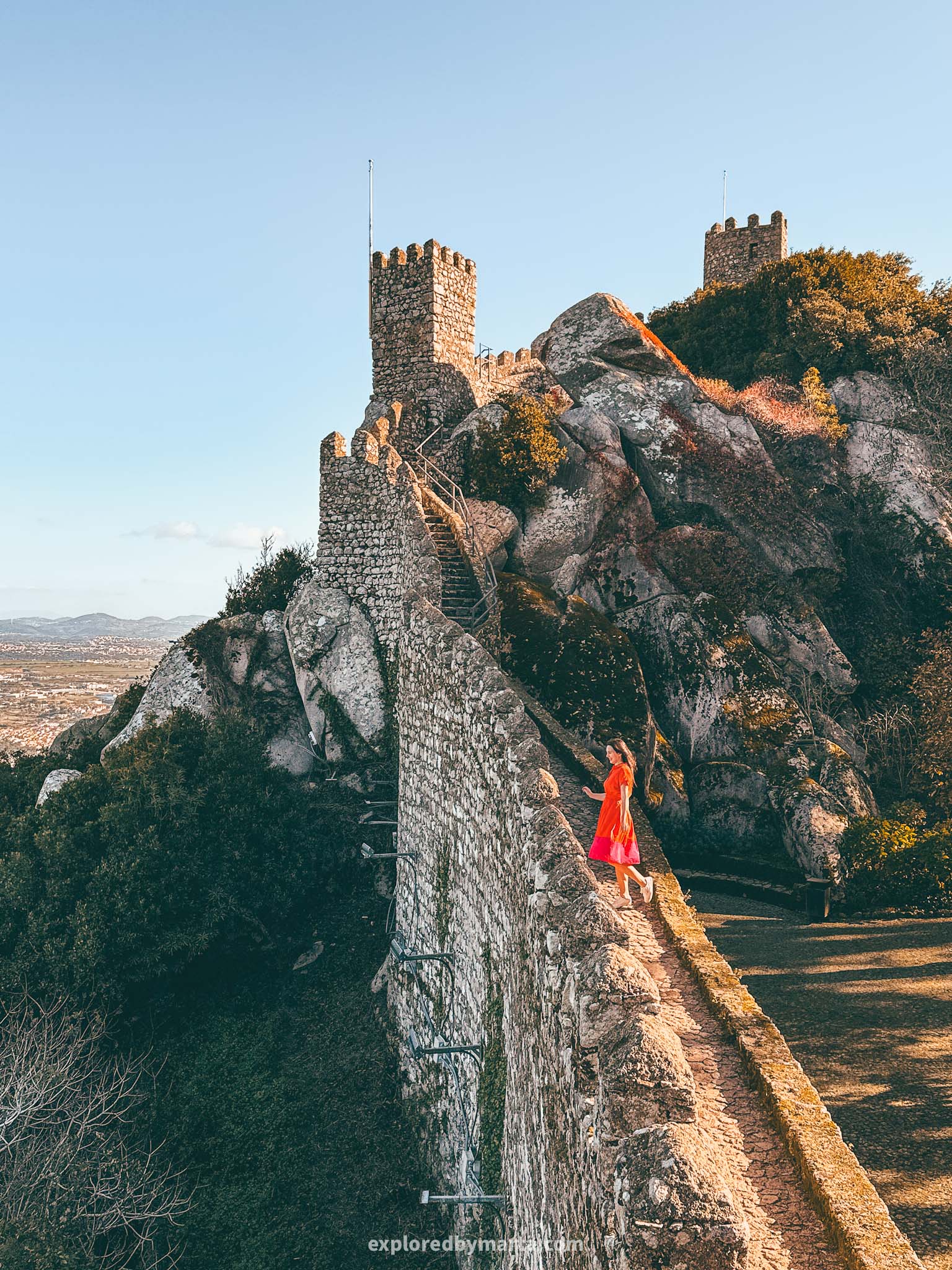
Also, don’t miss the Moorish Castle (Castelo dos Mouros), which offers breathtaking views over the Sintra hills and all the way to the ocean, and is one of the most popular castles in Portugal! The walk along the ancient stone walls is one of the highlights of any visit to Sintra!
If you will, you can also stop by the National Palace of Sintra in the town center, recognizable by its twin white chimneys, as well as the Monserrate Palace – my personal favorite palace in Sintra!
I know, it’s a lot of castles and palaces, but this is what Sintra is made of! After exploring, take a break in the town’s historic center, where you’ll find charming cafés and pastel-colored houses. And make sure to try Sintra’s traditional pastries – the famous pillow pastries, travesseiros!
4. Guimarães, the birthplace of Portugal
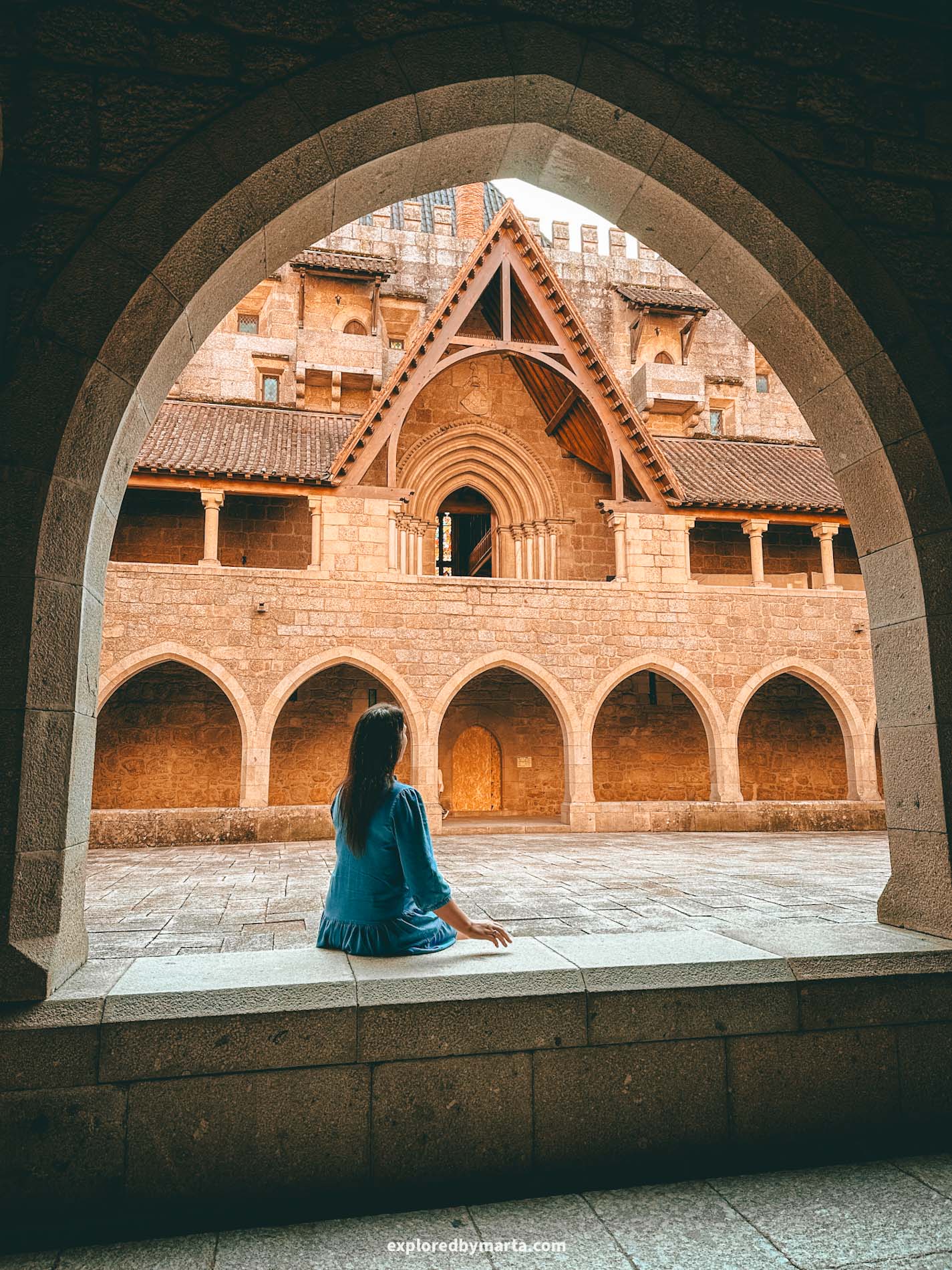
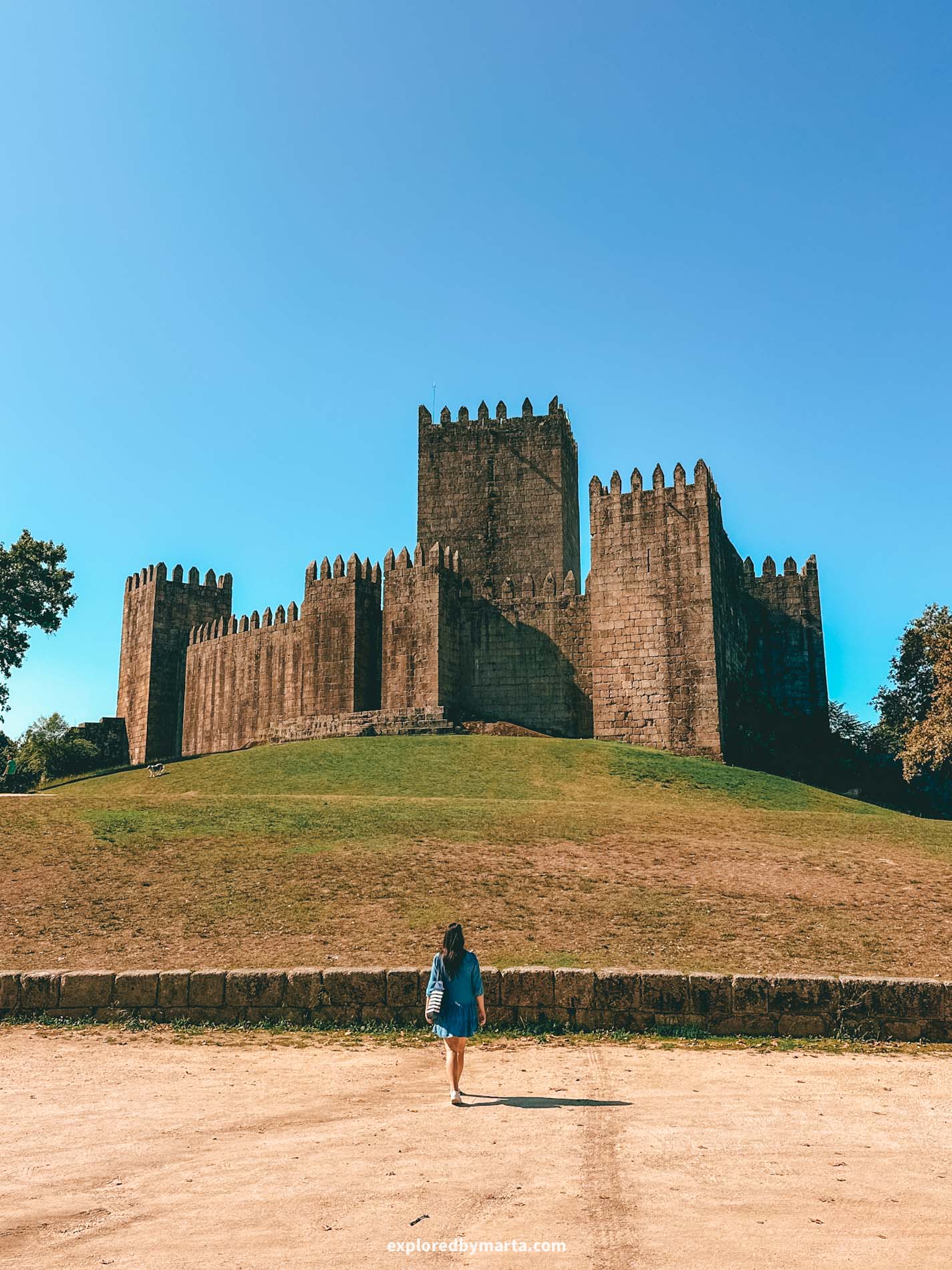
Guimarães is an old city in Northern Portugal, and definitely one of my favorites! It is often called the ‘birthplace of Portugal,’ because this historic place is where Afonso Henriques, the first King of Portugal, was born, and where the foundation of the country began.
Located just an hour away from Porto, Guimarães is one of the best day trips you can take from Porto. We visited Guimarães as part of our road trip around Northern Portugal and spent over a week in this unique place.
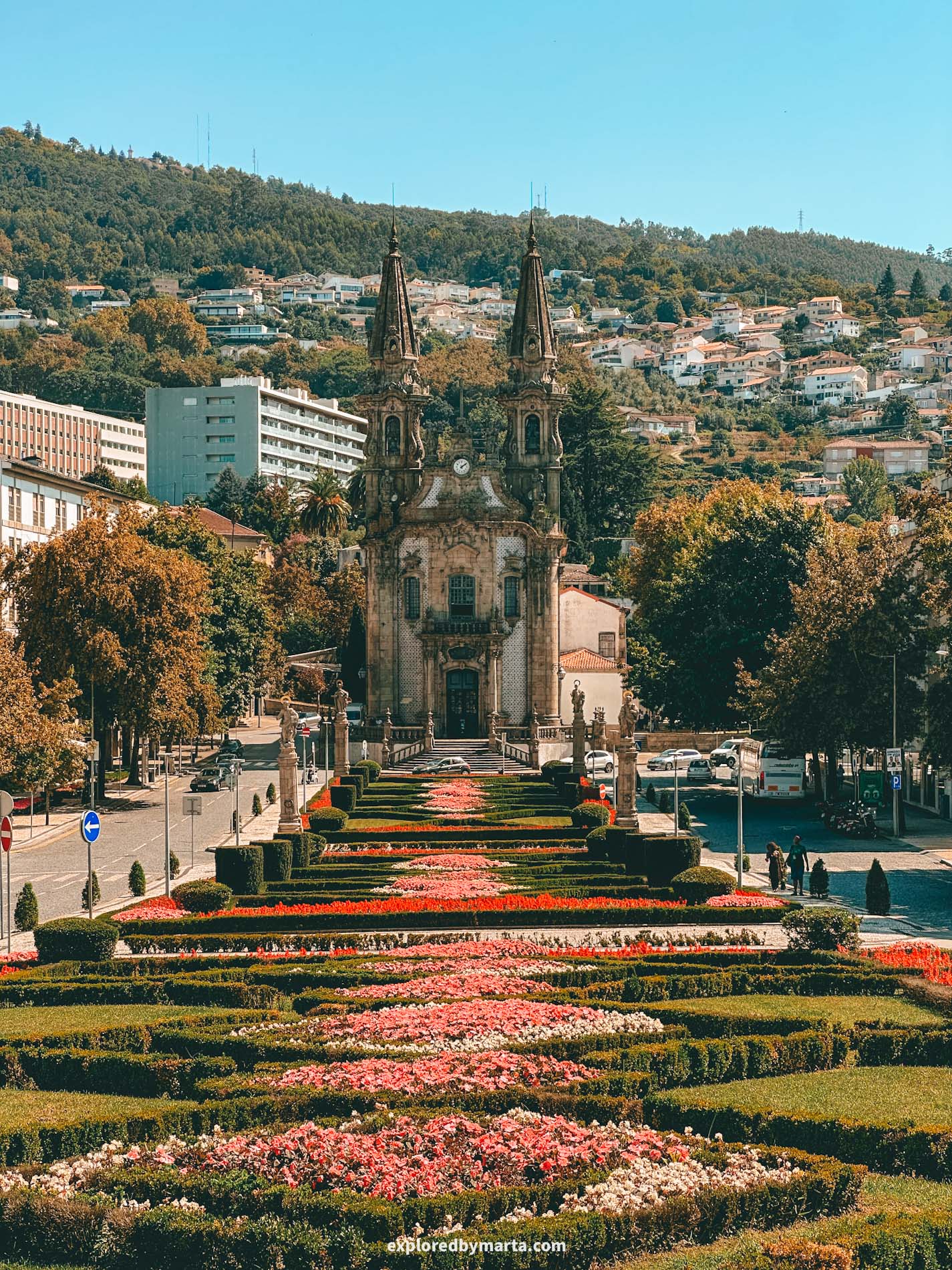
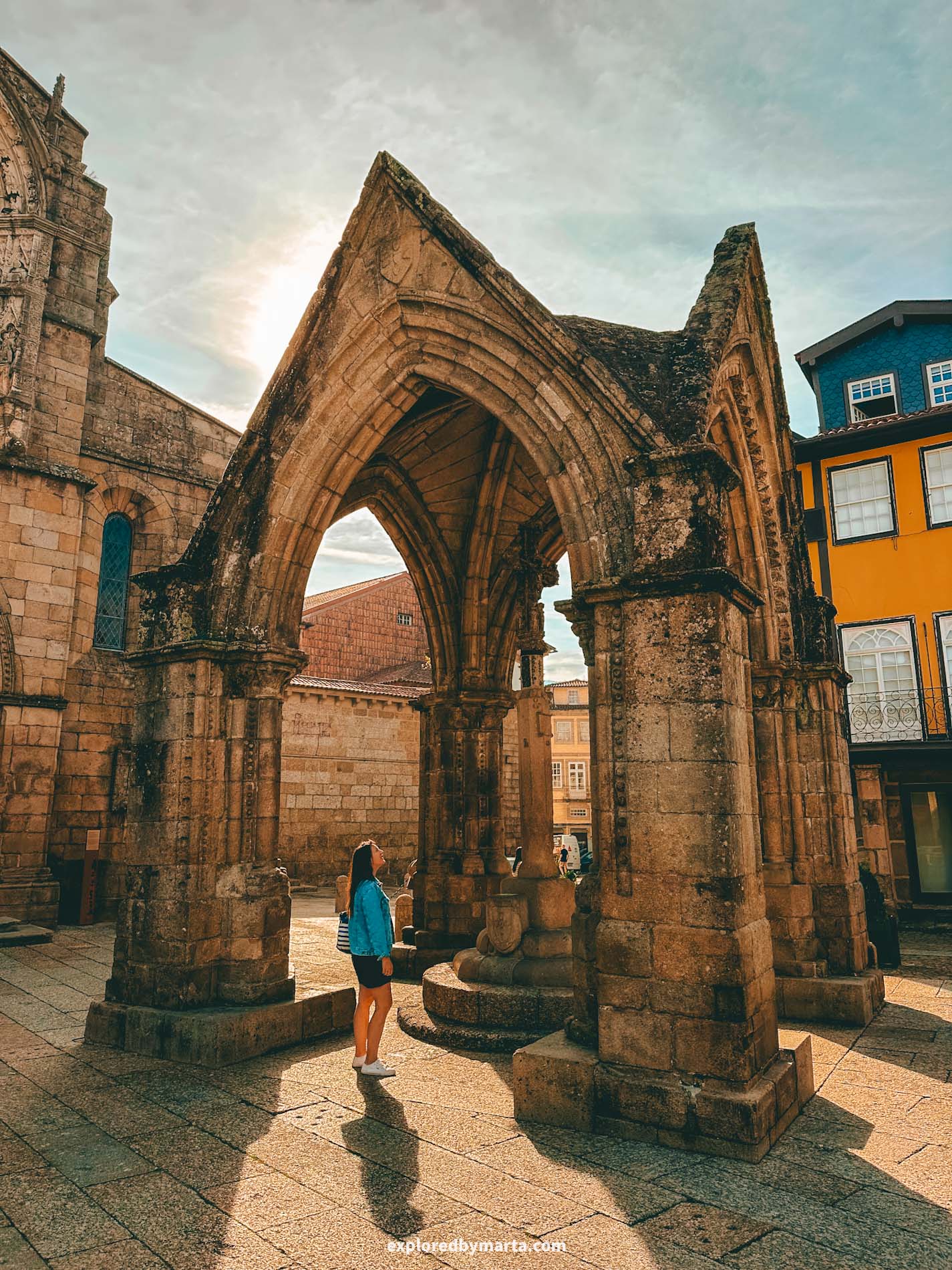
The main landmark of the town is the Castelo de Guimarães, one of the most famous medieval castles in Portugal. Built in the 10th century, it played an important role in defending the region and later became the birthplace of the Portuguese nation.
Just next to the castle stands the Palace of the Dukes of Bragança, a stunning 15th-century palace that once served as the residence of the Dukes of Bragança. It was one of my favorite places we visited in Guimarães, especially its charming courtyard!
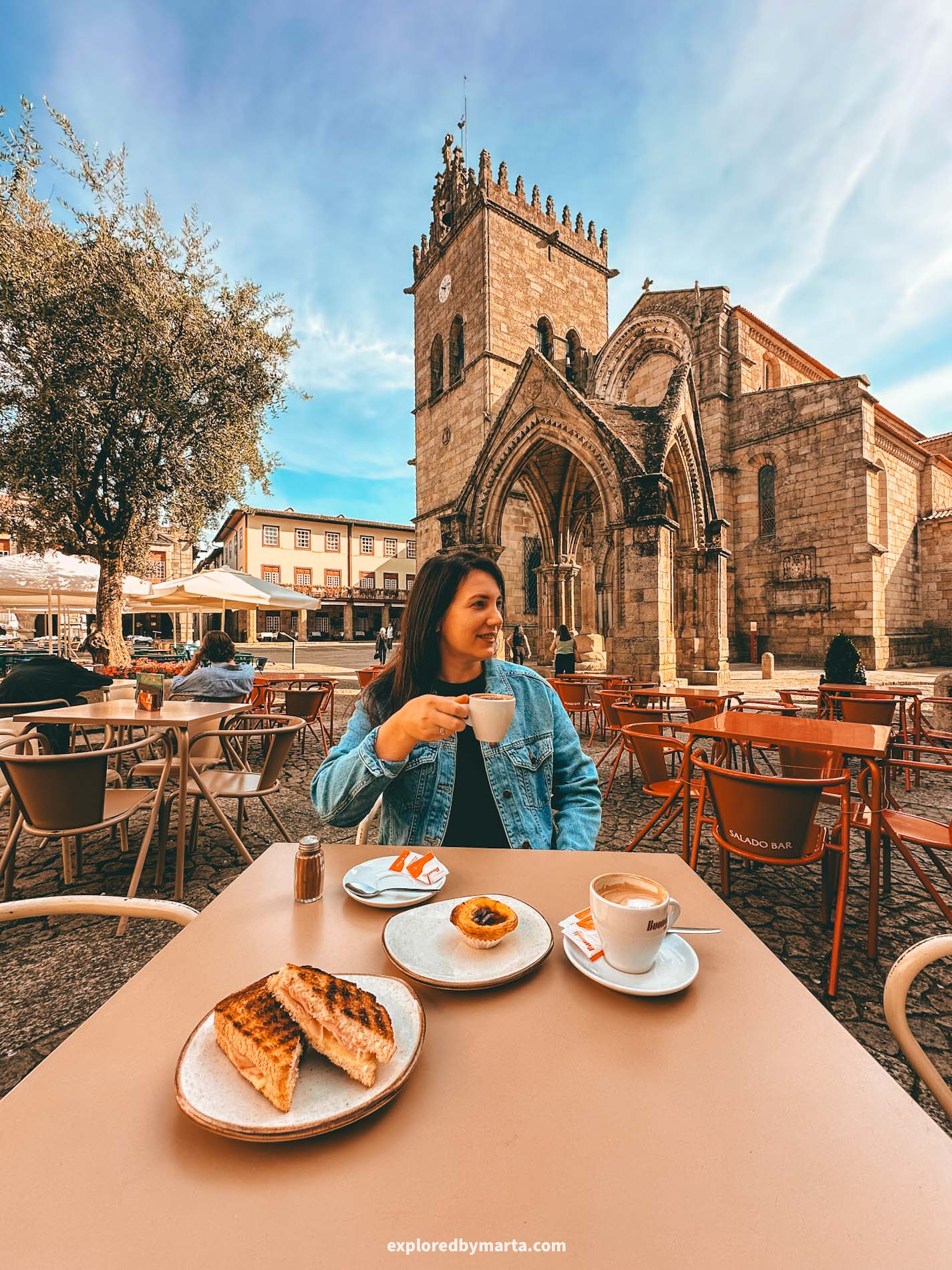

Other must-see places in Guimarães include the Igreja de São Miguel do Castelo, a small chapel said to be where Afonso Henriques was baptized, and Largo da Oliveira, one of the prettiest squares in Portugal, boasting Gothic arcades and historic buildings.
Also, don’t forget to stop by the striking Largo da República do Brasil garden and walk along the top of the medieval walls of Guimarães. Guimarães is small enough to explore in one day, yet full of fascinating history and charm. I’m glad we stayed there longer!
5. Braga, home to the famous Bom Jesus do Monte
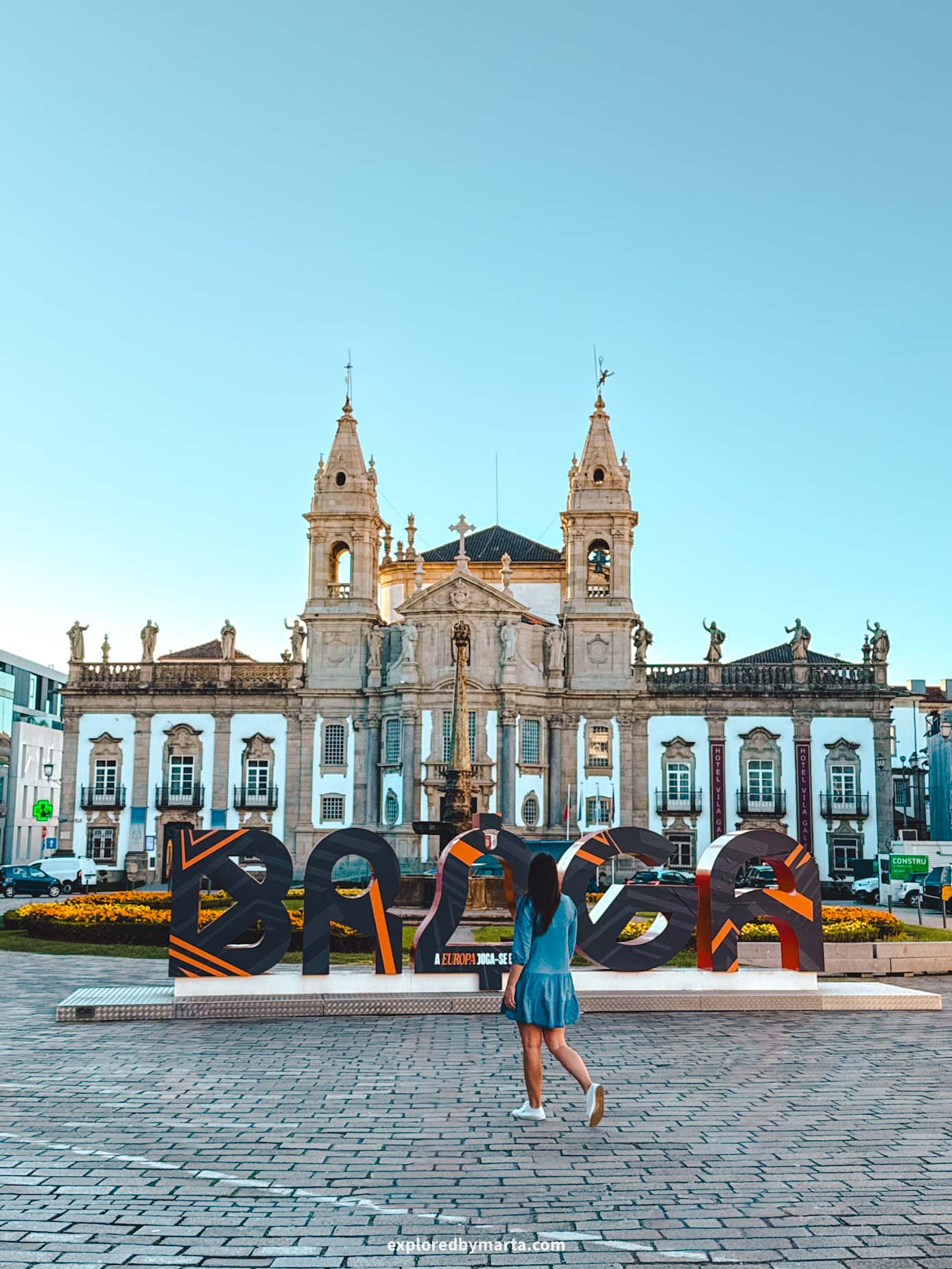
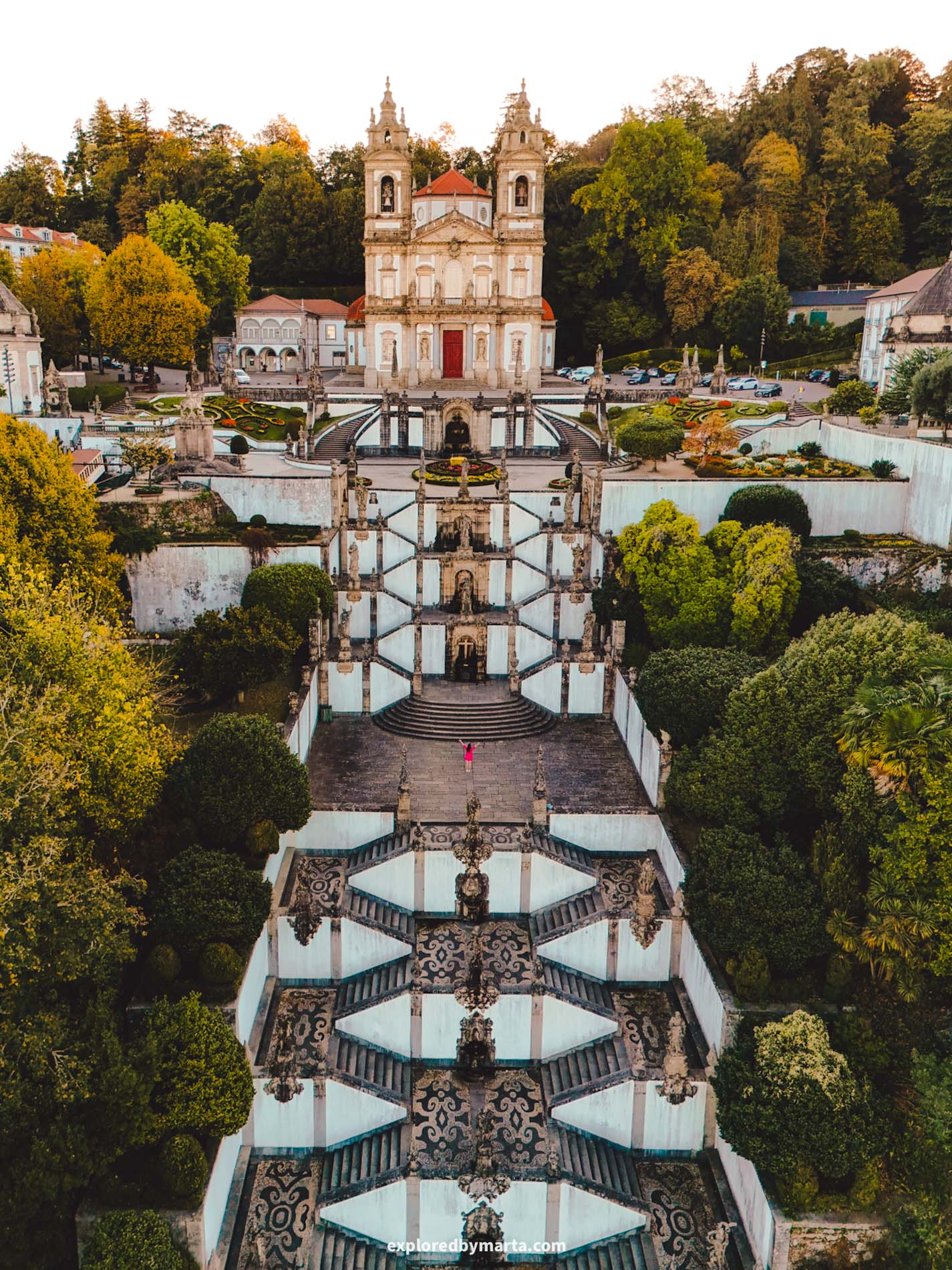
Braga is one of the oldest and most iconic cities in Portugal, often called the ‘Rome of Portugal’, because of its many churches and deep religious history.
Located just an hour away from Porto, Braga is another perfect destination for a day trip from Porto. We visited during our road trip through Northern Portugal and ended up staying for over a week because there was simply so much to see and do!
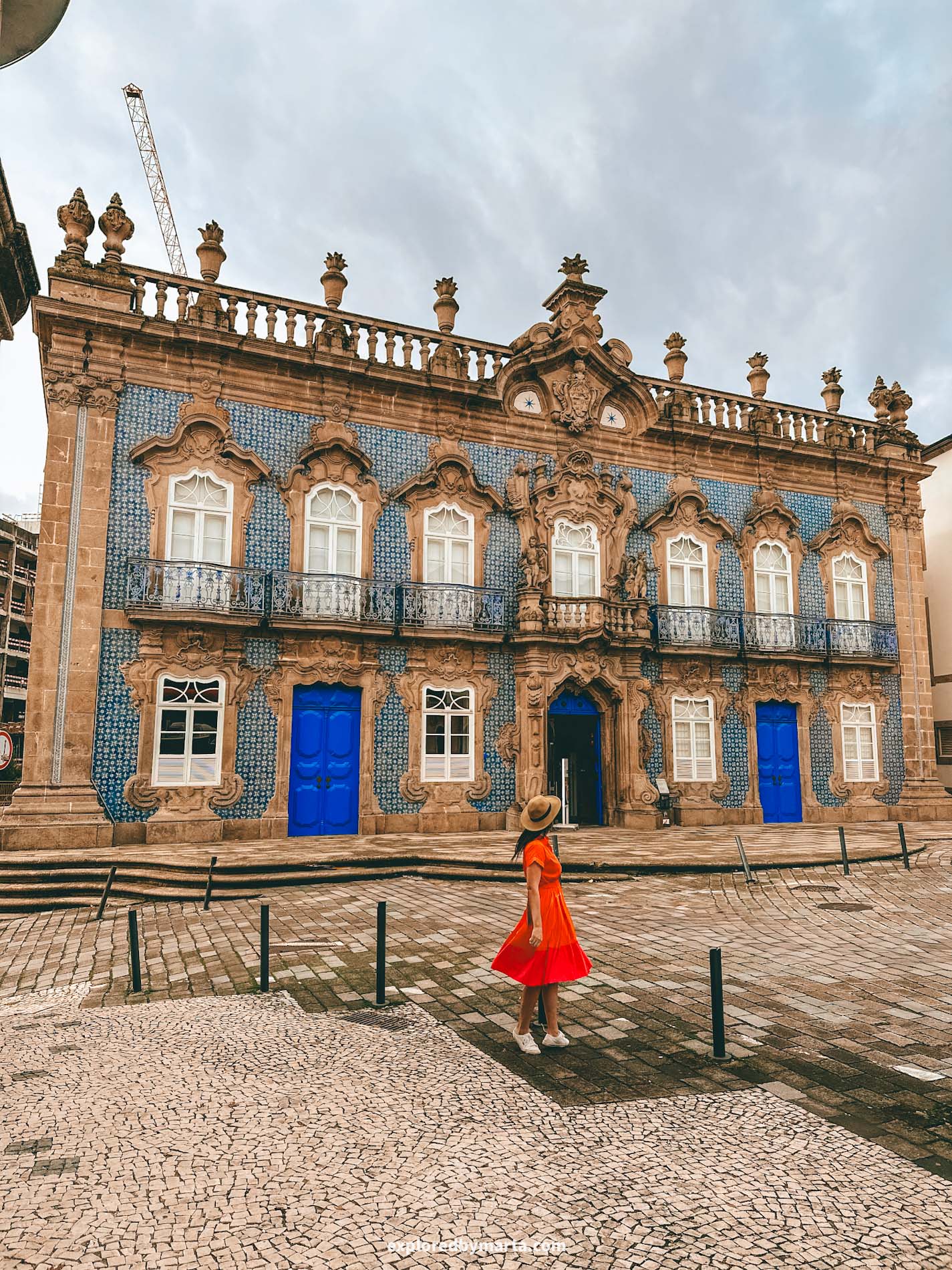

Probably the most famous landmark in Braga (and in Portugal) is the Bom Jesus do Monte Sanctuary, a UNESCO World Heritage Site and one of the most beautiful pilgrimage sites in Portugal.
The sanctuary on a hill is known for its iconic baroque staircase, which is lined with fountains and statues, and offers stunning views over the city.

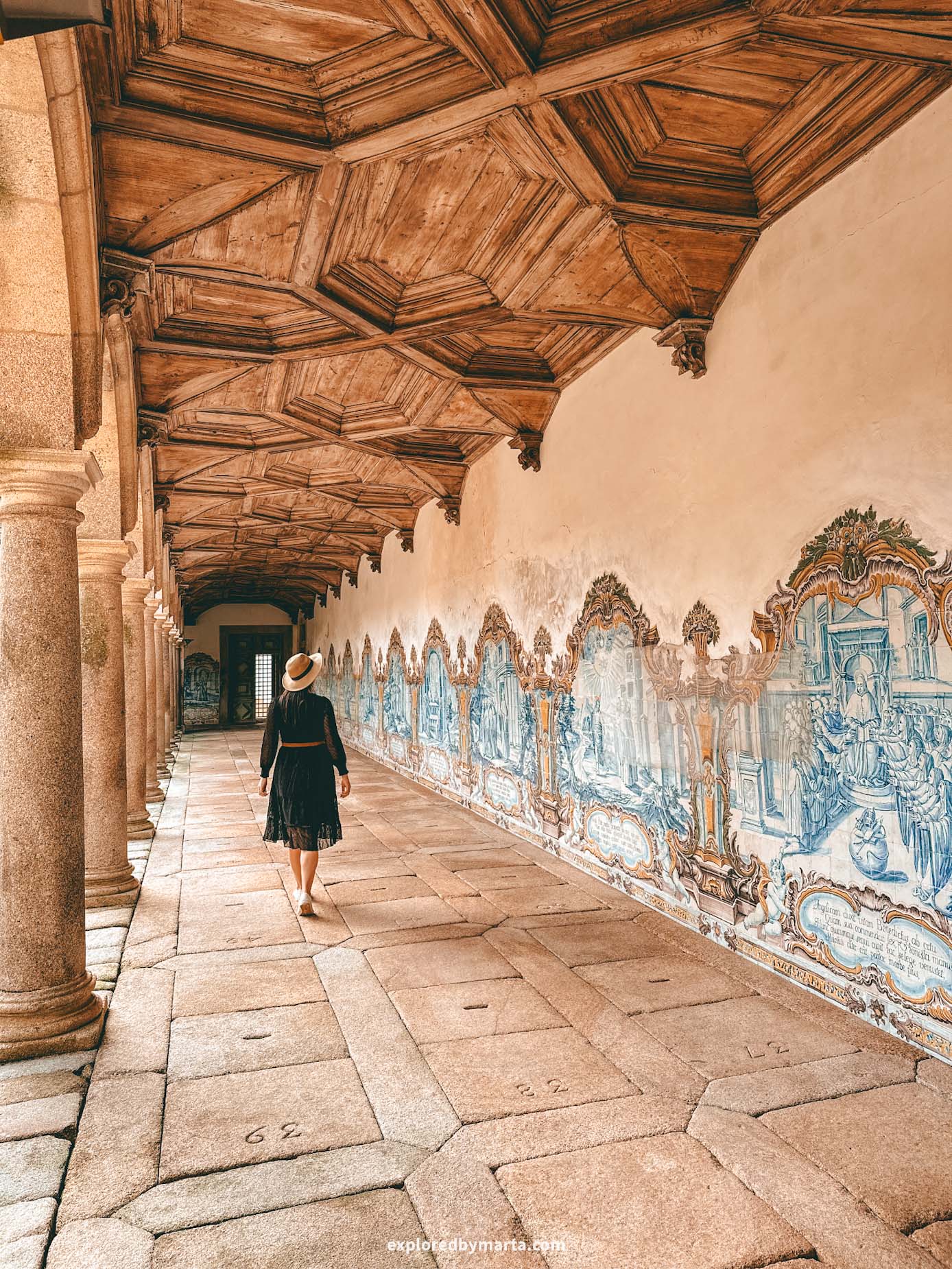
Back in the city center, don’t miss the Sé de Braga, the oldest cathedral in Portugal, which dates back to the 11th century. But next to Braga’s main square, Praça da República, you will find the Jardim da Avenida Central, a stunning avenue full of flowerbeds.
Braga is also home to the Arco da Porta Nova, one of the city’s most photographed landmarks, and the beautiful Jardim de Santa Bárbara garden. Strolling through Braga’s many city gardens was one of my favorite things we did in Braga.
It is definitely one of those places that stays with you long after you’ve left!
6. Évora, Portugal’s iconic Museum-City

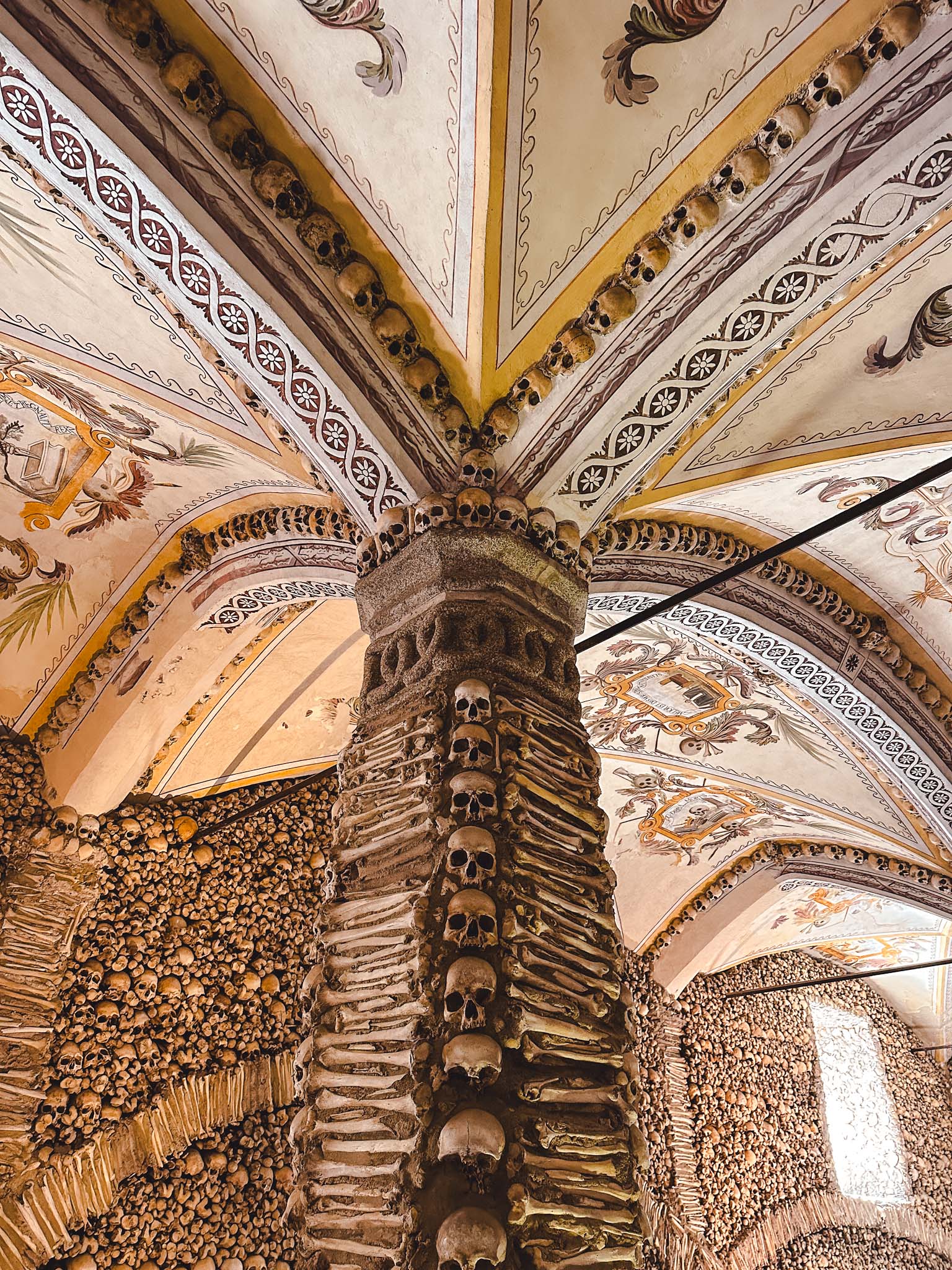
Évora, the capital of the Alentejo region, is one of Portugal’s most beautiful and historic cities! It is called the Museum-City because the whole Historic Center of Évora is a UNESCO World Heritage. It’s basically like walking in an open-air museum!
We came here during the summer, so we had to push through the summer heat (it got pretty HOT!), but the city’s beauty made it all worth it.
Évora feels slower-paced compared to Lisbon or Porto, but that’s part of its charm. It is more remote and sees much fewer visitors than the coastal cities.


One of the city’s most iconic landmarks is the Templo Romano de Évora (Roman Temple of Évora), also known as the Temple of Diana. It dates back to the 1st century AD and is one of the best-preserved Roman ruins on the Iberian Peninsula.
Another must-visit place in Évora is the 16th-century Capela dos Ossos, or the famous Chapel of Bones. This unique chapel is pretty unforgettable, because it is decorated with thousands of human bones and skulls. It’s both eerie and fascinating, haha!
Nearby, you’ll find the impressive Évora Cathedral, or Sé de Évora, which is known as the biggest medieval cathedral in Portugal!
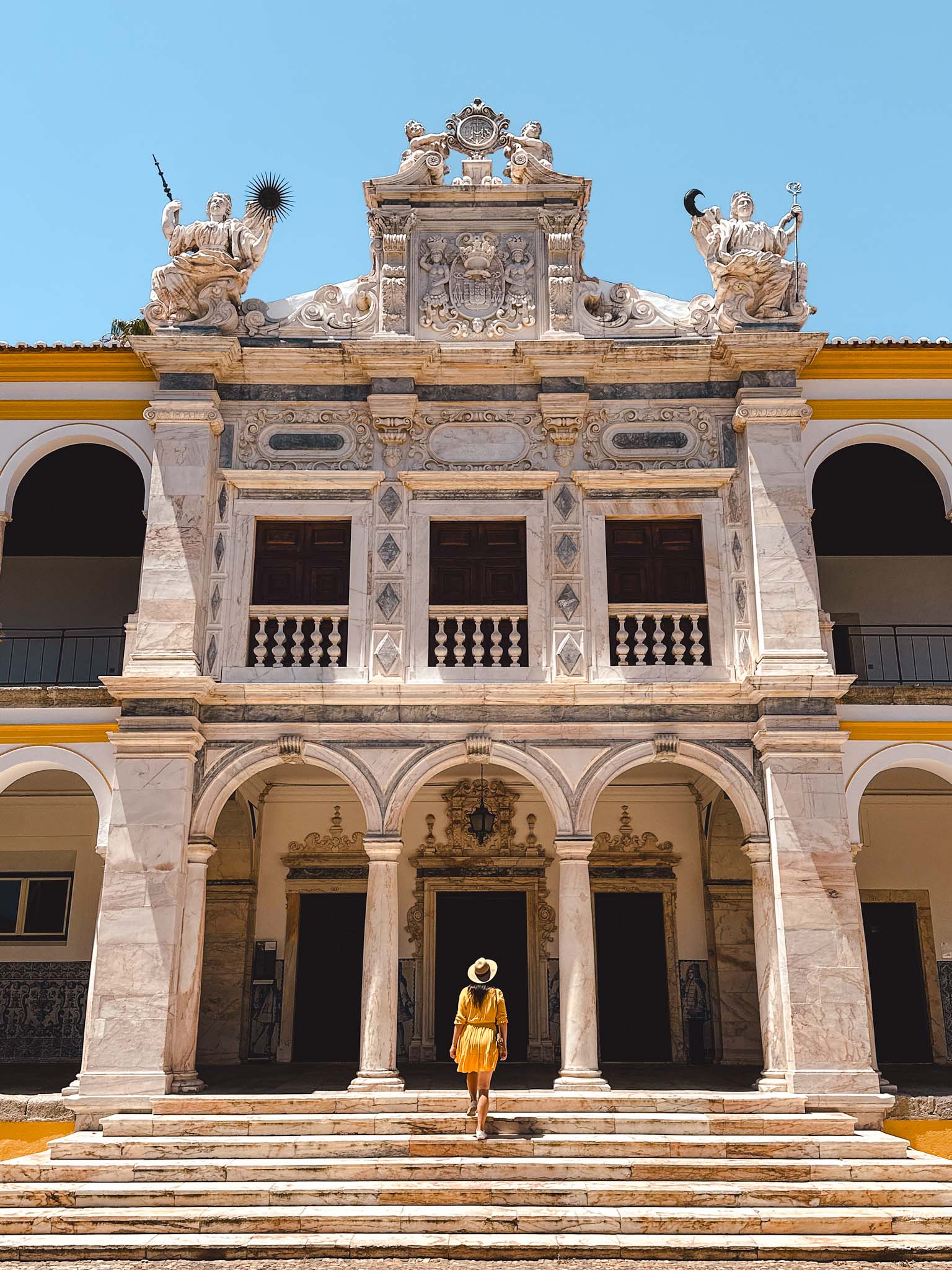

Once there, do not miss the opportunity to climb up to the cathedral’s roof for the best panoramic views of the city and the surrounding countryside! I love seeing places from above, so this was my favorite thing we did in Évora!
Other highlights in Évora include the Praça do Giraldo, the city’s main square lined with cafés and historic buildings, and the University of Évora, founded in the 16th century and one of the oldest in Portugal.
Because we came during the summer, we got to visit the rooms and halls of the university. It was established in the 16th century and thus is the second-oldest university in Portugal. All their classrooms are covered with azulejo tiles!
On the outskirts of the city, pass by the Aqueduto da Água de Prata, a 16th-century Aqueduct that once brought fresh water to the city. Today, there are houses built inside some of the aqueduct arches! Pretty cool!
7. Coimbra, the old capital of Portugal
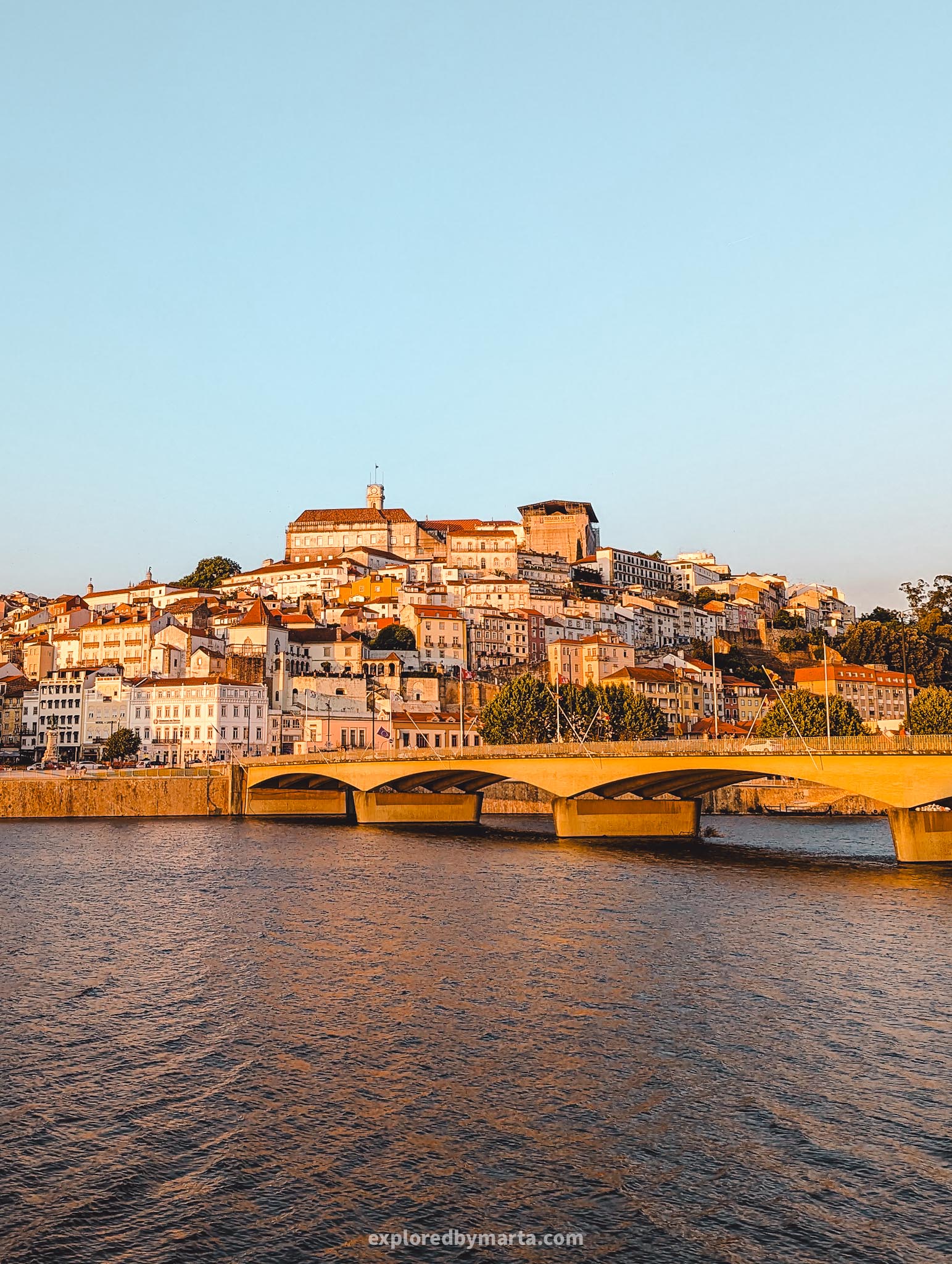
Coimbra, the city of students, is home to the oldest university in Portugal and one of the oldest in Europe. Also, not many people know the fact that Coimbra was the capital of Portugal during the 12th-13th centuries, before Lisbon took over.
We actually spent several weeks living in this city. The old town sits on a hill next to the scenic Mondego River, and long evening strolls along the riverside are some of my favorite memories from our stay in Coimbra.
The main highlight of the city is the University of Coimbra, founded back in 1290. It’s a UNESCO World Heritage Site and one of the most important landmarks in Portugal.


The university complex includes the famous Joanine Library, one of the most stunning libraries in the world! It is decorated with gold-leaf woodwork, frescoed ceilings, and thousands of old books.
Also, don’t miss climbing the university’s Clock Tower, which offers amazing views over the city.
Another must-visit is the Old Cathedral of Coimbra. It truly feels like stepping back into the Middle Ages! If only the walls could speak…Not far away, the New Cathedral and the Santa Cruz Monastery are two more must-visit sites in Coimbra.
The monastery is especially significant, as it holds the tombs of Portugal’s first two kings – Afonso Henriques and his son Sancho I. Such a privilege for such a beautiful and historically significant city!
8. Faro, the capital of the South
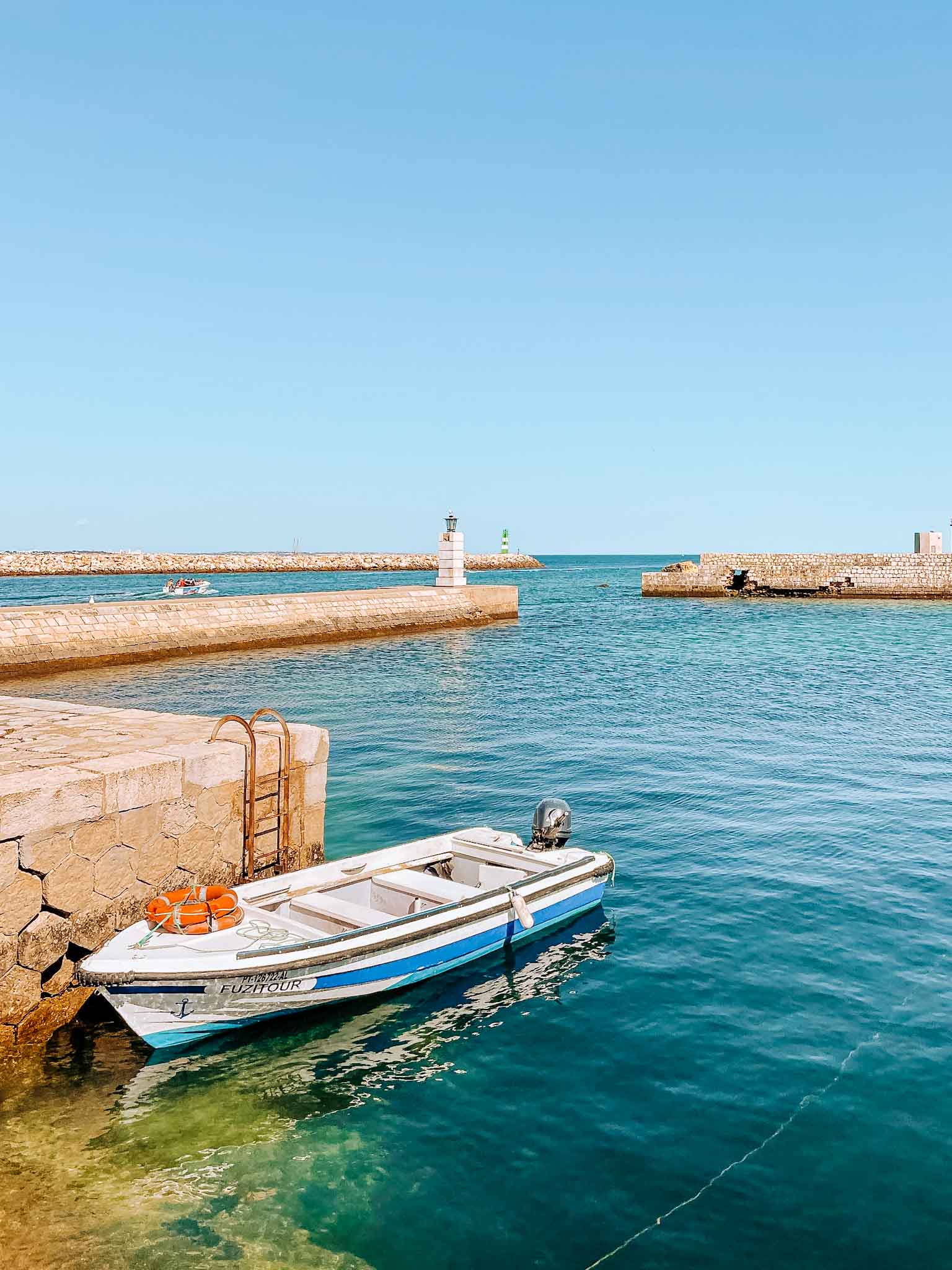
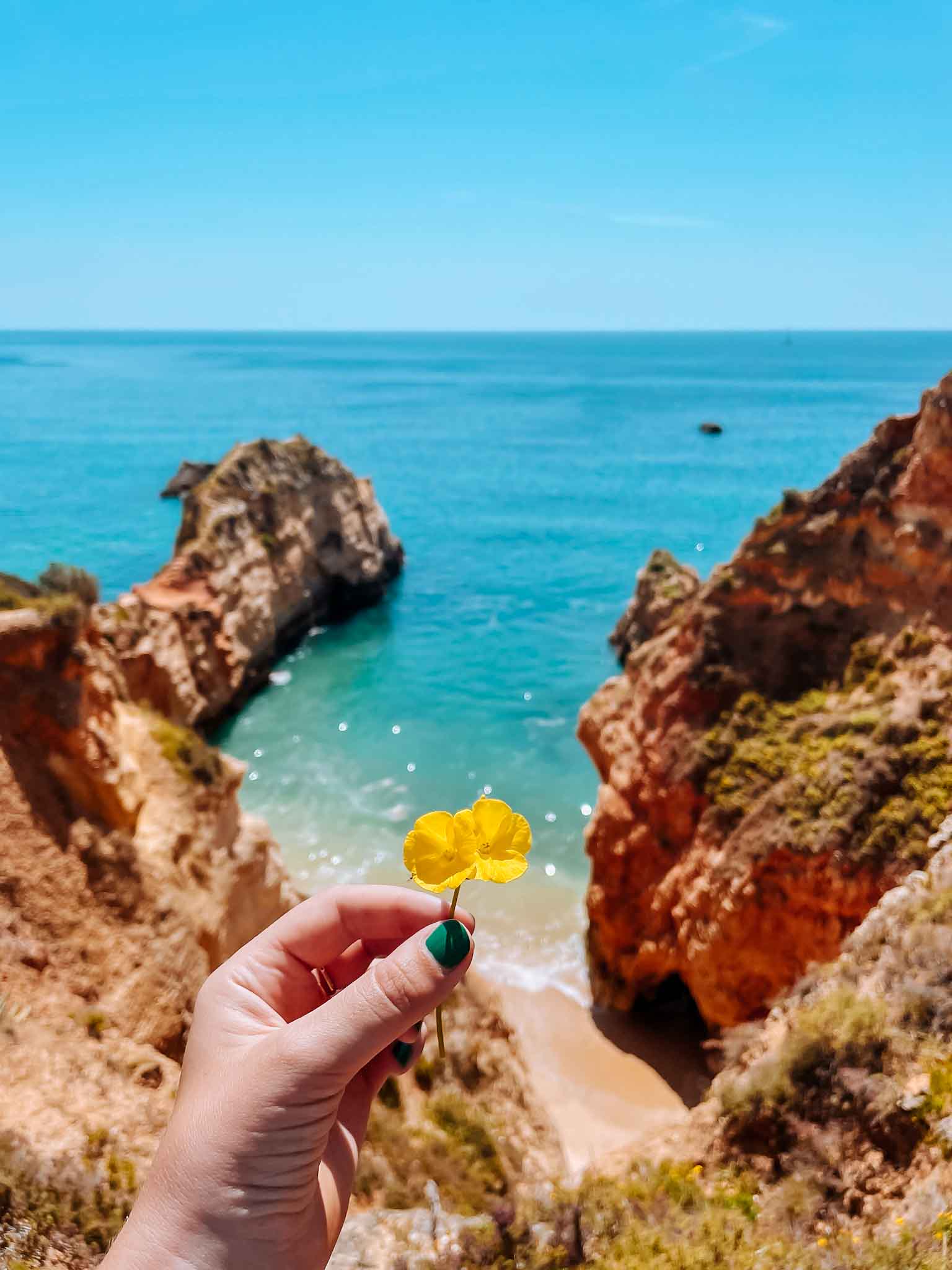
Faro is the capital of Portugal’s Algarve region and is known for its golden sand beaches, charming old town, relaxing coastal atmosphere, and…another chapel of bones, haha! Yes, Faro also has a chapel of bones made with more than a thousand human bones!
The heart of Faro is its historic Old Town, known as Cidade Velha, surrounded by ancient medieval walls. Once you step through the impressive Arco da Vila gate, you’ll find yourself in a maze of cobblestone streets lined with whitewashed houses!
One of the main landmarks in the city is the Faro Cathedral, located in Largo da Sé square. It dates back to the 13th century and combines Gothic, Renaissance, and Baroque styles. If you climb its bell tower, you’ll be rewarded with a stunning panoramic view of the city!
The city also serves as a gateway to the Ria Formosa Natural Park, a place that was voted one of the ‘7 Natural Wonders of Portugal’! You can take a boat trip from the marina to explore the nearby islands, like Ilha Deserta or Ilha do Farol – a bucket list thing to do in the Algarve!
9. Aveiro, the Venice of Portugal

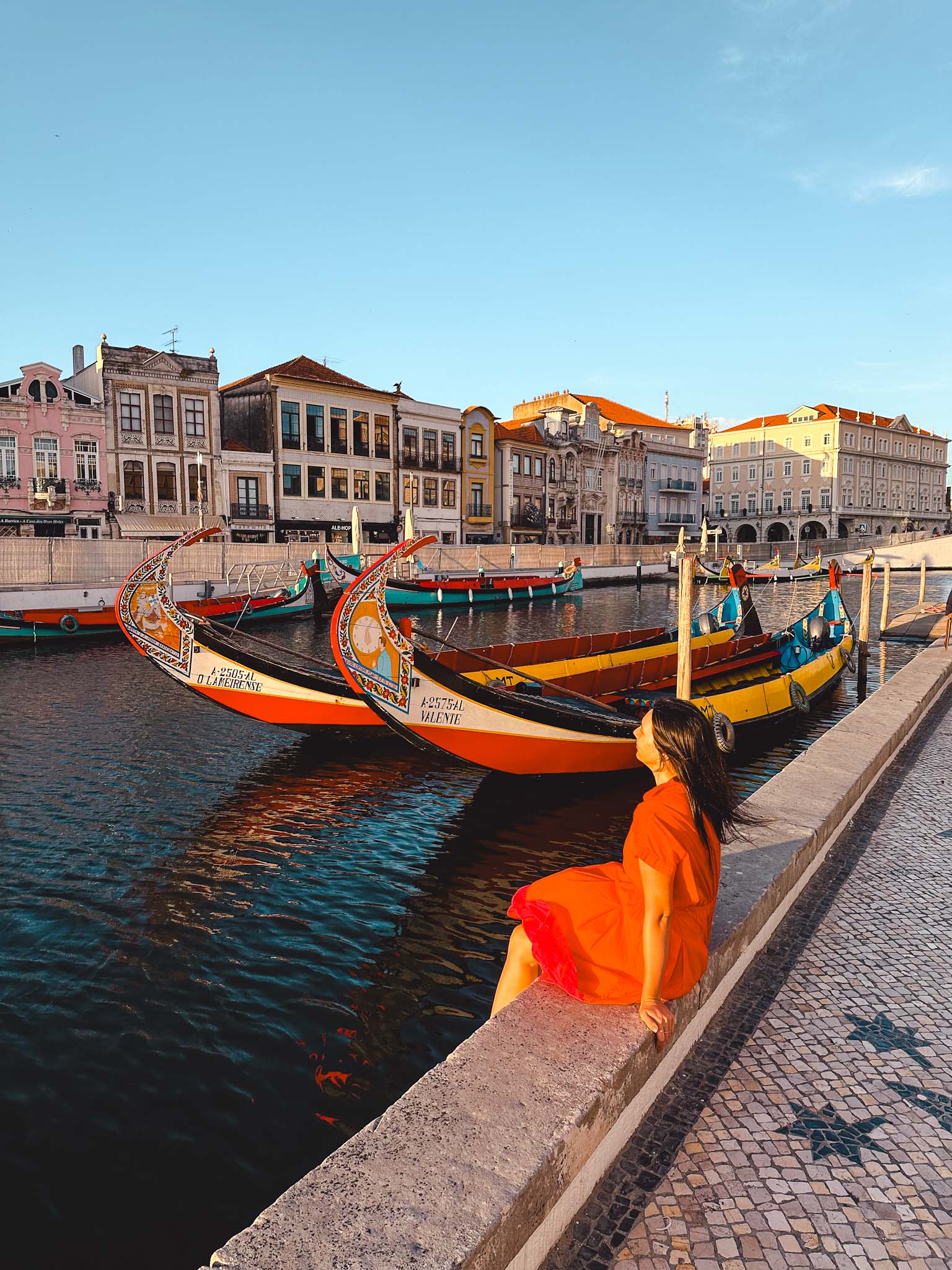
I loved Aveiro! It is definitely one of the top cities to visit in Portugal! Known as the ‘Venice of Portugal,’ Aveiro is one of the most picturesque places in the country!
Aveiro boasts beautiful Art Nouveau buildings and a city center full of water canals, where you can go on boat rides in the iconic moliceiro boats – the town’s traditional wooden boats, similar to gondolas in Venice!
Located just about an hour south of Porto, Aveiro makes for a perfect day trip from Porto. We stayed in this city for a couple of days, exploring everything Aveiro had to offer – from its postcard-perfect architecture to the vast salt flats next to the city!
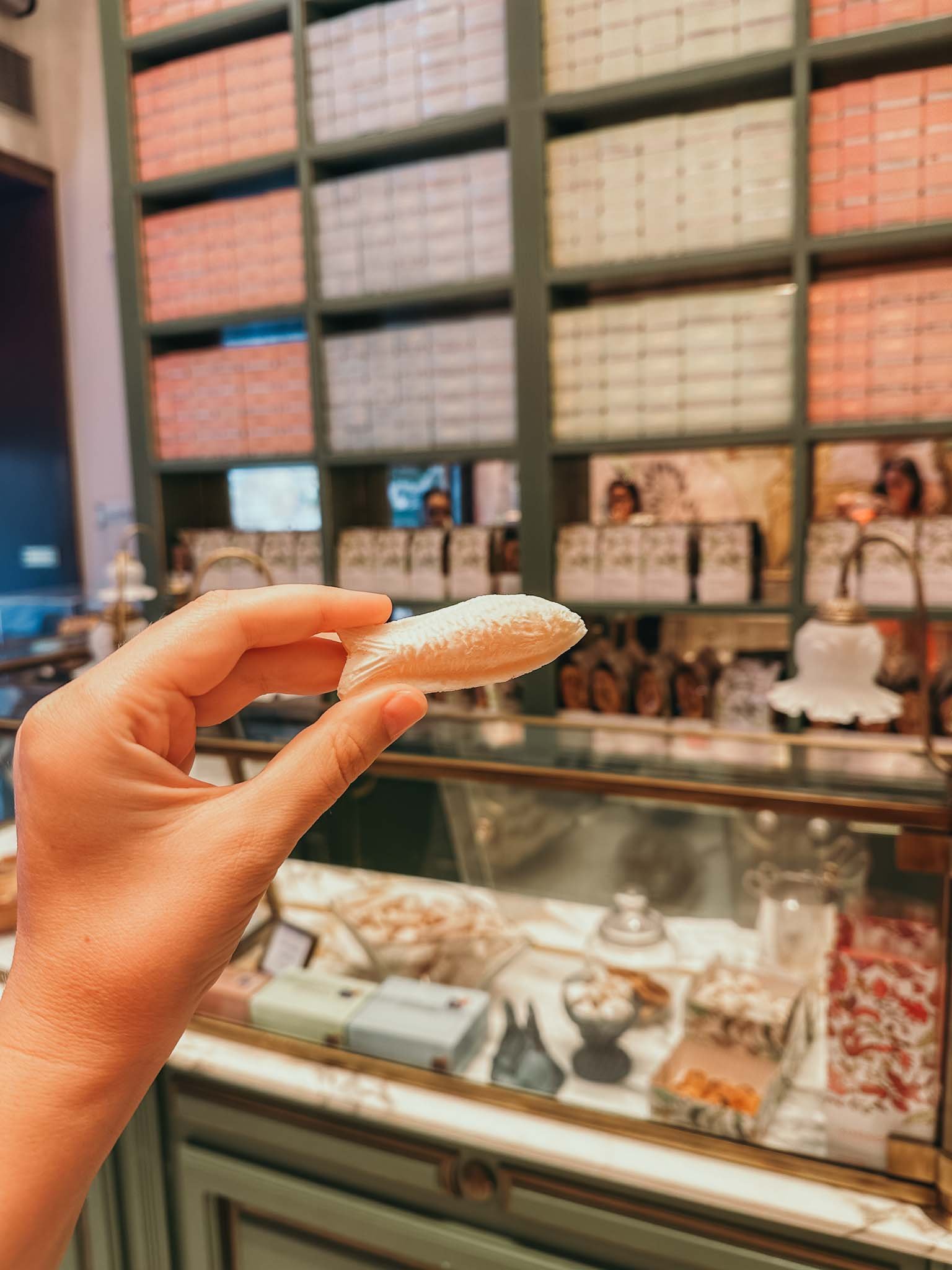

And you simply have to take a boat ride through the city’s canals! These beautifully painted boats were once used to harvest seaweed from the lagoon, but today it is one of the best ways to see the city!
If you love sweets, you absolutely have to try ovos moles, Aveiro’s most iconic sweet treat. They are made of a soft, paste-like mixture of egg yolk and sugar, encased in an airy rice paper shell shaped like a fish or a seashell. Just stop by a sweets shop and try one!
However, my favorite place in Aveiro was actually a short drive from the center, and it was Costa Nova, a charming beachside village famous for its candy-stripped houses!
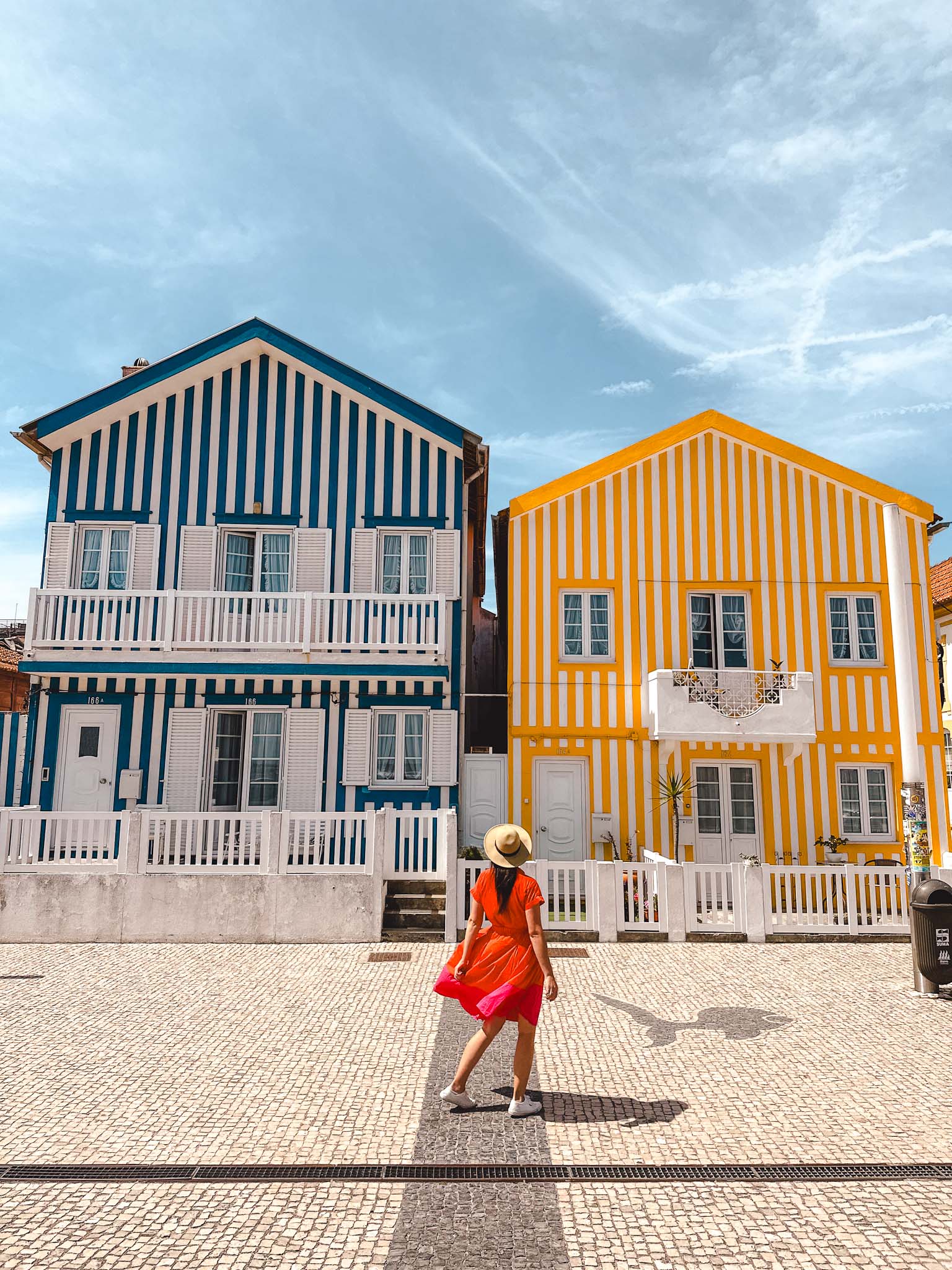

These colorful houses (they are called ‘palheiros’) were once used by fishermen to store their fishing gear. Now, some of them are residential properties. I highly recommend stopping by this unique, postcard-perfect place before you stroll to the beach.
We took way too many photos of those cute houses, haha!
Aveiro is one of those places that is full of character and is very relaxing at the same time. The city is near Porto, so it receives quite a few tourists during the day, but there’s something special about this place that makes you want to stay a little longer. If you can, do it!
10. Nazaré, the seaside town with the giant waves

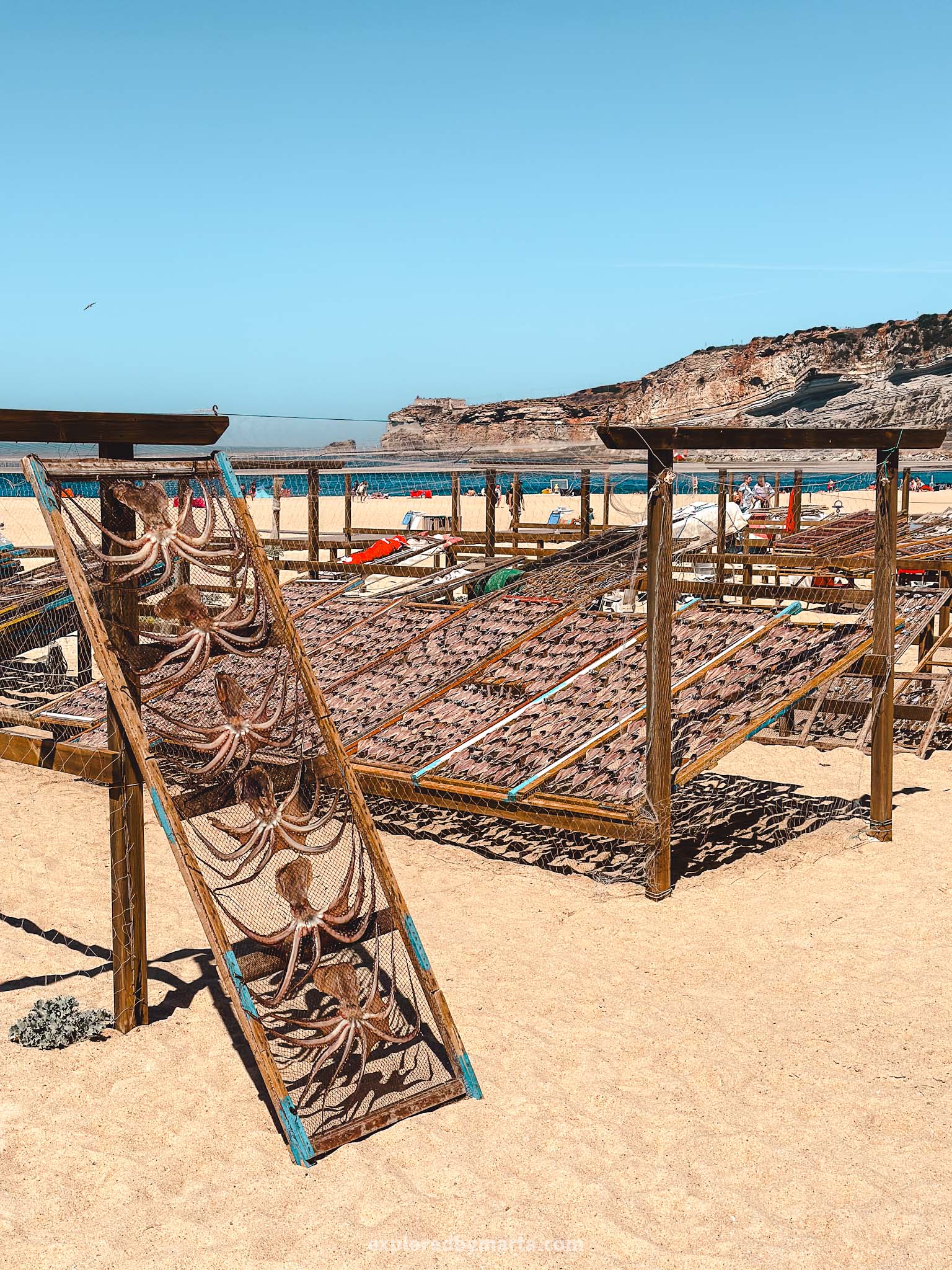
Have you heard about the giant waves of Nazaré?
Nazaré is one of Portugal’s most fascinating coastal towns, famous for its dramatic seaside cliffs, fishing traditions, and, of course, the biggest waves ever surfed! I loved this charming coastal town, and there are plenty of things to do in Nazaré!
The town is split into two parts – there’s the lower town down by the Praia da Nazaré beach, and then there’s the upper town or sítio sitting on a high coastal cliff. This is where you go to watch the waves!
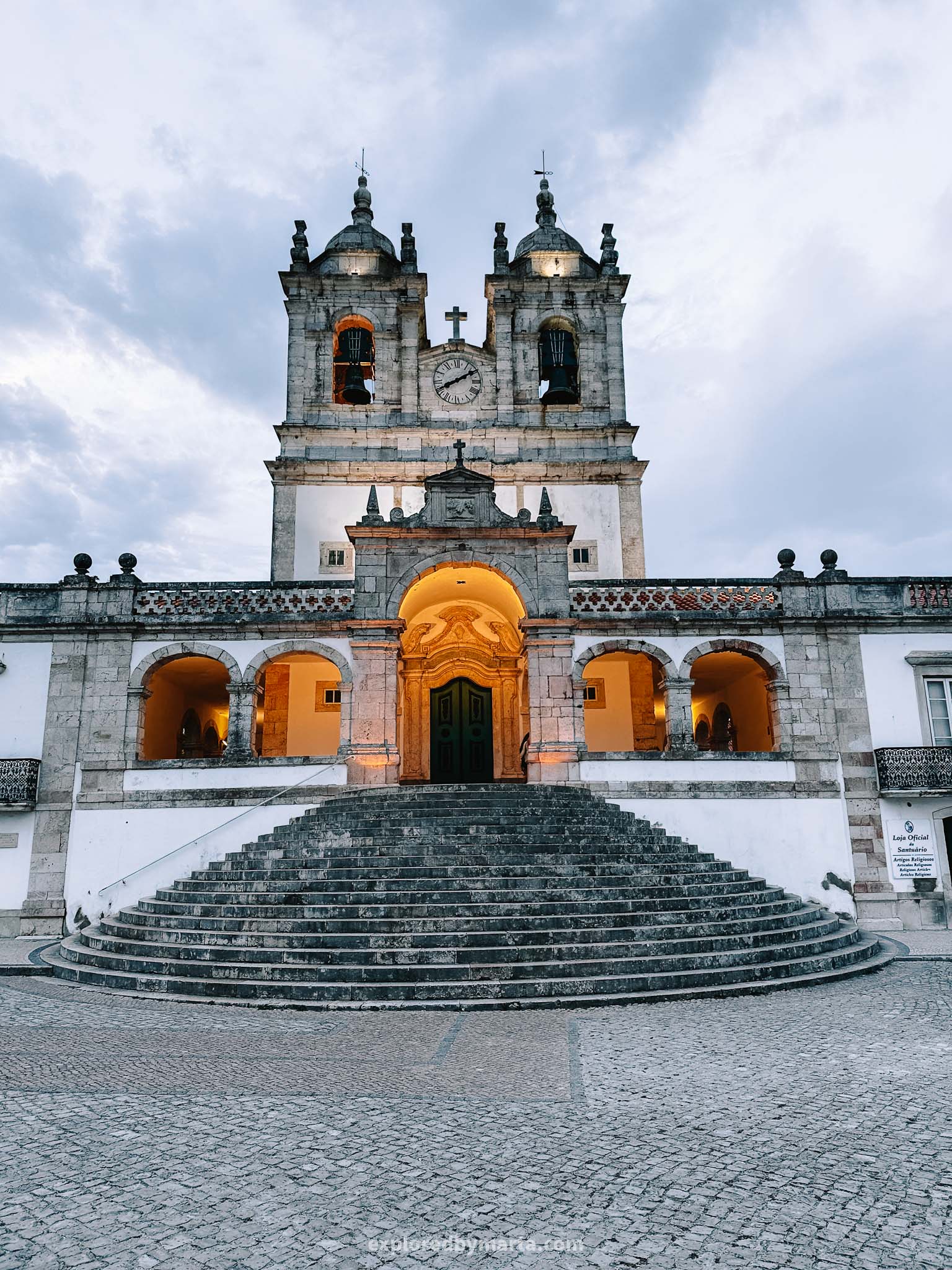
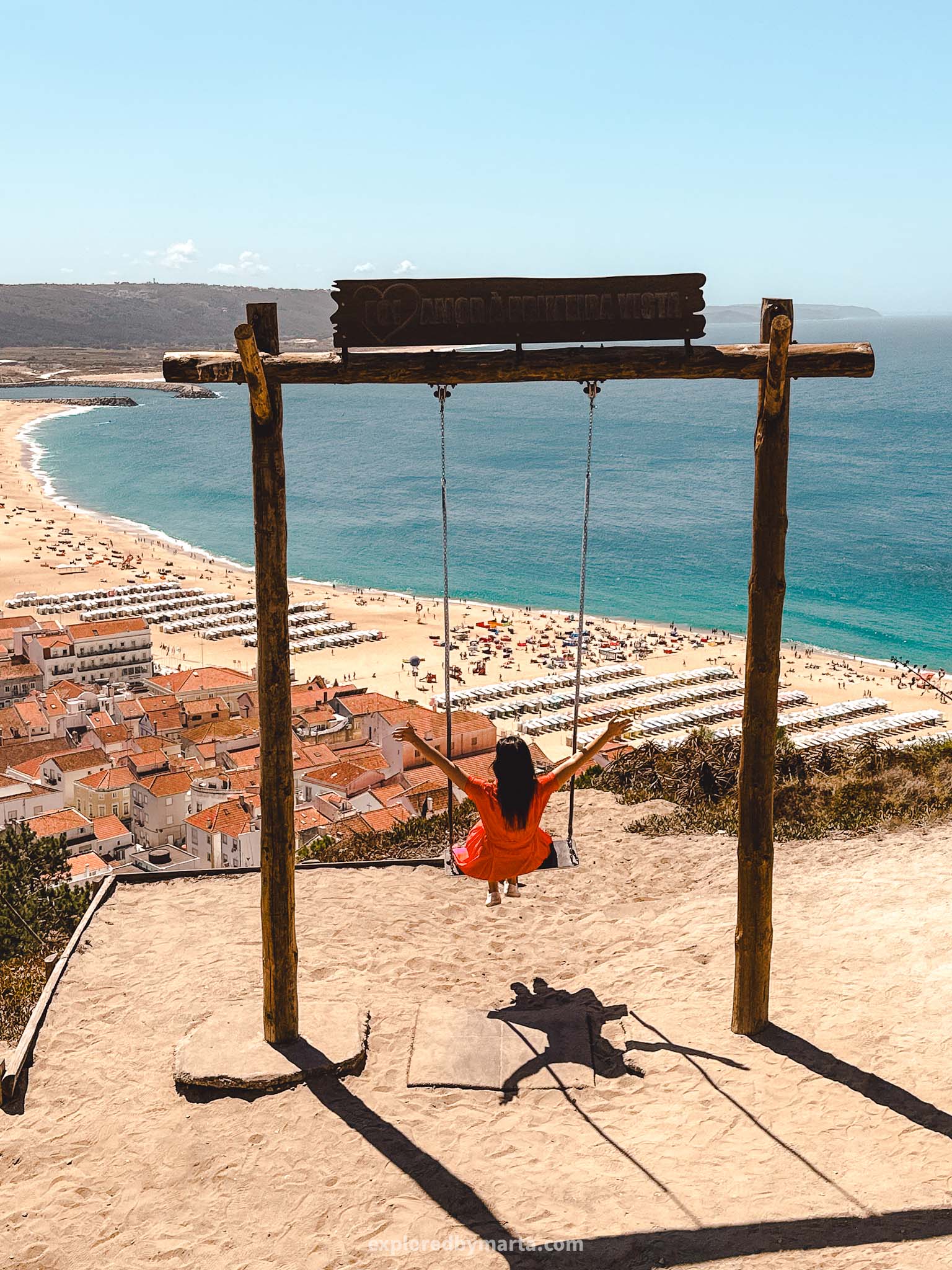
We visited the lower part first. It is lively, full of beachgoers, cafés, restaurants, and markets. Definitely check out the fish drying on the beach – a traditional fishing practice to preserve food.
Then we took a funicular up to the clifftop.
In the upper part of town, you’ll find the Sanctuary of Our Lady of Nazaré, a beautiful church that has been an important pilgrimage site for centuries, a large square, and panoramic sea views.

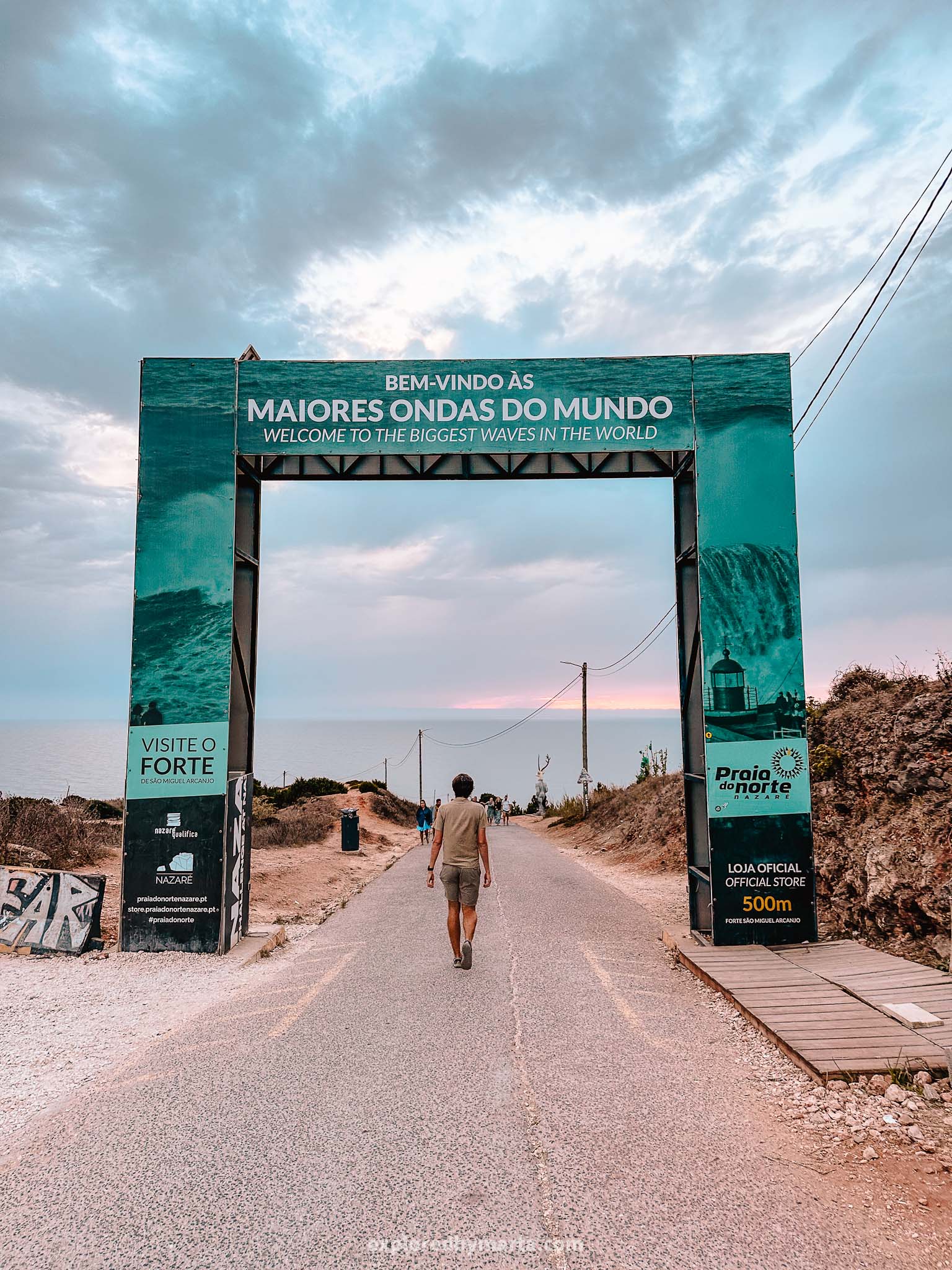
Of course, one of the most iconic spots in Nazaré is the Forte de São Miguel Arcanjo, the small red lighthouse that sits on the edge of the cliff.
From here, you get the best views of Praia do Norte, which is the legendary place with the largest waves ever surfed. Note that the big wave season is from October to March, so most likely, you will see the regular ocean waves.
But that clifftop still offers some of the best views we saw in Portugal! Despite the fact that we visited Nazaré on some of the calmest days ever (the ocean was flat – check my photos!), the power of nature is very much visible in this coastal town! I’m glad we visited Nazaré!
11. Leiria, historic gem of Central Portugal

Located about halfway between Lisbon and Porto, Leiria is one of those towns in Portugal that often gets overlooked. But there is a fantastic reason to visit this picturesque town that is full of history and charm.
The whole town is centered around the magnificent Leiria Castle, one of the most iconic castles in Portugal (and one of my absolute favorites!). The medieval castle sits on a hilltop overlooking the town.
Leitia Castle was built back in the 12th century and played an important role in the early years of Portugal’s history. It was built by the order of King Afonso I, the first king of Portugal, to protect, at that time, the Southern border of Portugal.
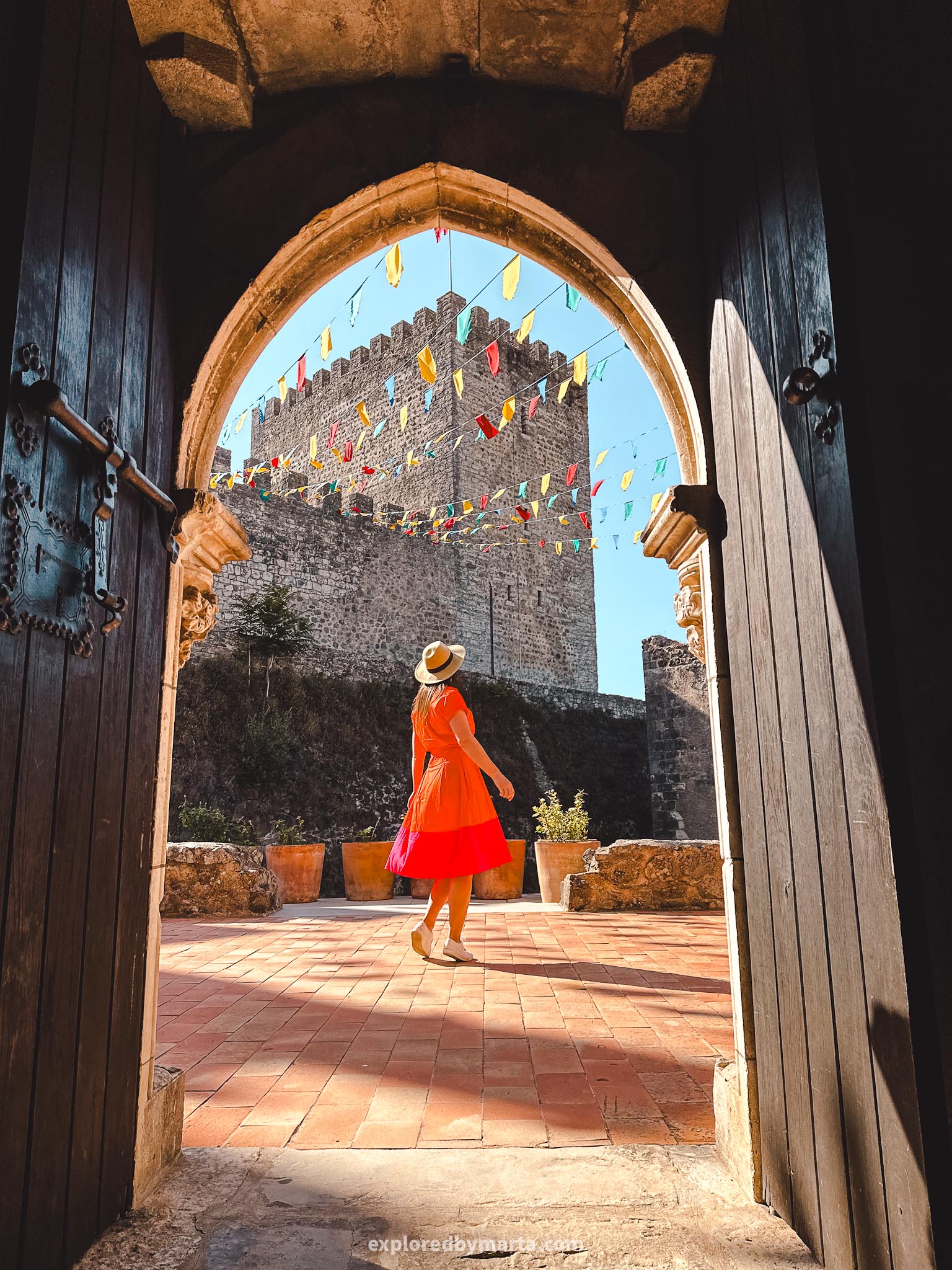

Today, you can walk around and explore the castle’s towers, courtyards, and rooms, and get a glimpse into Portugal’s history. I especially loved the room with the beautiful arcade (see first photo!).
If only the walls could speak… Can you imagine what they would be able to tell us!?
We happened to visit Leiria a day before its medieval festival, and the whole town and the castle were beautifully decorated. It looked really festive!
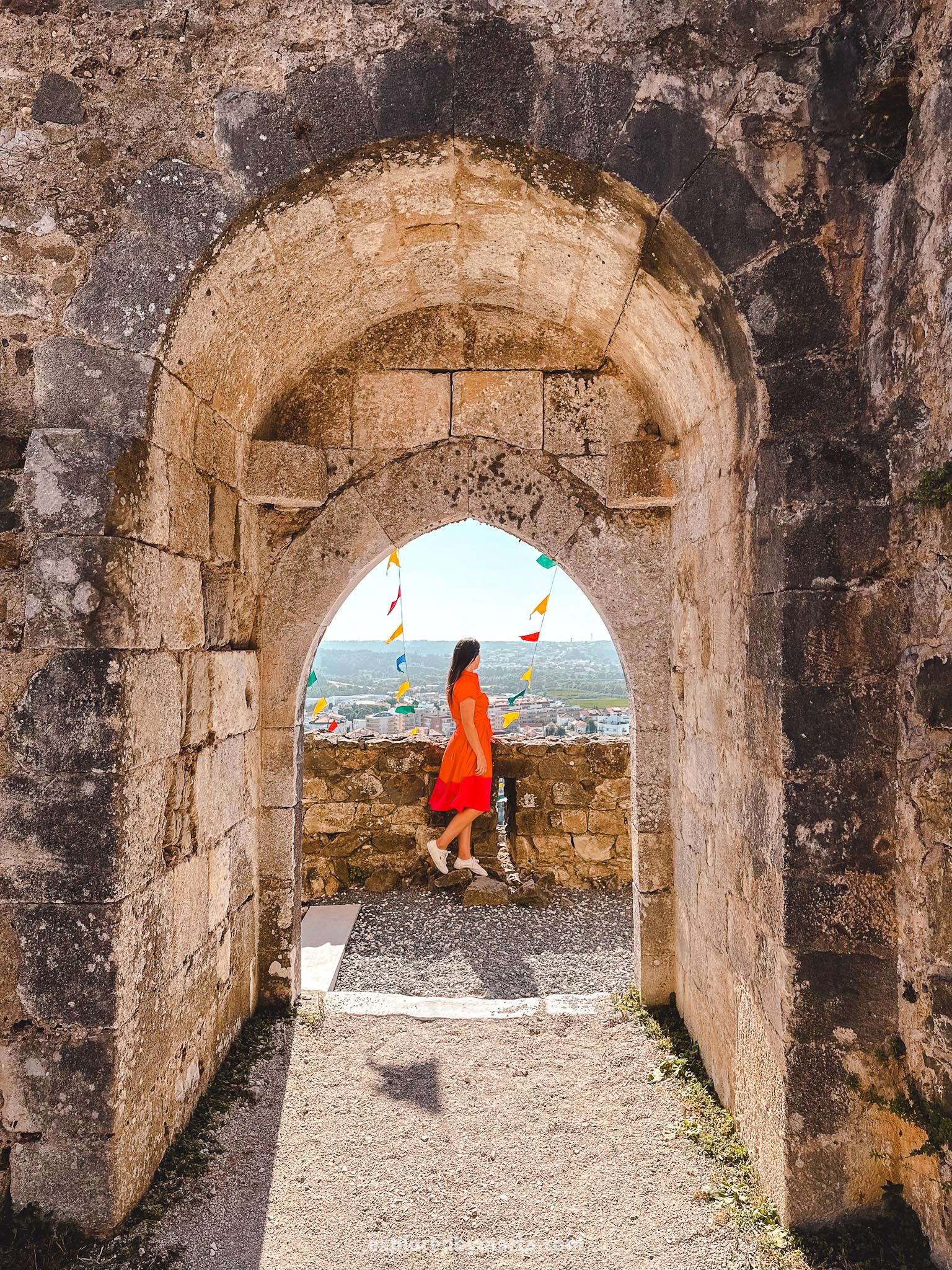
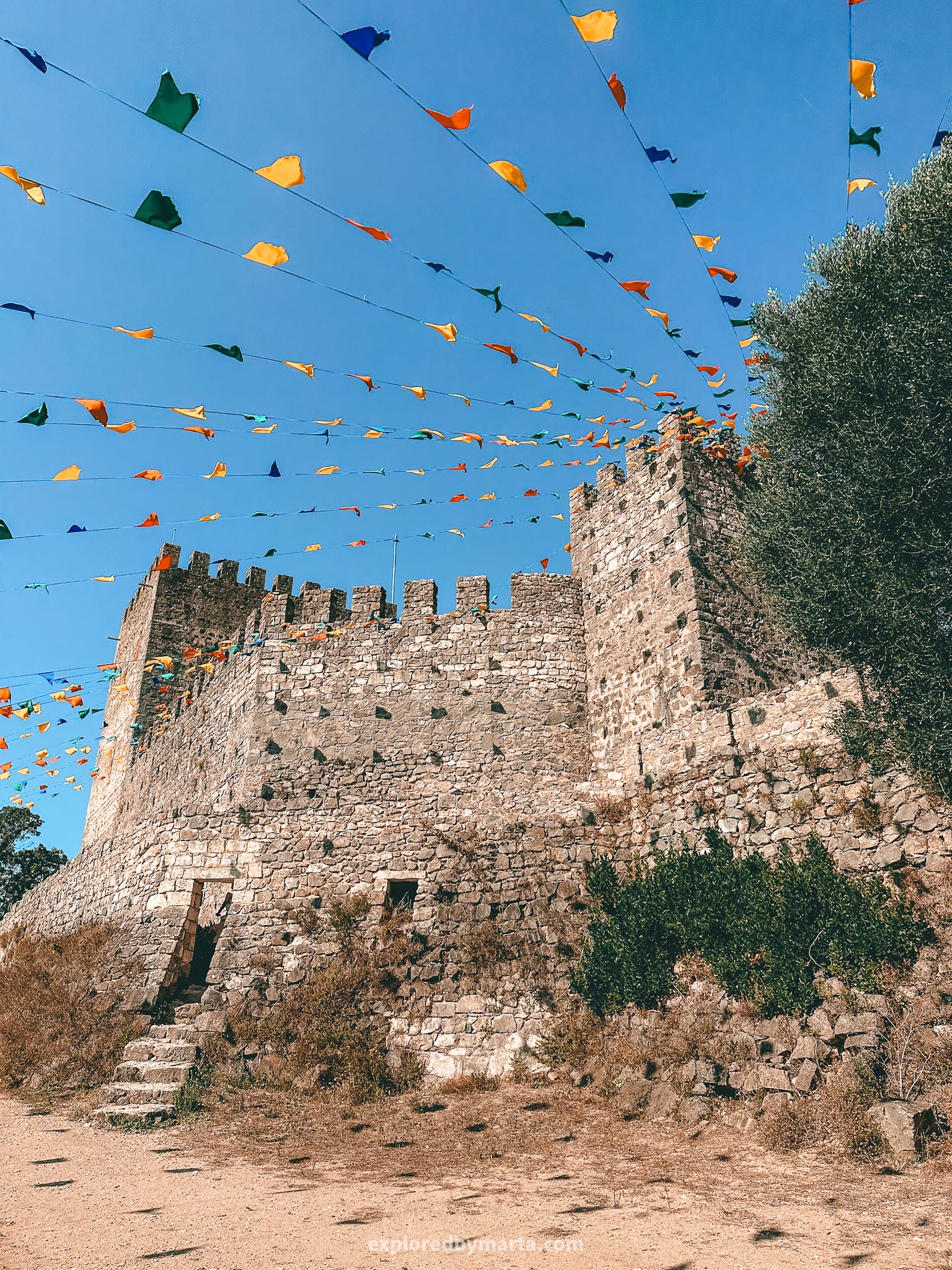
Below the castle, you will find the historic old town, which is a proper maze of narrow streets filled with cozy cafés, squares, boutique shops, and restaurants. If you have time, make sure to stroll around the beautiful old town.
If not, then a visit to the castle is more than enough to enjoy this hidden gem in Portugal! You definitely won’t see the usual Lisbon or Porto crowds around here.
Well, maybe except during the medieval festival, when it feels like the whole region flocks to the streets of Leiria, haha! But, if you’re looking for an authentic Portuguese town with a great mix of history, culture, and local charm (without the crowds), Leiria is a perfect choice!
12. Viana do Castelo, the jewel of the North
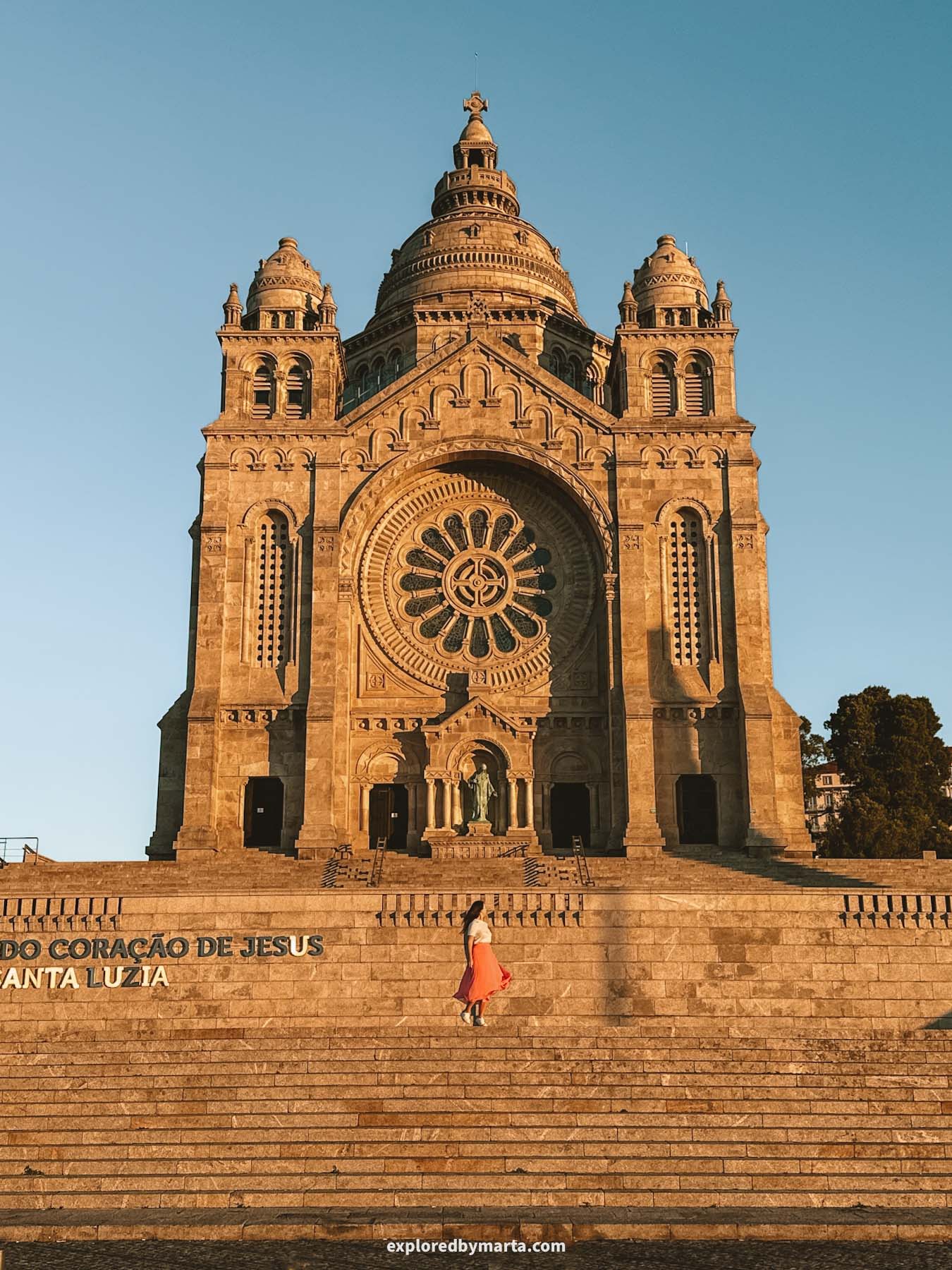
Let’s head to the North! If you love charming coastal towns with a mix of sea views, history, and authentic Portuguese culture, you’ll definitely enjoy visiting Viana do Castelo!
Located about an hour north of Porto, this picturesque town sits next to the Atlantic Ocean and the mouth of the Lima River. It’s famous for its beautiful setting, combining golden beaches with green hills, and strong medieval heritage.


One of the highlights here is the stunning Santuário de Santa Luzia, a basilica sitting on top of a hill overlooking the city. You can reach it by funicular or car (or you can climb up there by stairs), and the panoramic views from up there are absolutely worth it!
We actually came to the sanctuary multiple times during our travels around Northern Portugal. The best time to come here is in the morning – you’ll get to watch sunrise in all its glory from the mountaintop!
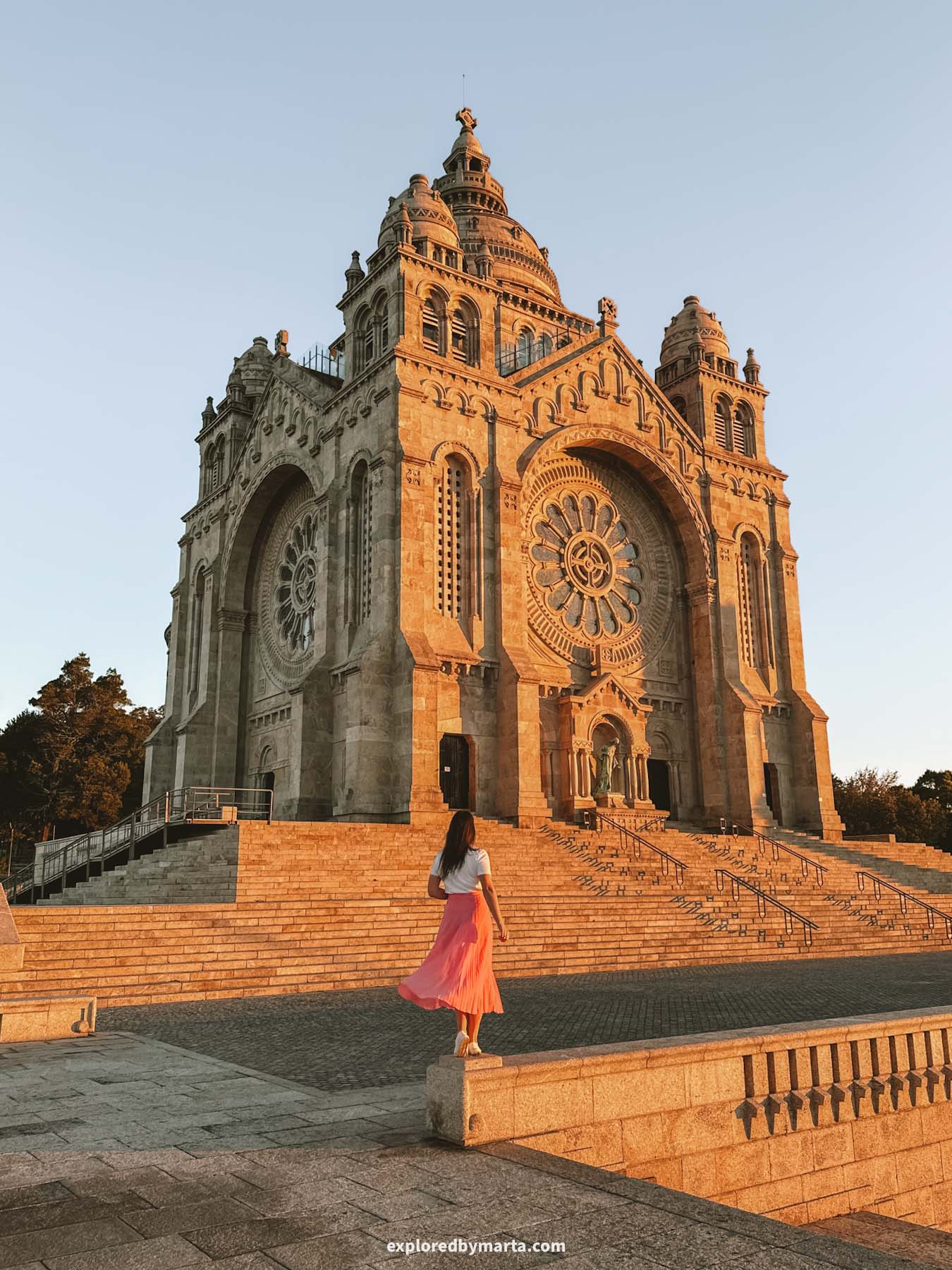

Watching the sunrise from the Mount of Santa Luzia was one of my favorite memories from our travels in Portugal! We also came back here another day to check out the interior of the beautiful sanctuary – it is truly…heavenly!?
The town itself is filled with charming streets, traditional tiled houses, and lively squares. Viana do Castelo is also known for its rich folk traditions and colorful festivals, especially the Romaria de Nossa Senhora d’Agonia, one of the most famous celebrations in Portugal.
13. Alcobaça, home to the majestic monastery

Alcobaça is a peaceful and charming town in central Portugal, best known for its impressive Monastery of Alcobaça, one of the most important and beautiful monasteries in the country.
If you love historical places and jaw-dropping medieval architecture, you must visit this place! I was actually stunned by it all!
Located about 1.5 hours north of Lisbon, Alcobaça makes for a perfect day trip if you’re exploring the region or visiting other nearby towns like Nazaré, Batalha, or Óbidos.

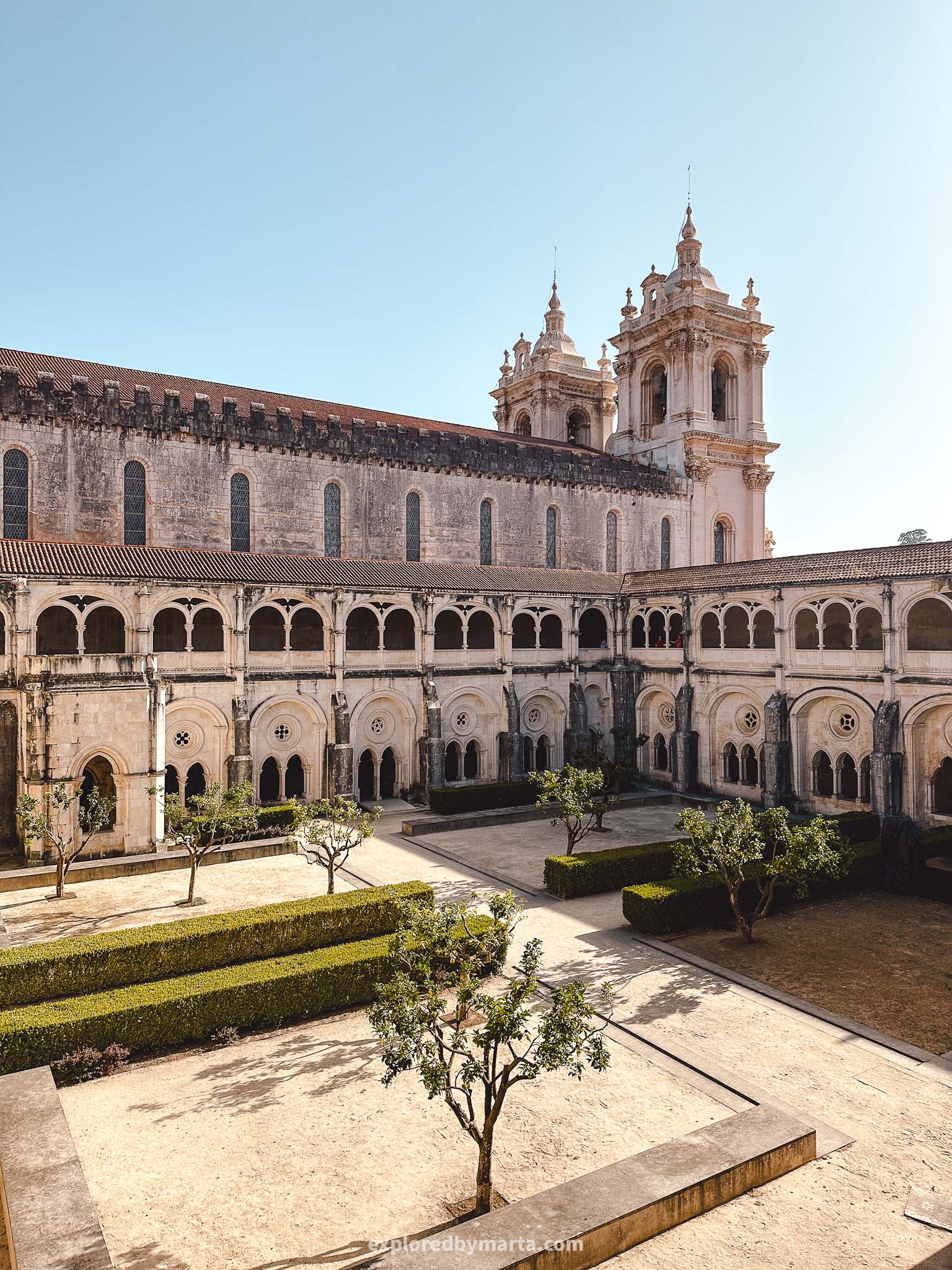
The town’s Mosteiro de Santa Maria de Alcobaça is a UNESCO World Heritage Site and one of Portugal’s most remarkable examples of early Gothic architecture.
Founded in the 12th century by the first Portuguese king, Afonso Henriques, the monastery was a gift to the Cistercian monks. At the time of its completion, it was the largest church in Portugal!
The most famous part of the monastery is the tombs of King Pedro I and Inês de Castro, whose tragic love story is often compared to that of Romeo and Juliet.

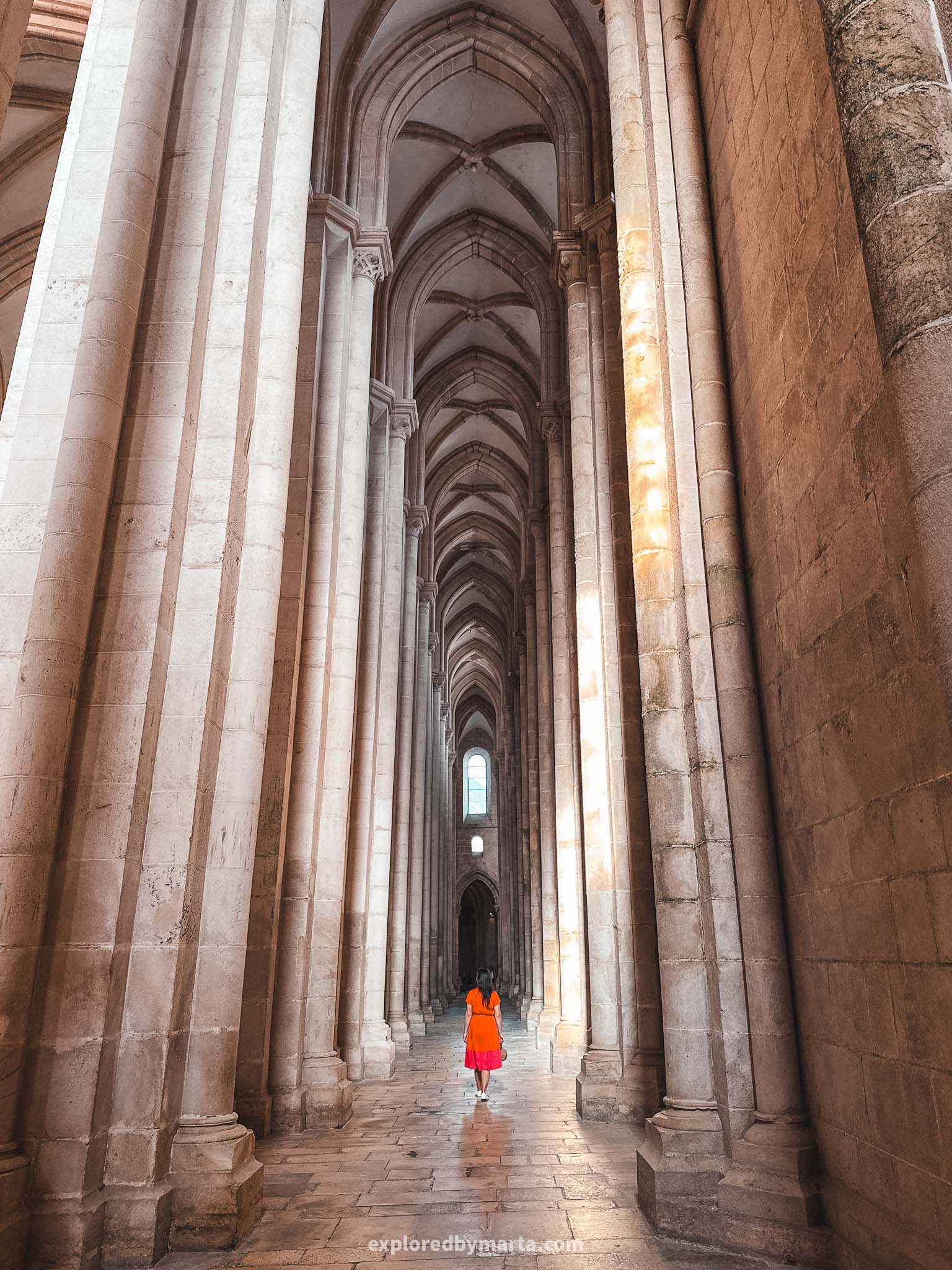
Alcobaça Monastery was once one of the richest and most influential monasteries in Portugal, with a population of nearly 1000 monks. There’s so much to see there – cloisters, curch, rooms, halls, courtyards, tileworks, and architectural elements. It is massive!
Beyond the monastery, Alcobaça is a peaceful place to stroll around. However, we just came here for the massive monastery. You can only see so much in one country, so we skipped the rest of the town and left it for another day.
14. Tomar, the home of the Knights Templar


Tomar is one of the most fascinating places we visited in Portugal!
Known as the home of the Knights Templar, Tomar is filled with rich history, incredible architecture, and legends. There is only one reason people travel to Tomar, and it is to visit the majestic Convent of Christ.
Located about an hour and a half north of Lisbon, this small city hosts one of the most important monuments in Portugal’s history (and a UNESCO World Heritage Site).
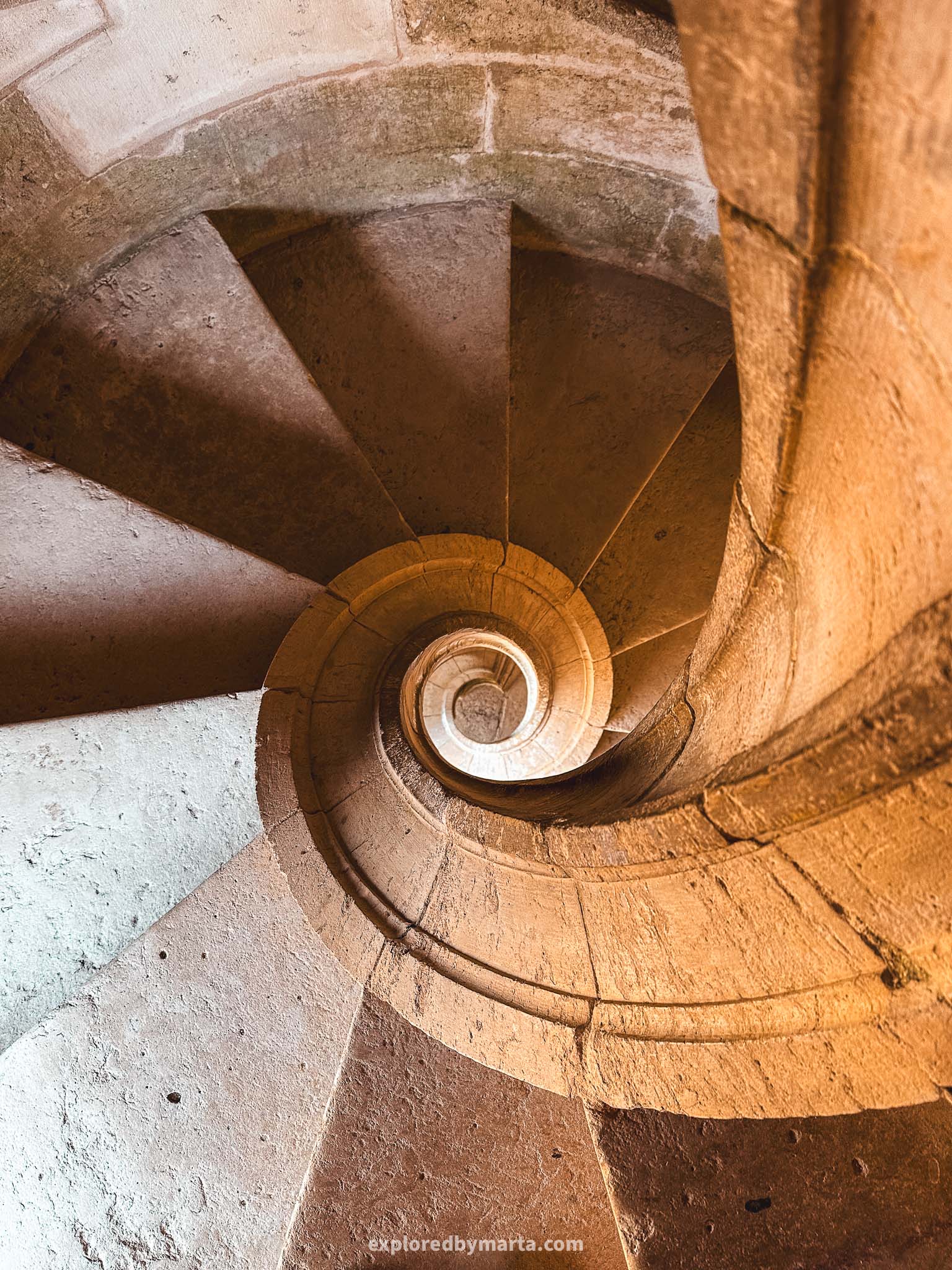

The Convent of Christ was founded in the 12th century as the headquarters of the Knights Templar, a powerful military order of warrior monks who played a major role in Portugal’s formation.
The construction of the impressive building complex took about five centuries, and today, it sits high on a hill overlooking the town and is full of fascinating details.
One of the most beautiful places in the convent is the 12th-century Oratory of the Templars – the famous round church (called a ‘rotunda’) covered with intricate frescoes and paintings.
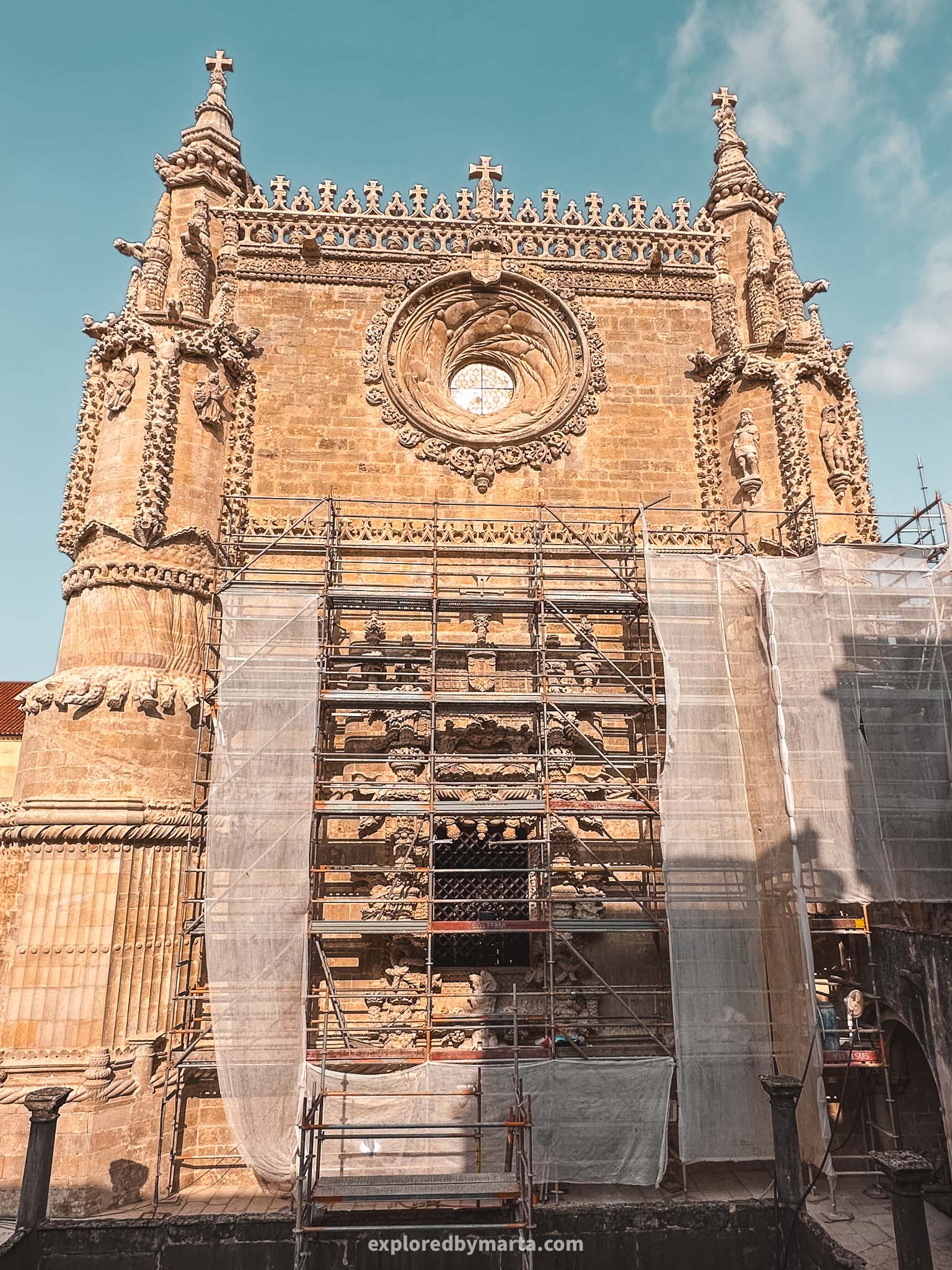
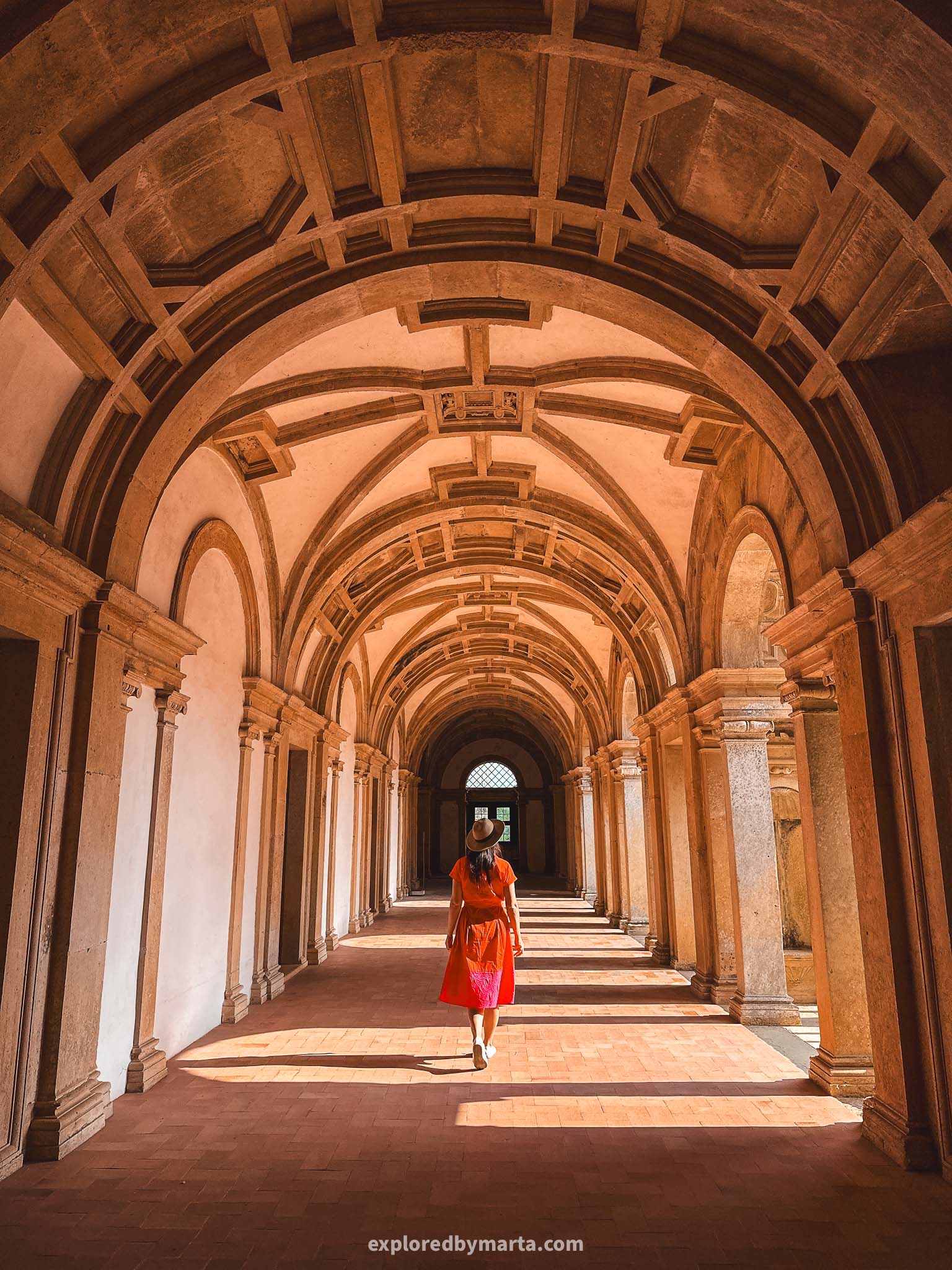
Another famous architectural artwork that you can visit in the Convent of Christ is the Chapter Window (photo above). The Manueline window is filled with maritime themes, including ropes, wood, buoys, and others.
I’ll never know why they had to renovate it during our visit, haha. Okay, but we did see it through the fences. It’s a masterpiece!
One of my personal favorite places in the convent was the spiraled staircase that leads to the second floor and can be accessed from the main courtyard. So unique!
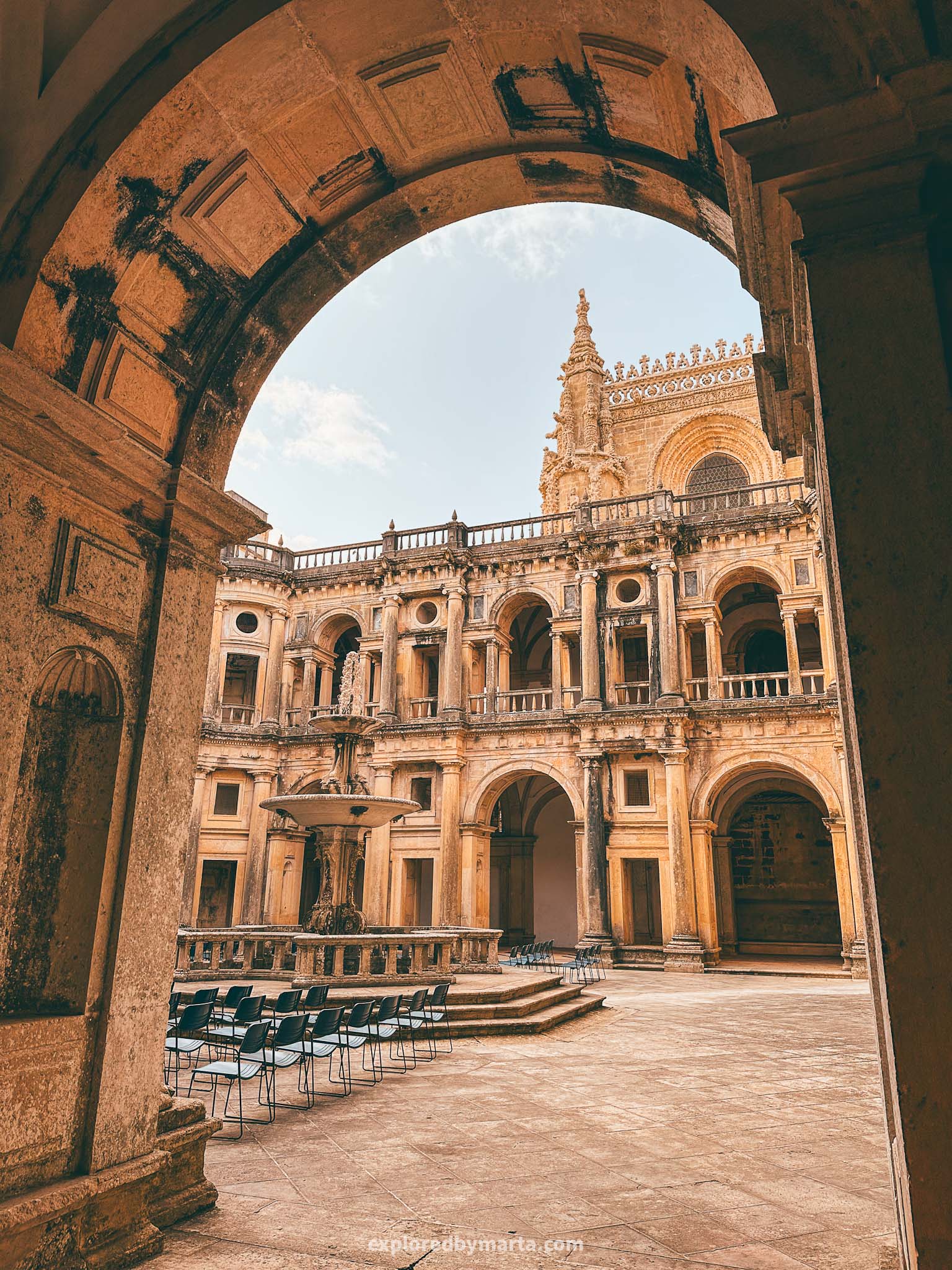

Honestly, this was one of the most beautiful places we got to visit during our road trip around Portugal. Walking through its old halls and towers gives you a glimpse into the life of the knights who once lived here.
The mix of history, mystique, and beauty makes it a truly unforgettable place.
If you wish, you can take some time to wander around Tomar’s historic center. The town is full of charm, cobblestone streets, small shops, and cozy cafés.
15. Óbidos, the Town of the Queens
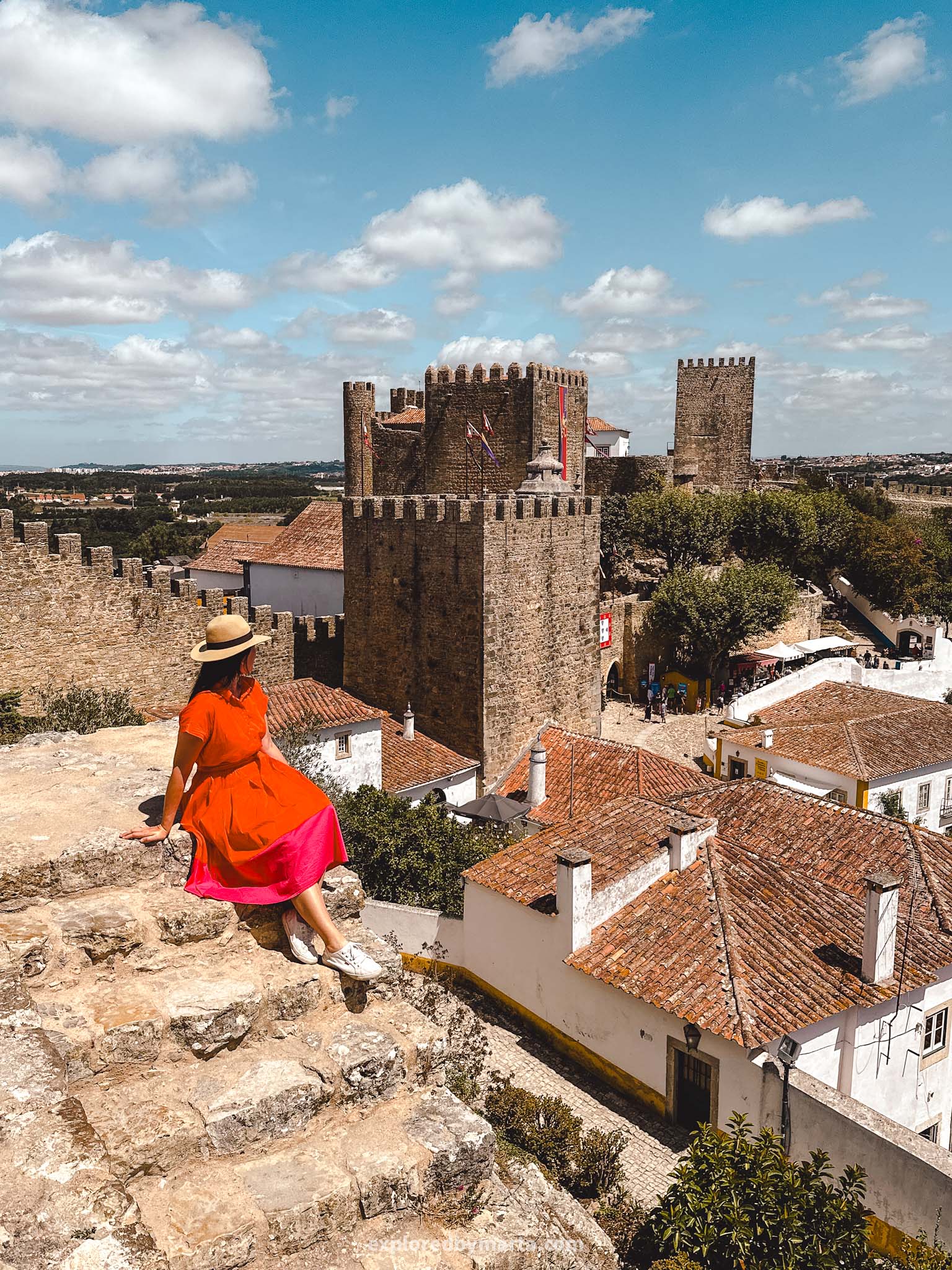
The medieval town of Óbidos is one of the most charming places in Portugal. Referred to as the ‘Town of the Queens, ’ this place introduces you to medieval architecture through its narrow cobblestone streets, squares, walls, and the medieval castle.
Located just an hour’s drive away, Óbidos is the perfect destination for a day trip from Lisbon!
We visited this small medieval town in the middle of summer, exploring the main attractions of Óbidos, including Óbidos Castle, Rua Direita street, city walls, and the famous Óbidos chocolate shops.
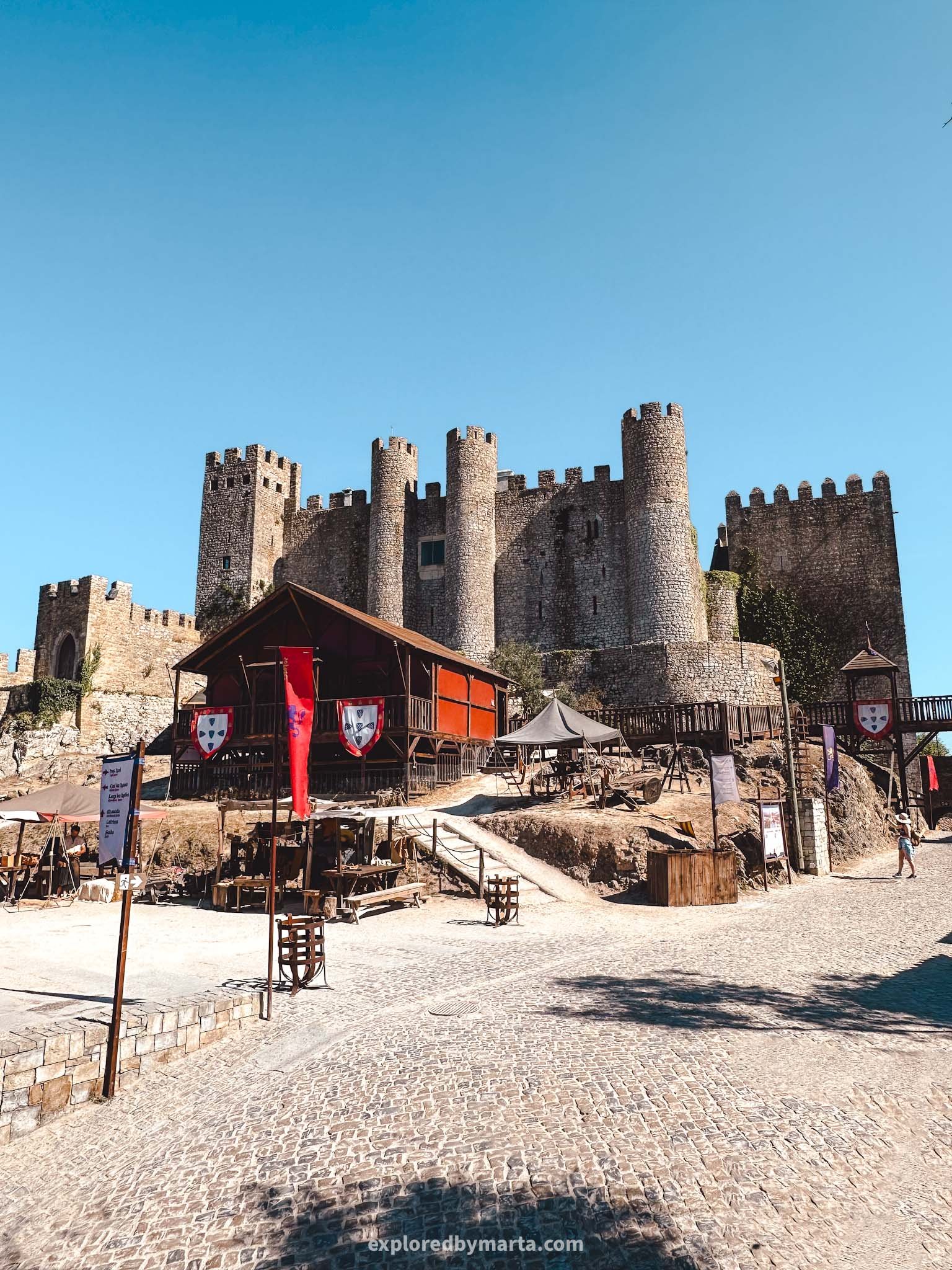
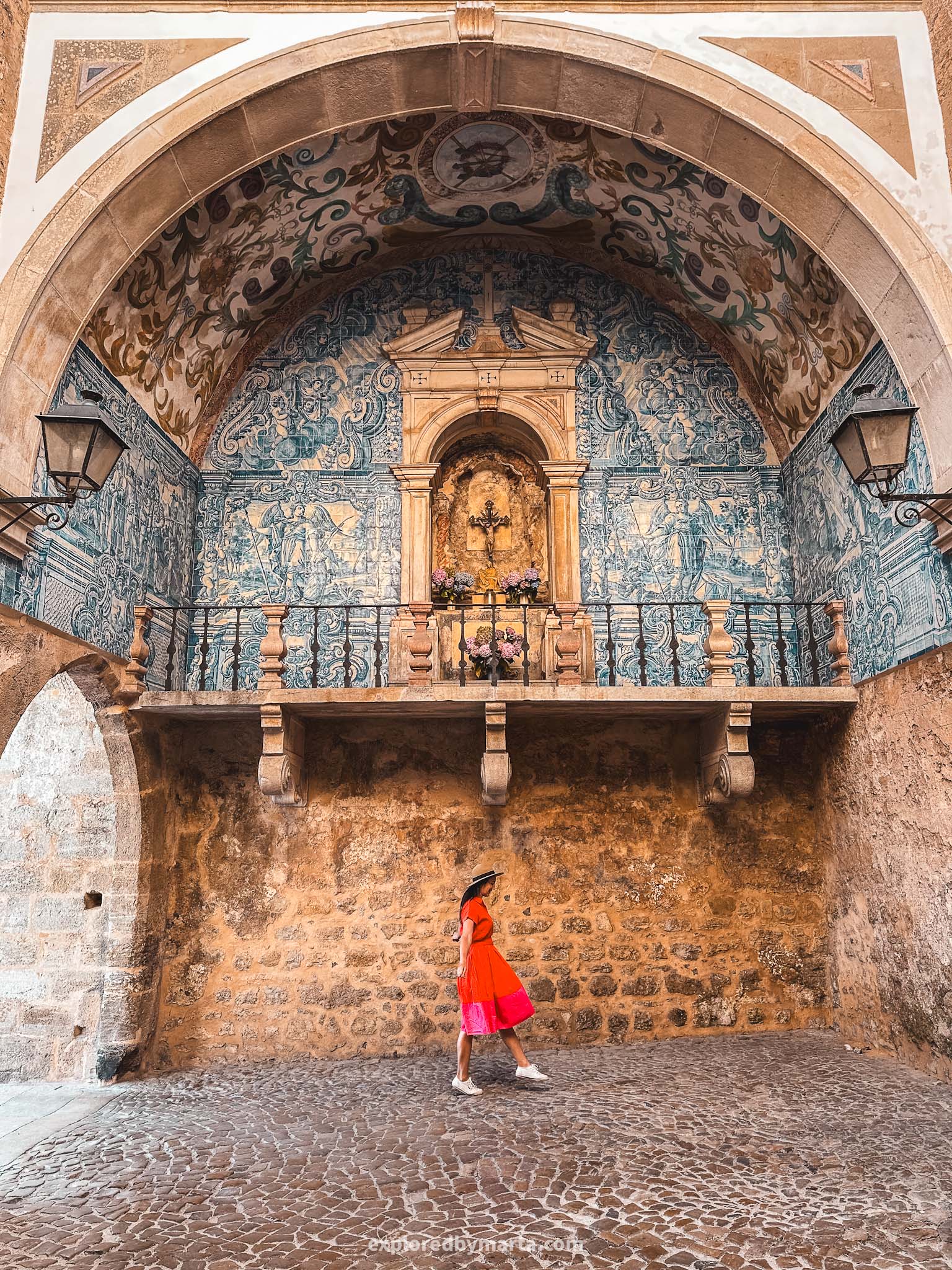
Notably, Óbidos Castle is one of the most famous medieval castles in Portugal and is among the Seven Wonders of Portugal. During the medieval centuries, this town and castle were favored as a residence by many Portuguese queens.
However, my favorite place in the town was the Porta da Vila gate with the beautiful Portuguese tiles – azulejos (see photo above)!
The whole town of Óbidos is encircled by massive defensive castle walls. The best part about it is that you can walk around the town walls like a town guard from a couple of centuries ago! The perimeter of the walls reaches more than 1500 meters (so nearly a mile).

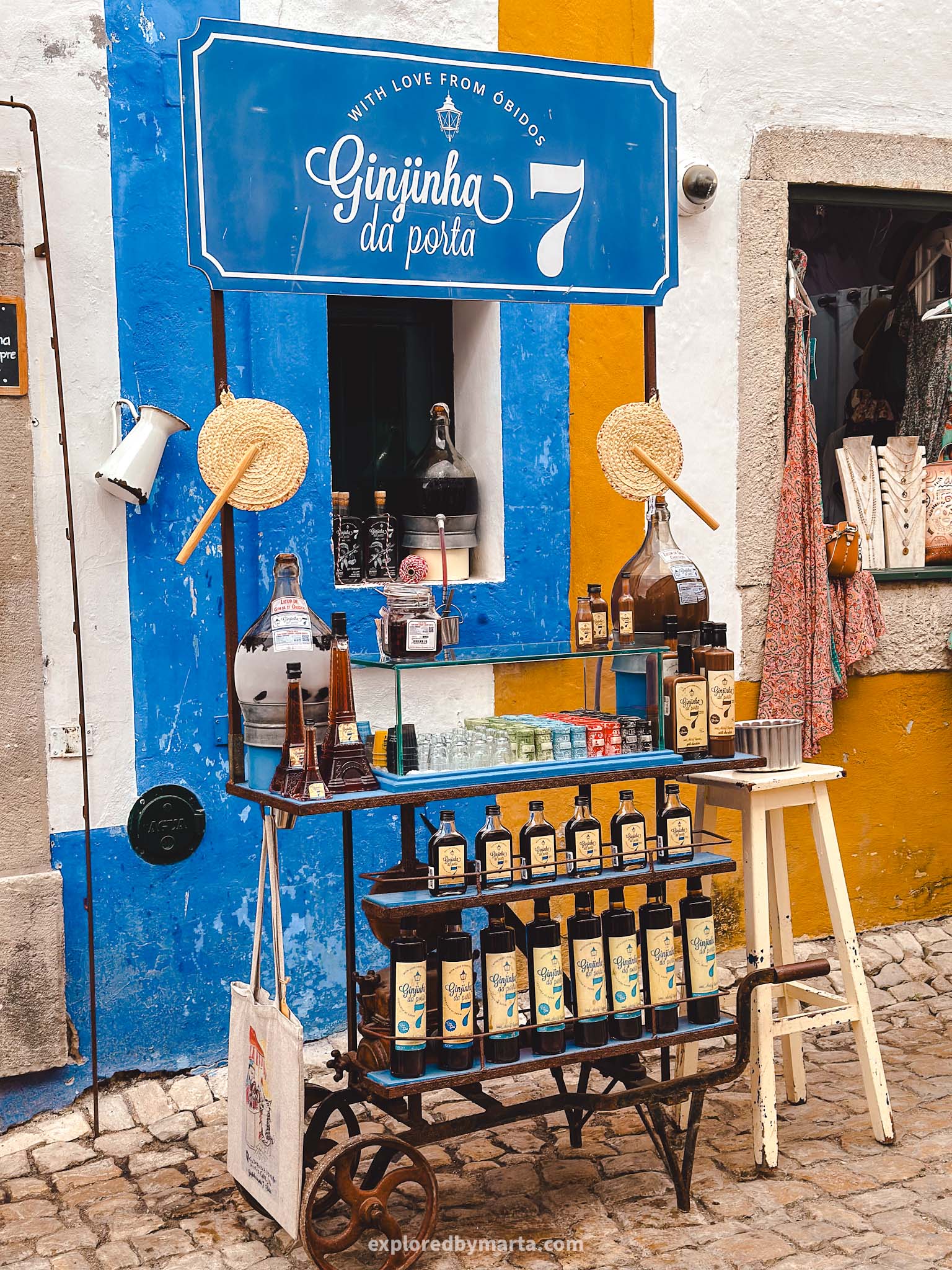
Fun fact! Óbidos Castle is part of a hotel network in Portugal called ‘Pousadas de Portugal’, where historic state-owned buildings (like castles and palaces) are turned into hotels. So you cannot actually visit the castle as a tourist unless you book a stay there.
Some of the must-try things in Óbidos include the local Ginja de Óbidos – a Portuguese liqueur made of sour cherries, sugar, and usually cinnamon. In Óbidos, they serve it inside small cups made of chocolate, so you can eat and drink it all at once!
Another thing not to miss in Óbidos is the local chocolate. Óbidos even hosts an International Chocolate Festival that has taken place in the Spring every year since 2002. It is when the whole town turns into a big festival and celebration of chocolate!
And now I wish I had visited Óbidos during Spring…
16. Batalha, the Gothic wonder
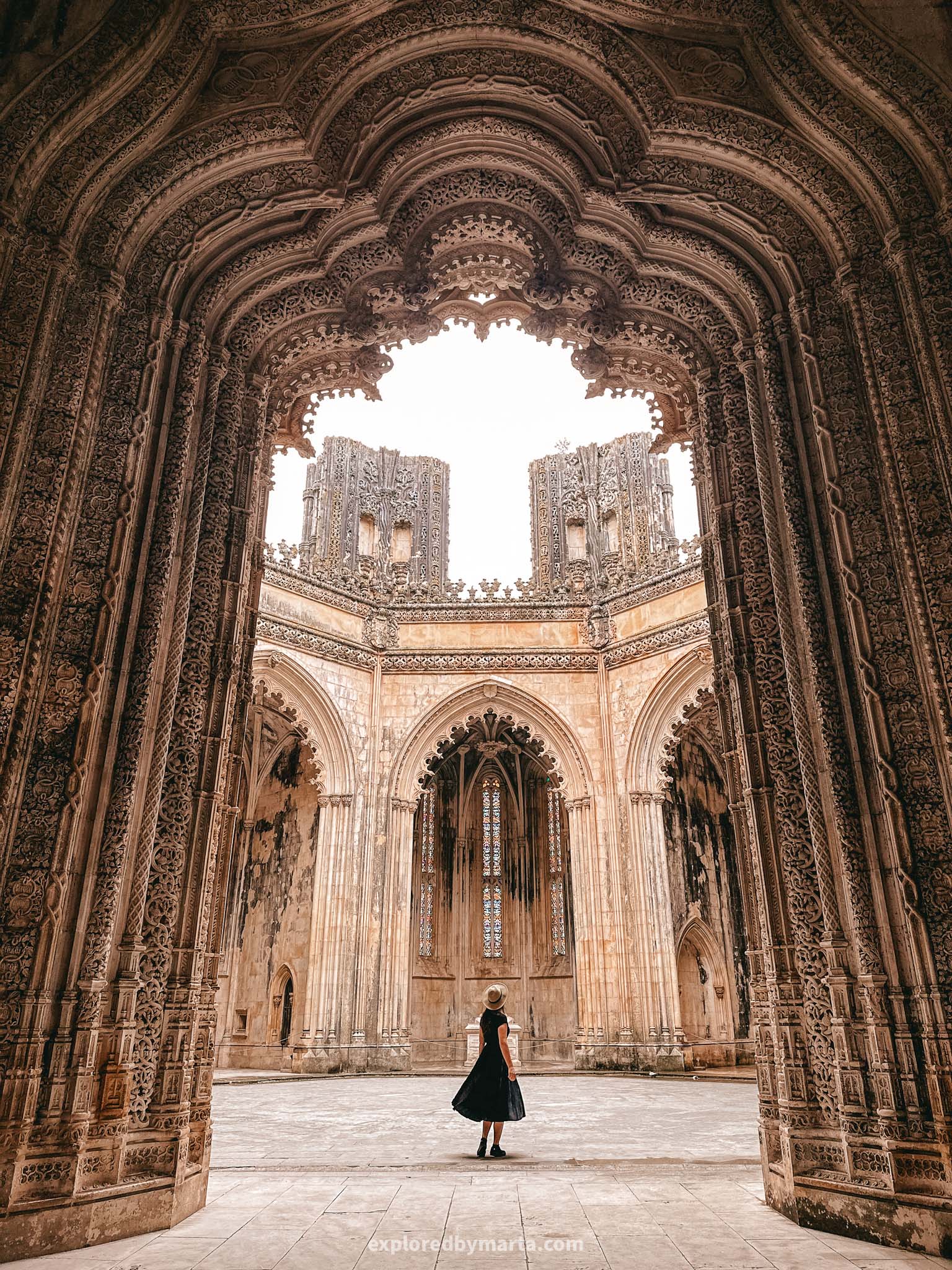
Batalha is a small town in central Portugal, hidden between Leiria, Alcobaça, and Nazaré. Despite its small size, it hides a magnificent secret within its medieval walls – the majestic Batalha Monastery.
It is one of the most beautiful places I have ever seen!
Officially called the Monastery of Santa Maria da Vitória, this is more than just another place on a long list of must-visit places in Portugal.
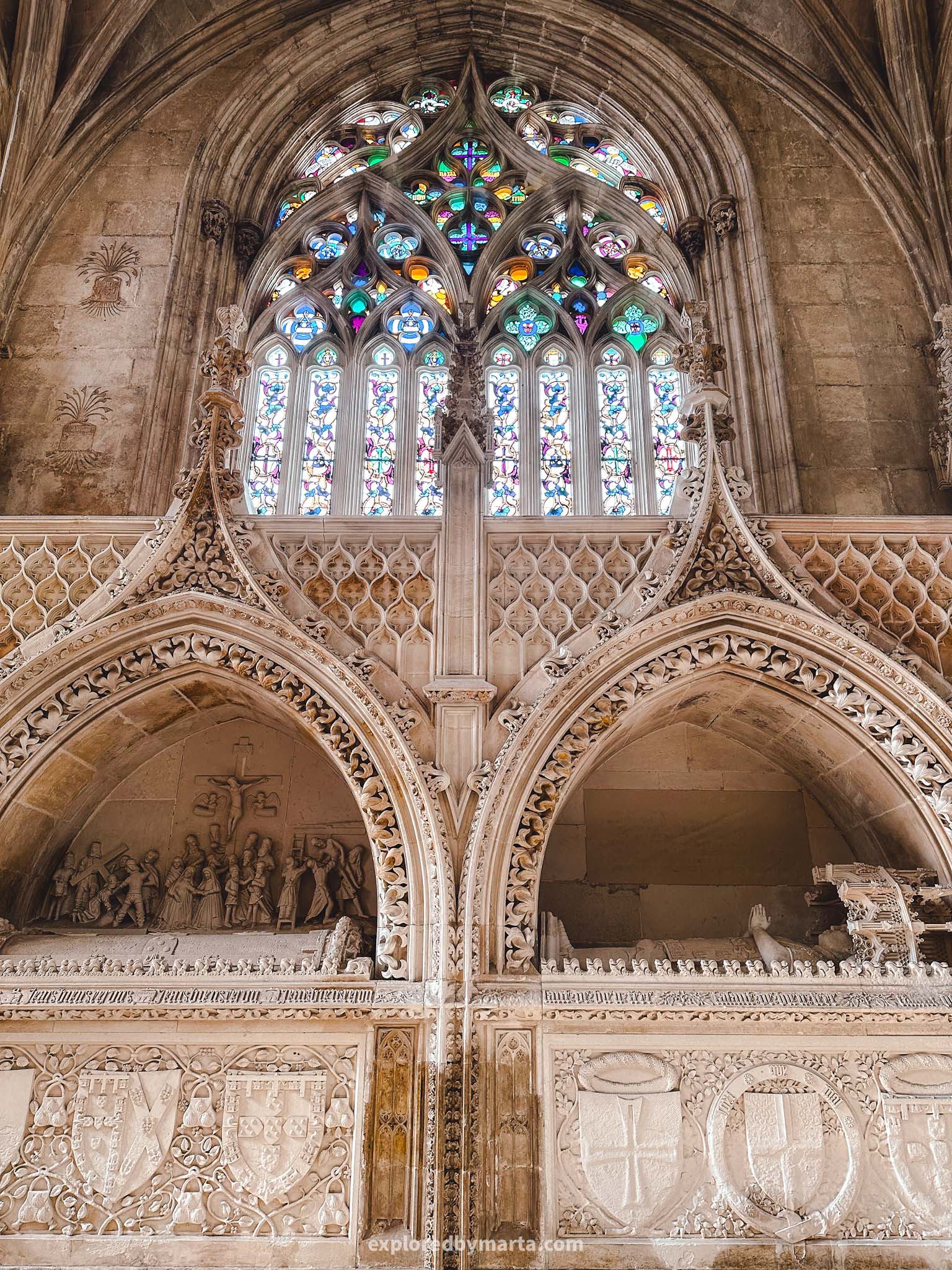

Batalha is one of those towns that was literally born out of history. It was built on the battlefield (that’s where its name comes from – Batalha!) where the decisive Battle of Aljubarrota took place back in 1385.
It is where Portugal, despite being outnumbered, secured its independence from Castile (today’s Spain), and it is considered one of the most important battles in Portugal’s history.
After the victory, Portugal’s King João I ordered the building of a majestic monastery on the very battlefield in honor of the Virgin Mary. The construction of the monastery took over a century and was done under the reign of seven kings and the supervision of fifteen architects.
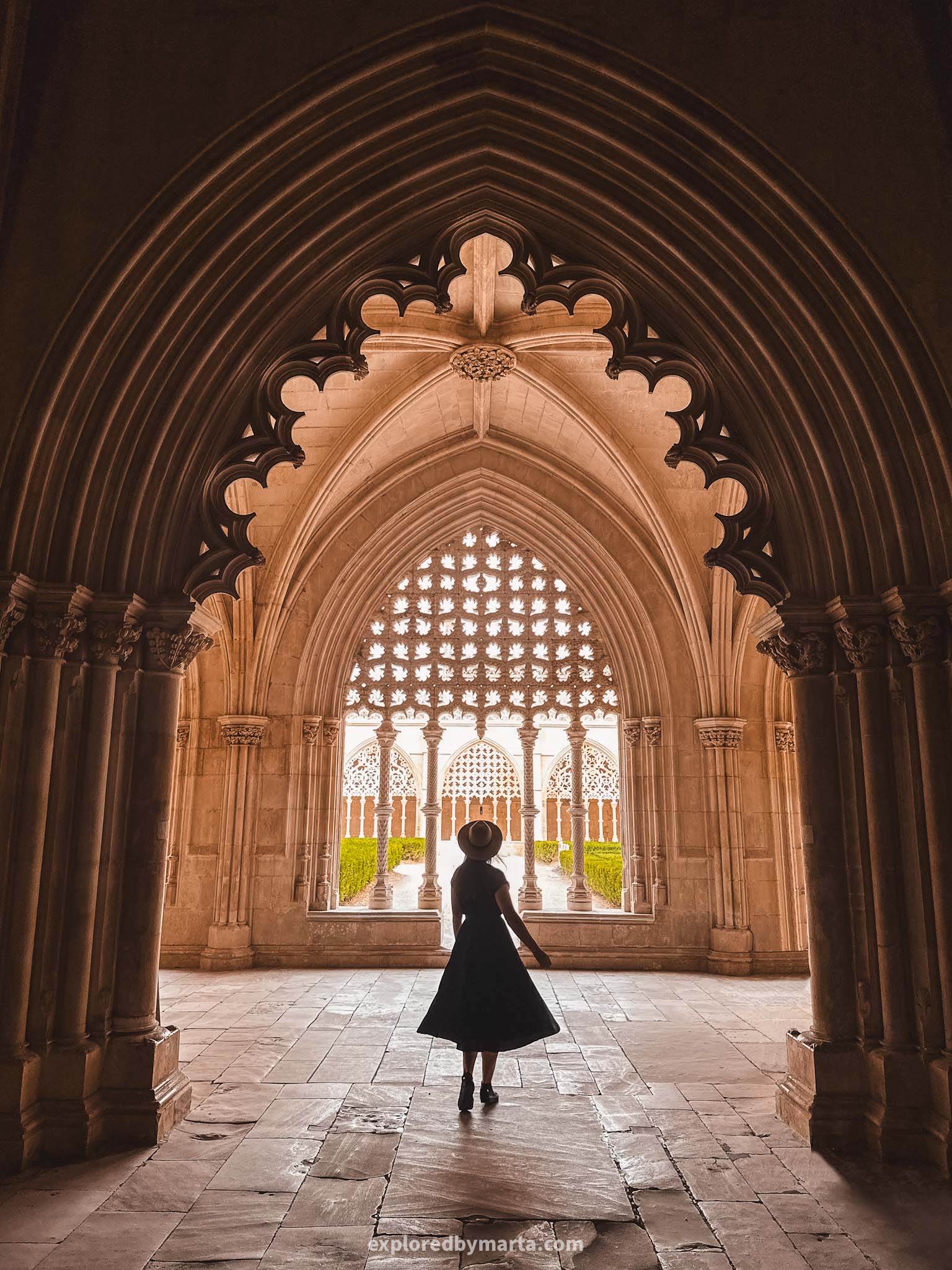
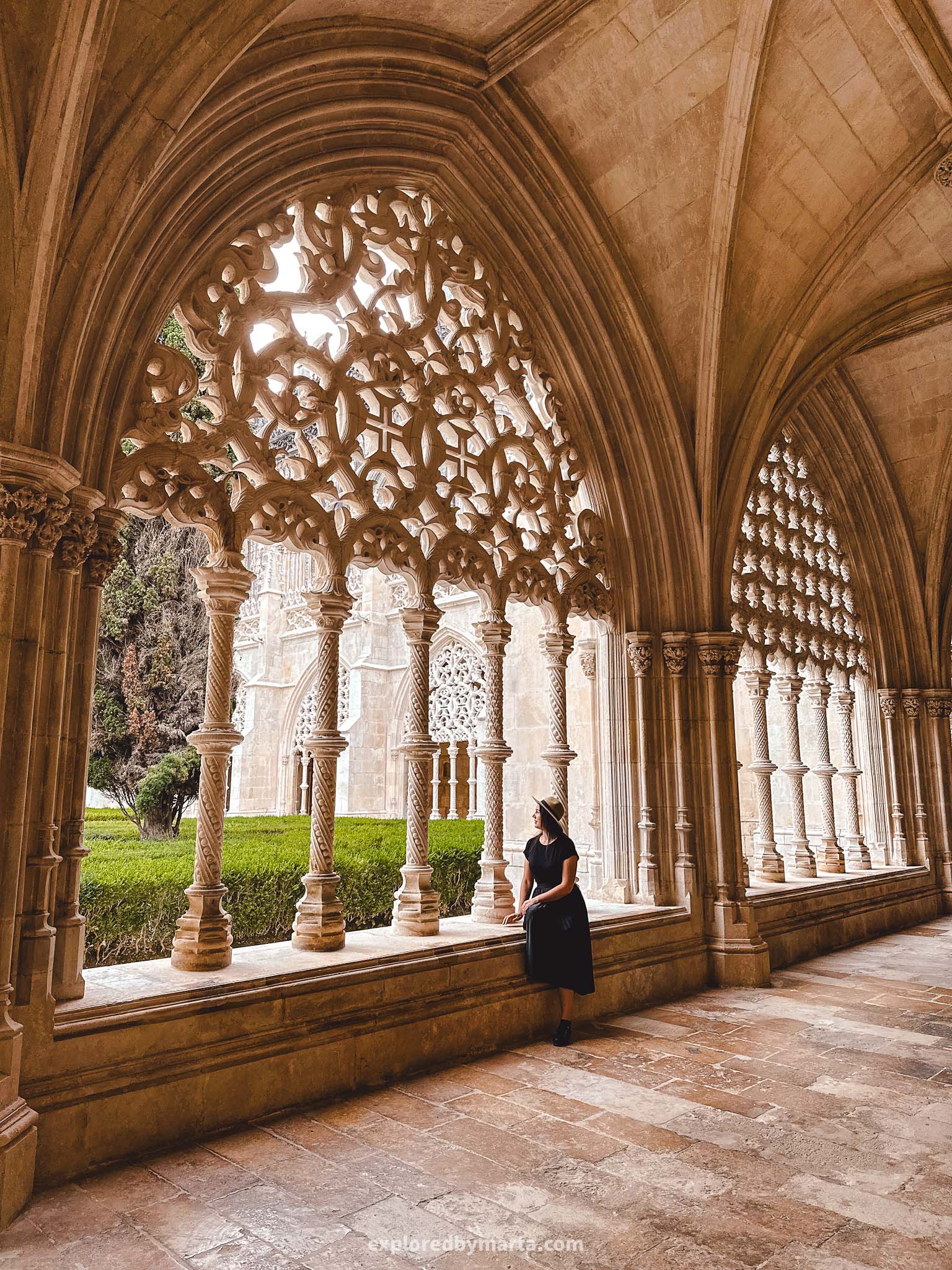
Batalha Monastery is now a UNESCO World Heritage Site and also one of the most important Gothic sites in Portugal. It also serves as the first royal pantheon in Portugal, filled with tombs of kings, queens, and princes.
Inside, you can visit the Founder’s Chapel, which holds the tombs of King João I and Queen Philippa of Lancaster, along with their sons, including Henry the Navigator.
But my favorite place inside the monastery was the famous Unfinished Chapels – the Pantheon that was never finished and has been roofless for centuries.
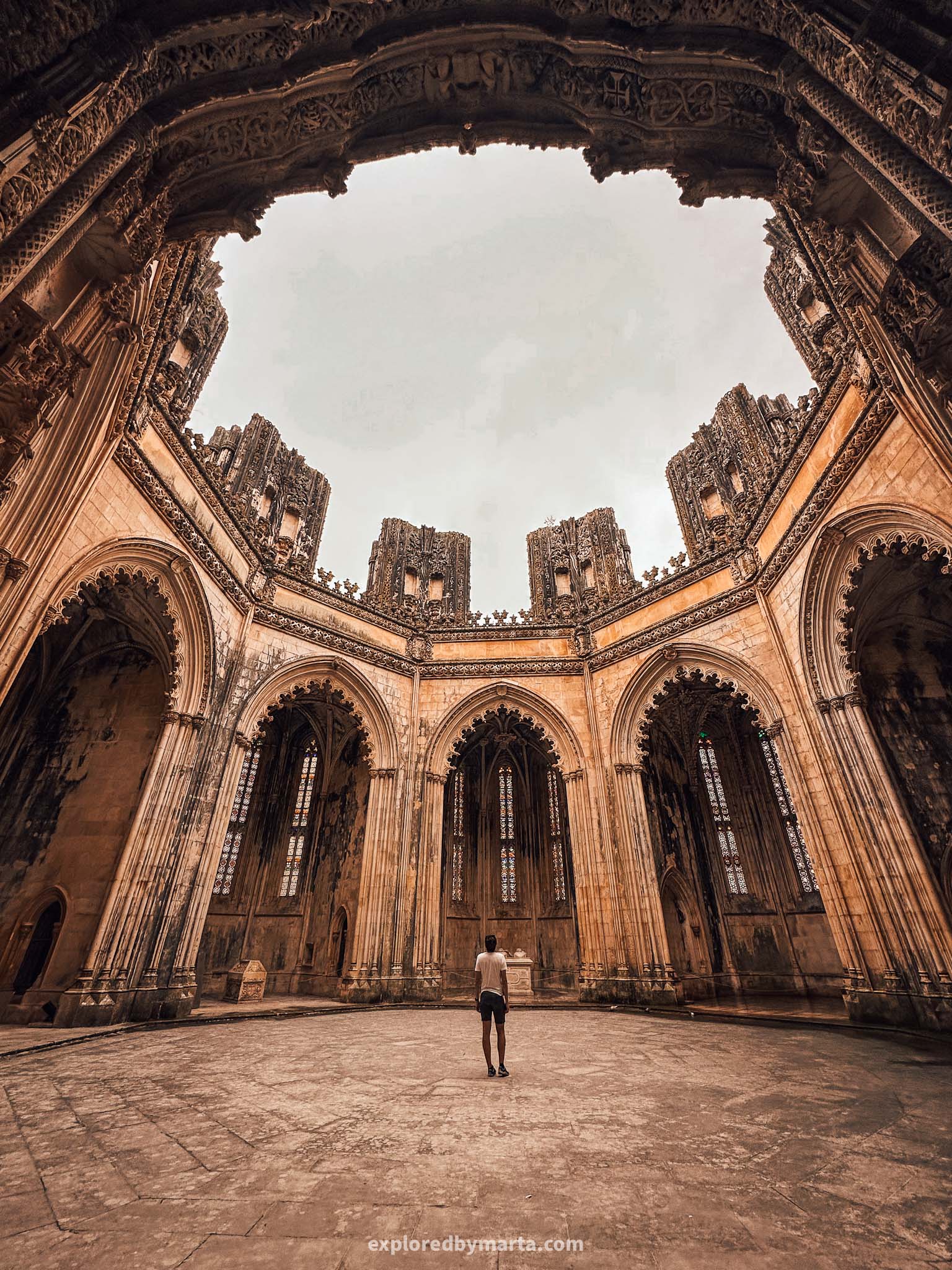
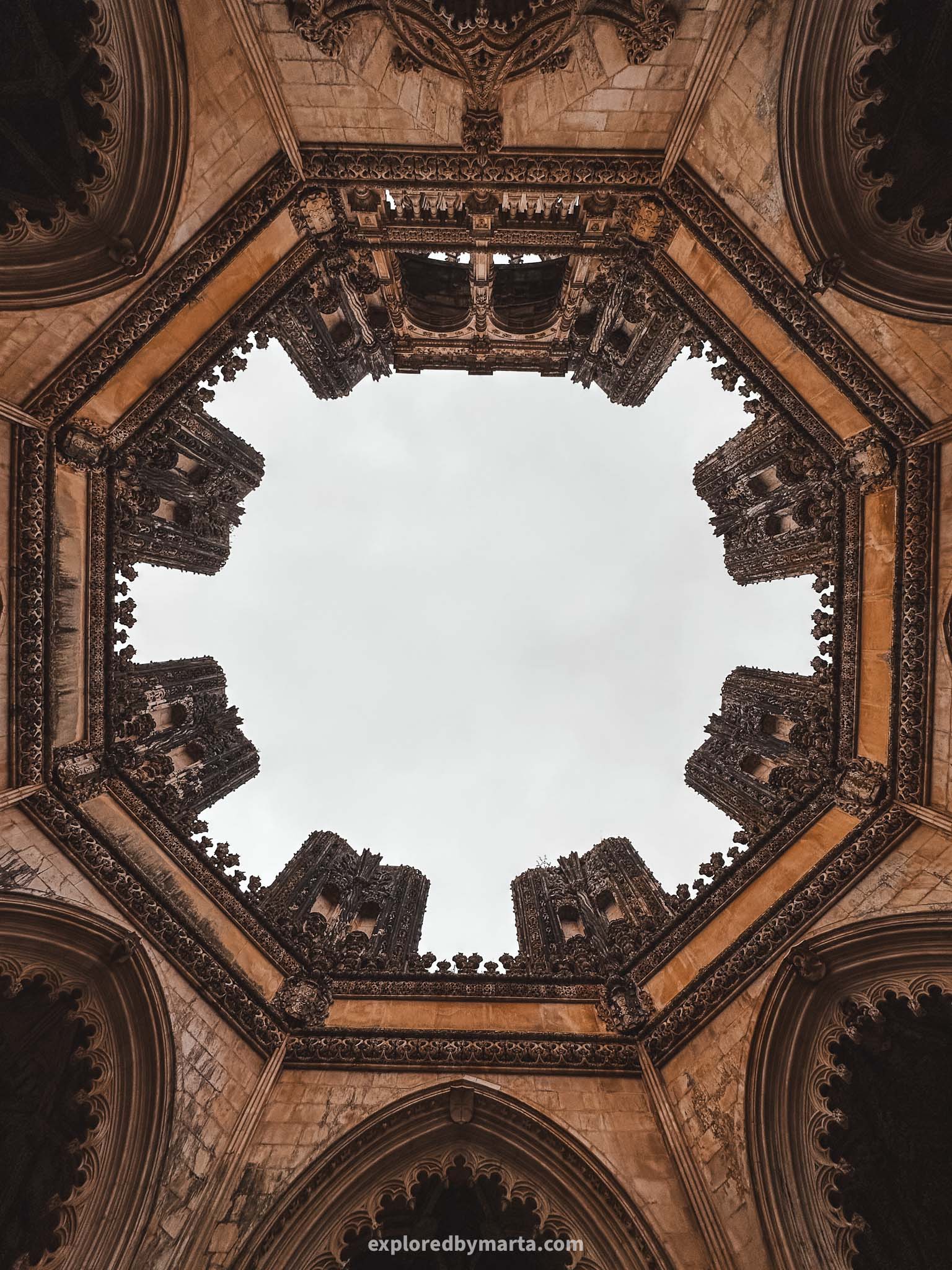
The Unfinished Chapels has one of the most extravagant entrances you’ll see built in Portugal’s intricate Manueline style.
It was a bit mindblowing to think that someone had to carve it with their hands (see the first photo with the entrance). No wonder it took so long to make it (and it wasn’t even finished!).
If you’re traveling through Portugal, Batalha is a must-visit place.
Despite its small size, it has plenty of charm to offer. And you can combine a visit to Batalha with the nearby Alcobaça, Leiria, or Fatima for a perfect day trip full of historical highlights (that’s what we did!)!
17. Lagos, Portugal’s southern belle

While Faro is the capital of the Algarve, Lagos is the charming southern belle and one of my favorite places we visited along the Algarve coastline.
Lagos is known for its incredible beaches, dramatic cliffs, and relaxed seaside atmosphere. But beyond the golden sands and turquoise waters, Lagos also has a rich history and has one of the most charming old towns in the Algarve.
Once an important maritime center during Portugal’s Age of Discovery, Lagos was a departure point for many famous explorers. As you walk around the whitewashed old town and pass by the marina, you can you can still feel its historic past on every corner.

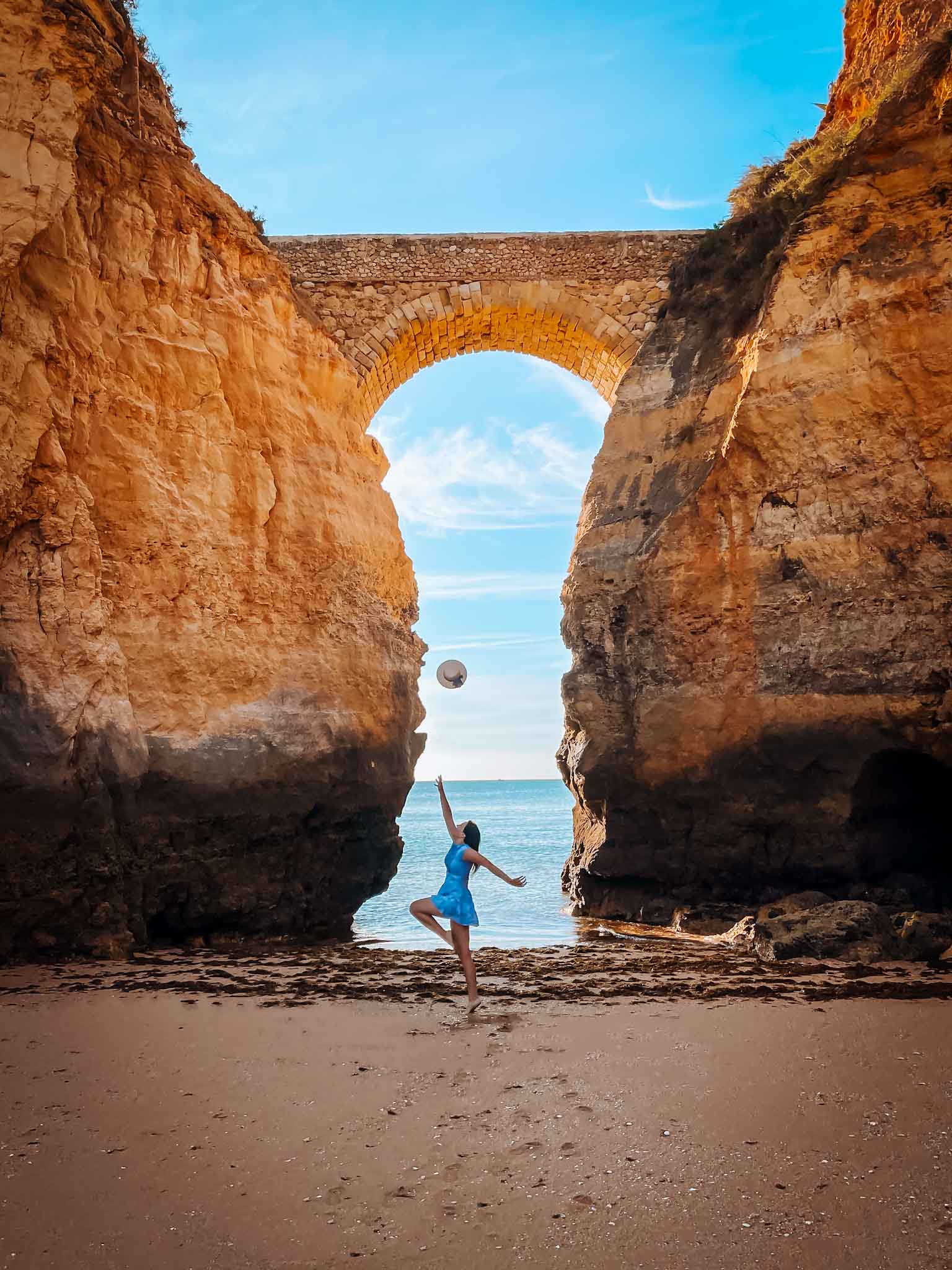
But, of course, the main attraction of Lagos is its coastline. The town is home to some of the most beautiful beaches in the Algarve, like Praia do Camilo, Praia Dona Ana, or Praia dos Estudantes with its iconic Roman Bridge.
And, of course, the famous Ponta da Piedade, where you can see stunning limestone cliffs, arches, and sea caves. You can take a boat tour from Lagos to explore the sea caves around Ponta da Piedade. Such an unforgettable place!
In the center of town, you’ll find lively squares, local restaurants, and plenty of spots to enjoy a drink with a view. Lagos has a perfect mix of history, natural beauty, and laid-back coastal vibes that make it one of my favorite places in the Algarve.
18. Águeda, the City of Umbrellas
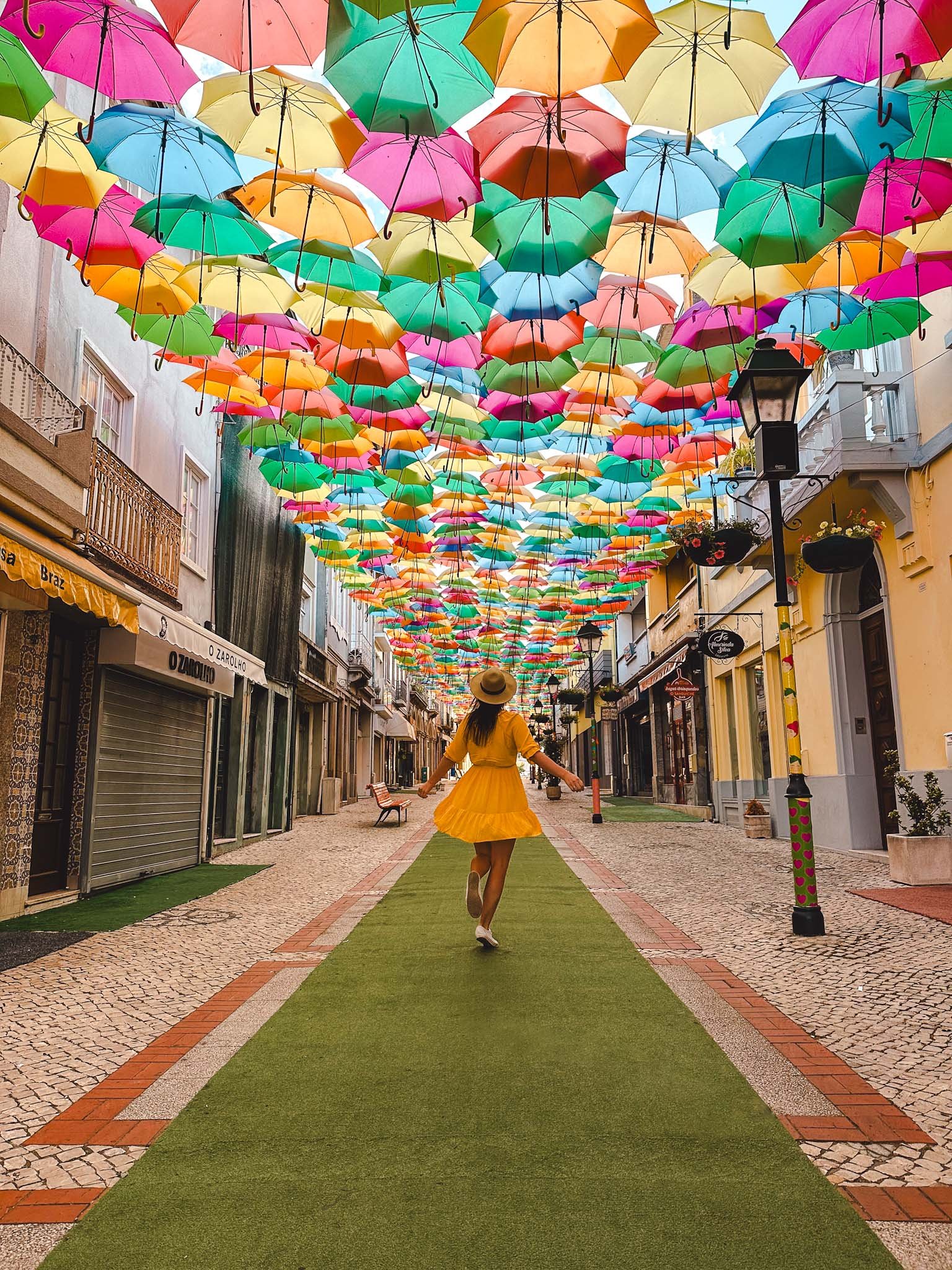
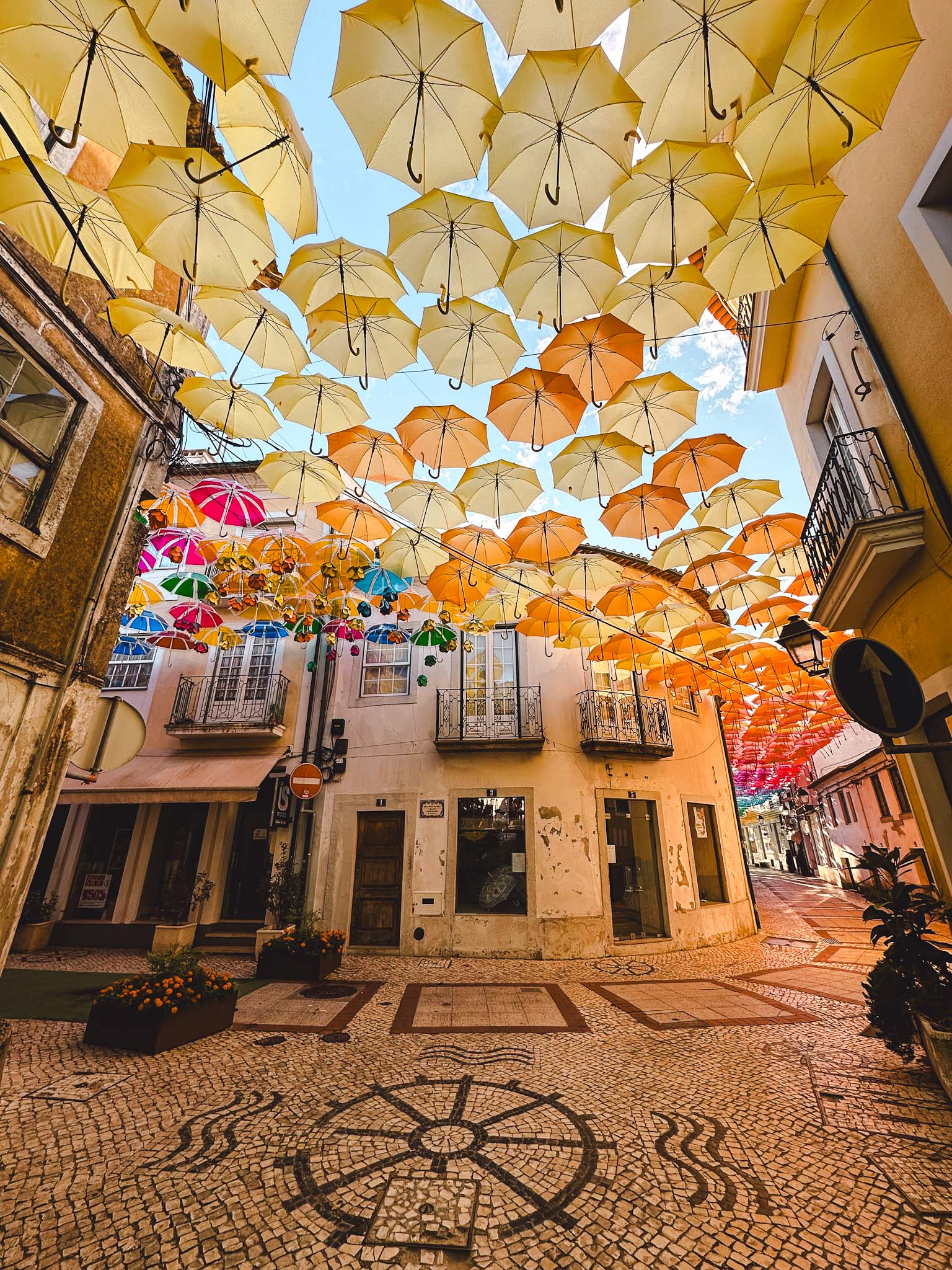
Located about 80 kilometers south of Porto, Águeda is one of those hidden gems in Portugal that surprises you in a positive way.
Águeda is a small yet colorful town famous for its annual festival, when the streets are filled with floating umbrellas that turn the whole town into an open-air art gallery each summer.
If you happen to be traveling around Portugal from July to September, definitely consider stopping by this unique town!


It’s a whole spectacle when the streets are decorated with thousands of colorful umbrellas as part of the globally famous Umbrella Sky Project.
When we visited, I counted about five streets that were covered with colorful umbrellas and other decorations. Not only streets, but some houses and shops also had umbrellas on them.
There were colorful benches, even a decorative car on one of the streets, as well as other colorful decorations. I didn’t know about this place before our trip to Portugal, but luckily, we visited at the end of August, so everything was in full swing.
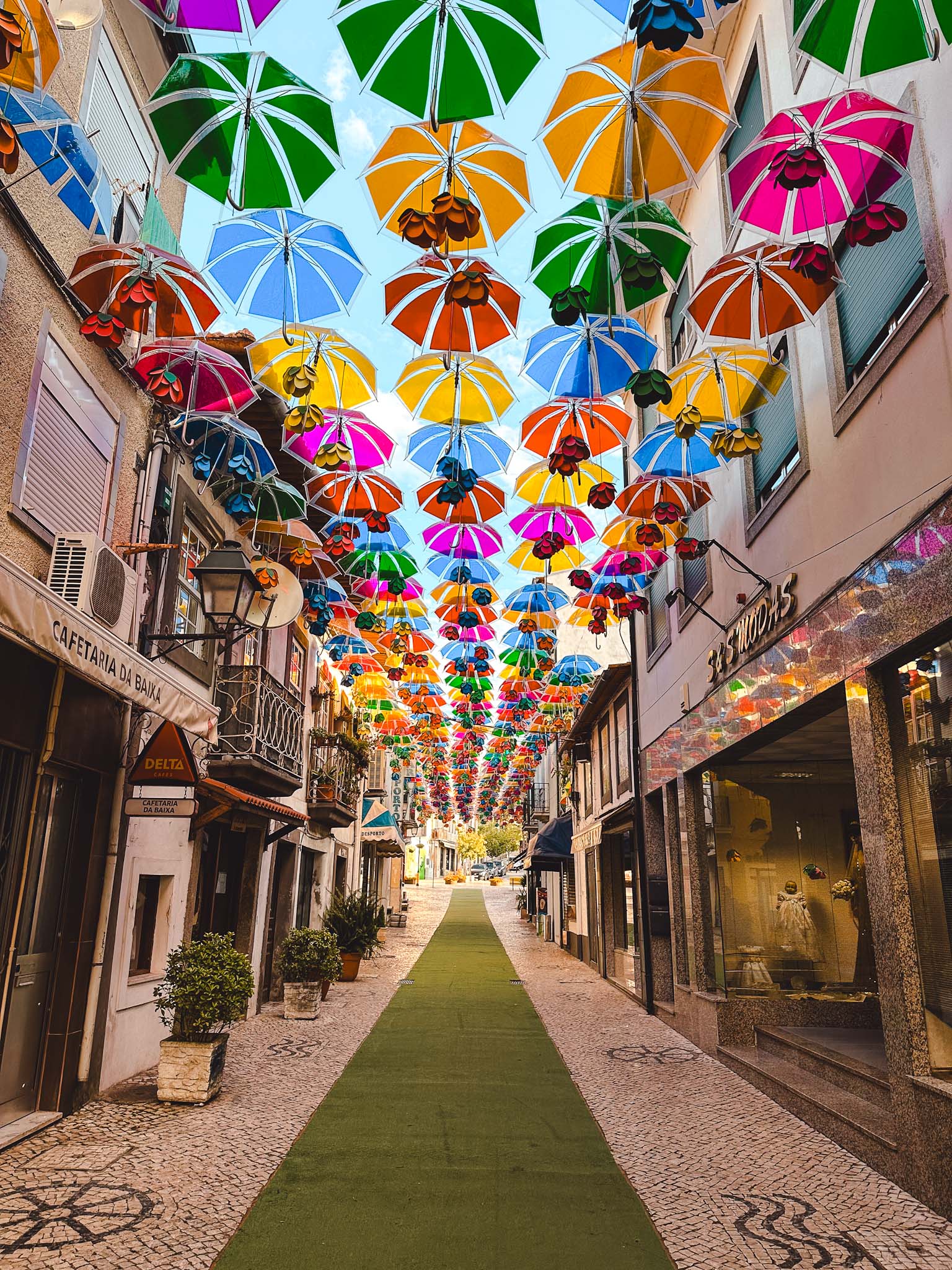
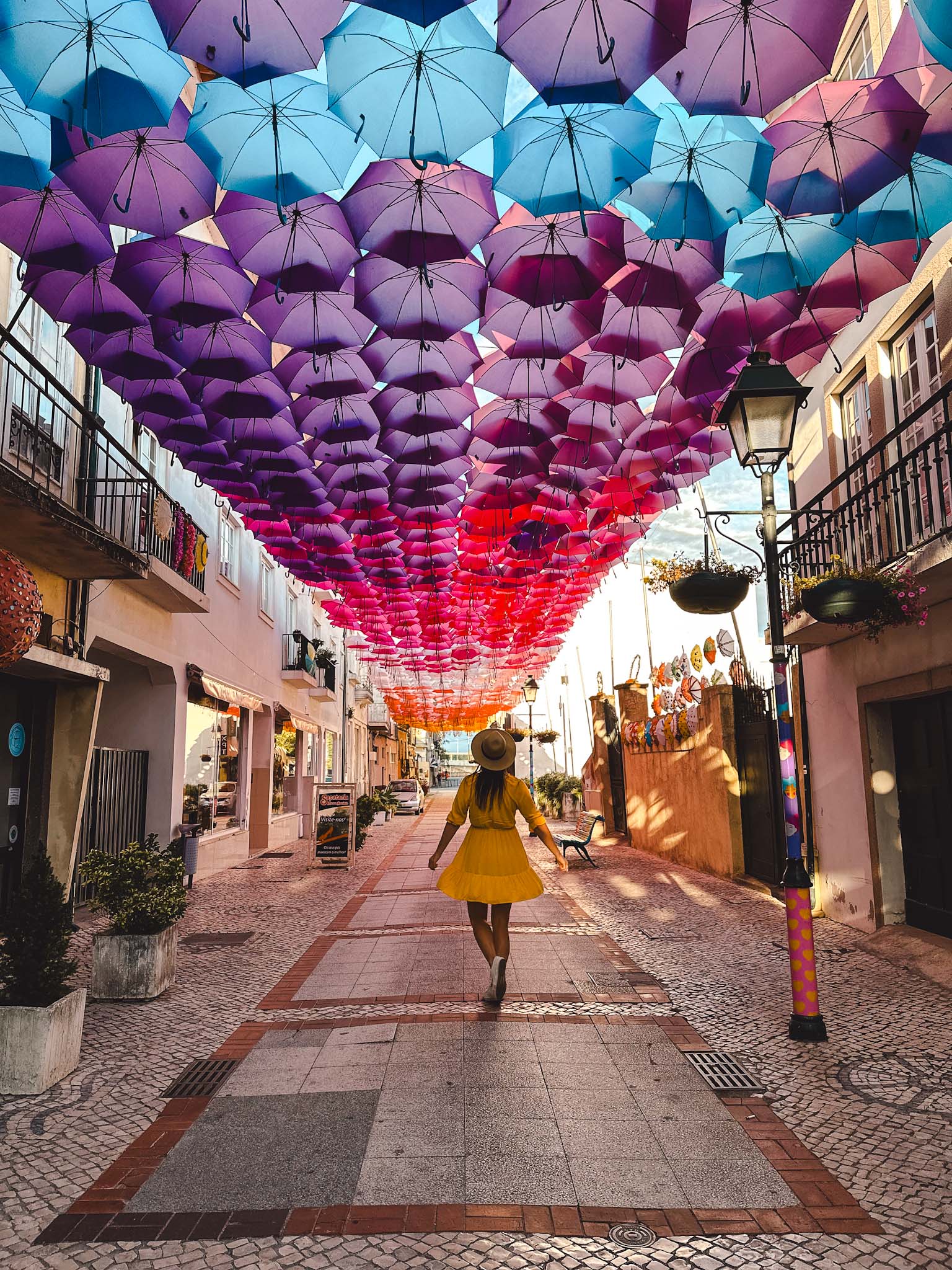
The best streets to go to see the umbrellas are Rua Luís Camões, Rua José Maria Veloso, Rua Jornal Soberania do Povo, and Rua Vasco da Gama. I also saw colorful decorations on Rua São Bento street.
Besides the umbrella art, Águeda also has plenty of street murals, painted benches, and creative installations scattered all around the town. It’s the kind of place where you just want to wander around and take pictures all the time, haha.
As far as I know, they also create a special Christmas project that you can visit during December when the umbrellas are decorated with Christmas lights. If you want to be sure before you go, I recommend contacting Umbrella Sky Project on Instagram.
19. Ponte de Lima, the oldest small town in Portugal

Just a 25-minute drive East from Viana do Castelo, you’ll find one of the most significant places in Northern Portugal!
Welcome to Ponte de Lima, one of the northernmost towns in Portugal, sitting just a short drive from the border with Spain. But more importantly, Ponte de Lima is considered the oldest town in Portugal.
Although many towns and settlements existed back in the 12th century, it was Ponte de Lima that received the first town charter. This charming medieval town got its name from the stone bridge that stretches over the Lima River.
Its name translates as exactly that, the Lima River Bridge.
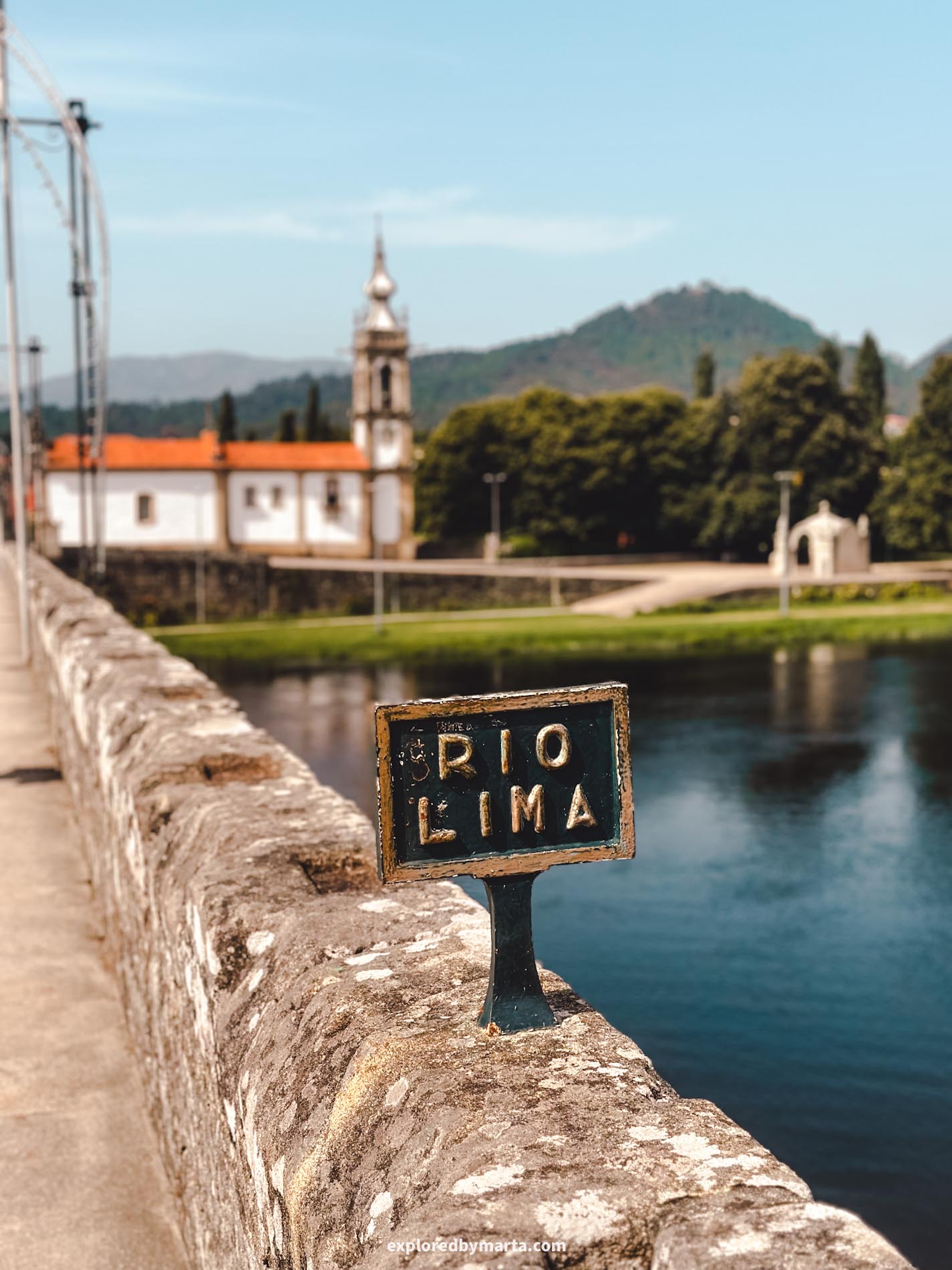

We came here on a sunny afternoon in the early days of October. We much appreciated the large parking lot they have next to the river.
Ponte de Lima only has about 2800 inhabitants and is rather quiet, unless you come here during a September festival or one of the market days.
We strolled around the old town, its cobbled streets, stopping by the main church, its two 14th-century defensive towers – Torre da Cadeia Velha, and Torre de São Paulo – and stopping by Largo de Camões, a riverside square filled with street cafés and a fountain.
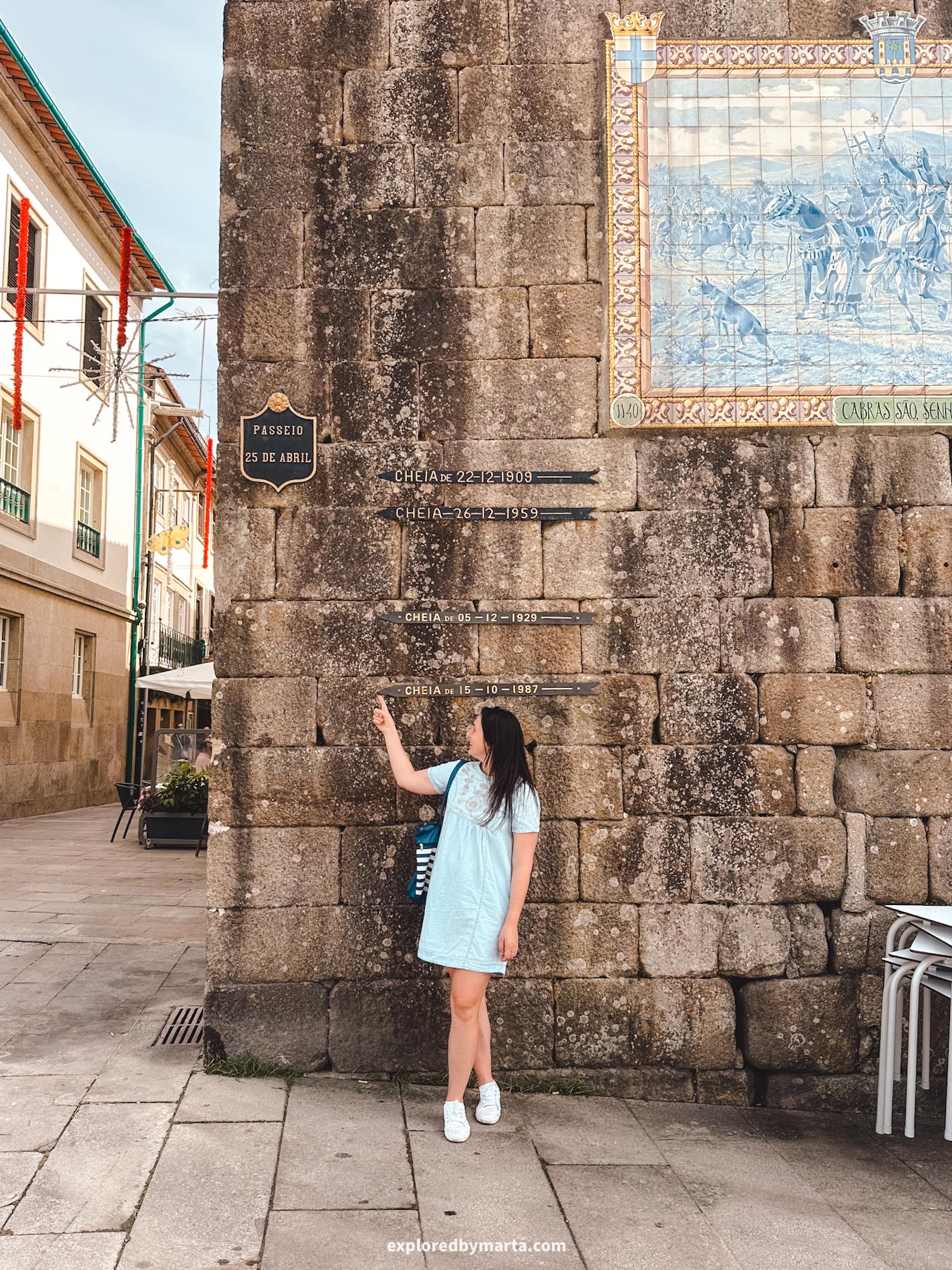
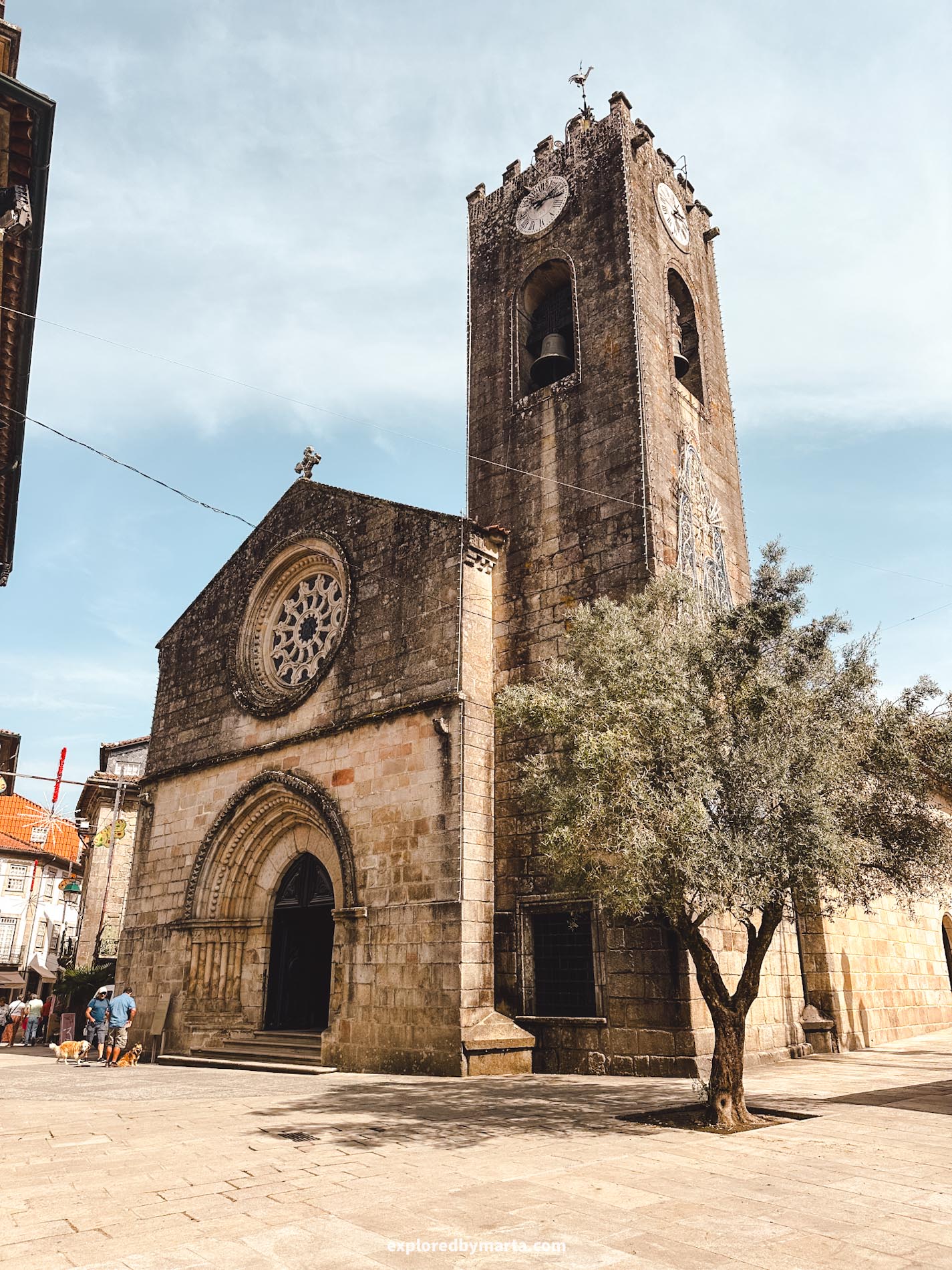
Probably my favorite part of Ponte de Lima was crossing its iconic bridge. It is made up of 31 stone arches, and some of them even date back to Roman times, but others were added later, in the Middle Ages.
If you walk along the riverbanks, you’ll find human-sized statues of Roman soldiers standing in formation on one side of the river and their commander on a horse right across the river.
Those statues are tied to a Roman legend.


It says that the troops were afraid to cross the river as they believed it was the river Lethe, from Greek mythology, and crossing it would result in losing their memories.
So the commander on a horse went first, crossed the river, and then called their names one by one from the other side of the river to prove that he hadn’t lost his memory.

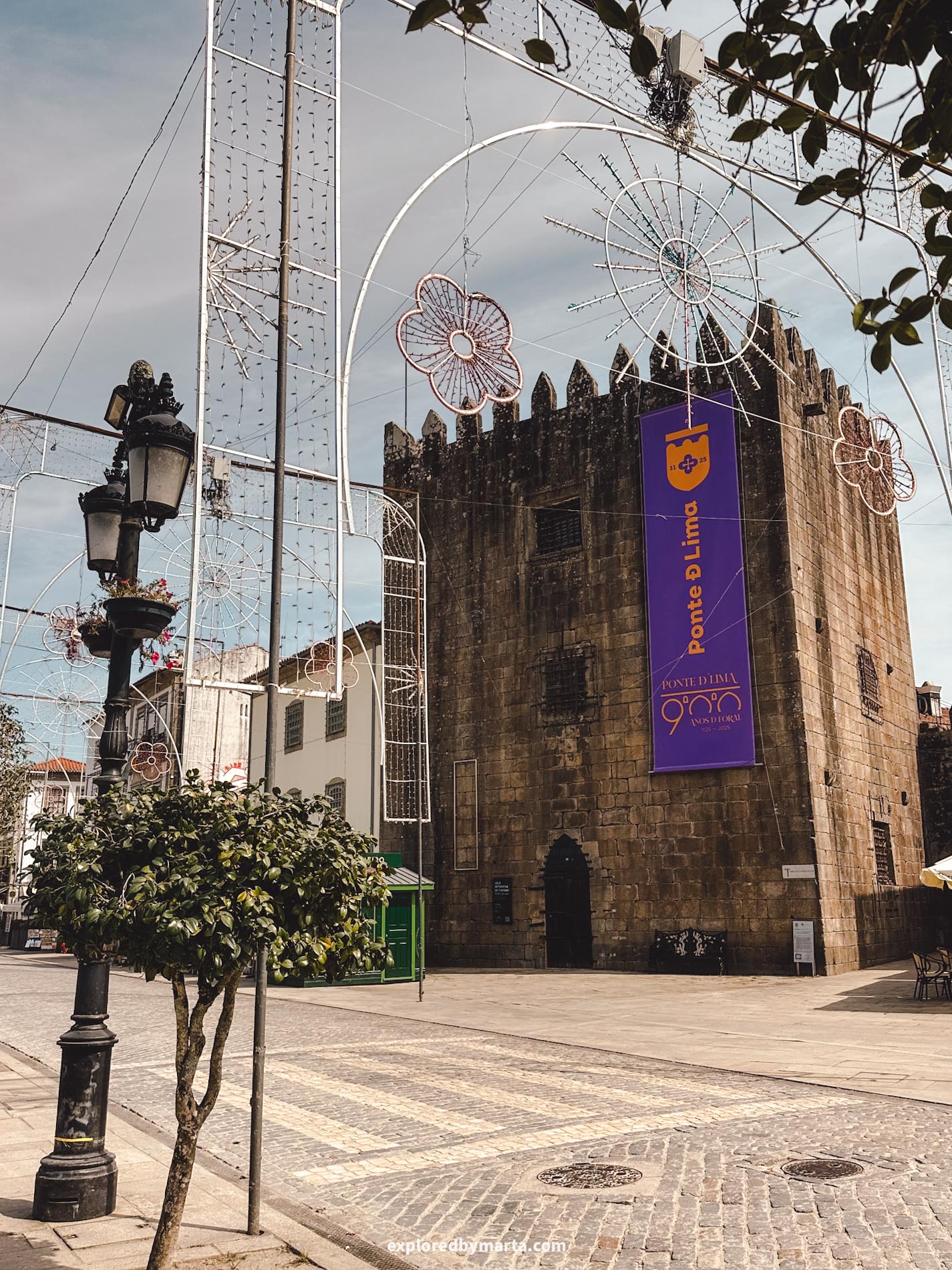
Another thing you will notice right away in Ponte de Lima is the constant presence of pilgrims walking the famous Camino de Santiago towards Santiago de Compostela in Spain. Ponte de Lima sits along The Portuguese Way, a route that starts in Lisbon.
Overall, Ponte de Lima felt authentic, charming, and timeless. The town combines long-lost history with the relaxing vibes of a modern-day small town, with locals sitting in the squares sipping drinks and kids running around.
If you are looking for authentic medieval Portuguese towns in Northern Portugal with a rich historical heritage, then this is the perfect place to visit!
Location: Ponte de Lima
20. Mafra, residence of the last king of Portugal
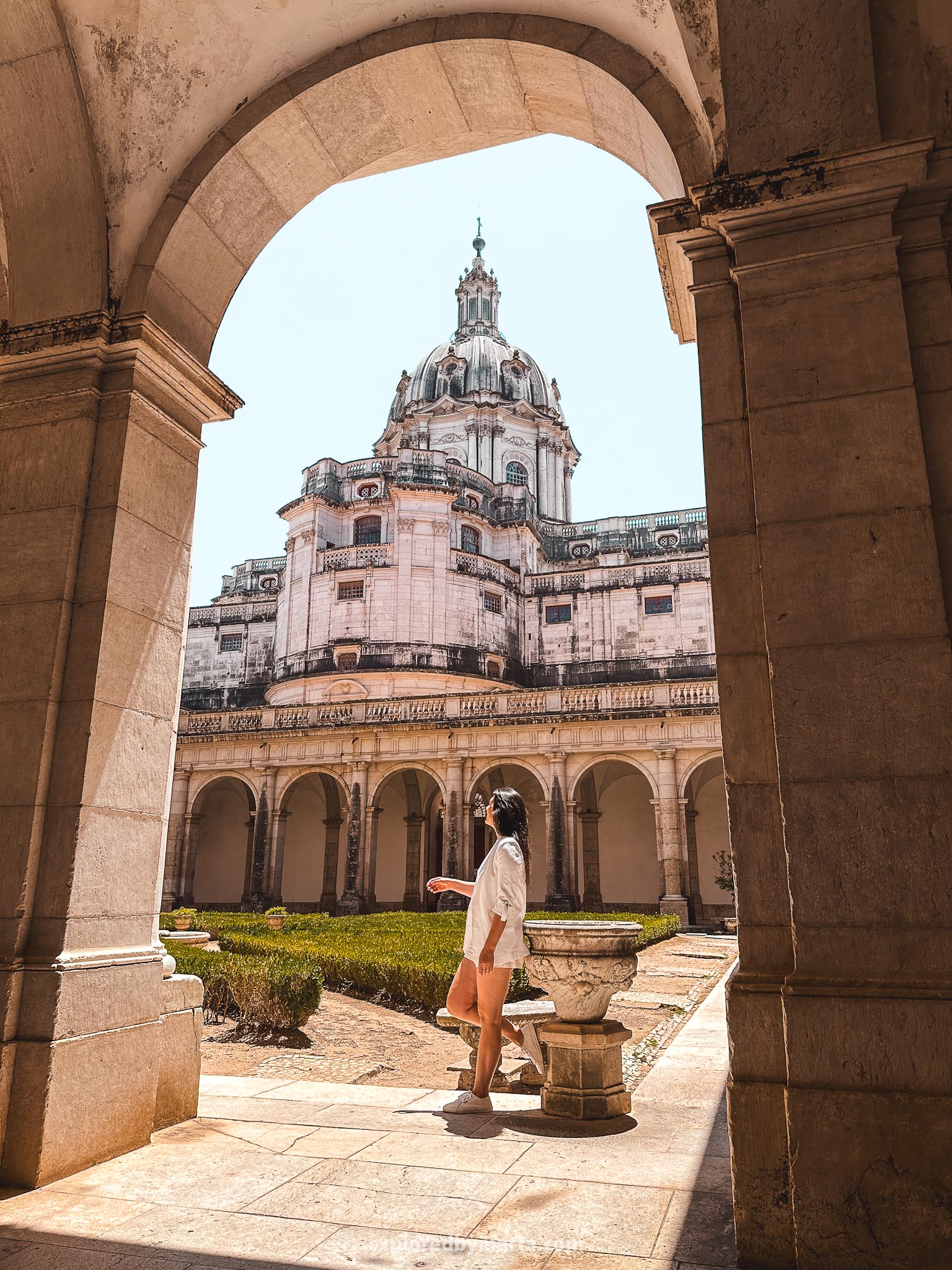
Mafra is a peaceful town located about 40 kilometers northwest of Lisbon, best known for its magnificent Palácio Nacional de Mafra – one of the largest palaces in Portugal.
The palace is so gigantic that it completely dominates the town, and, in fact, the town around it only grew because of the presence of the palace!
Mafra National Palace was built in the 18th century after King João V promised to build a monastery if his wife were to give birth to an heir (which, obviously, happened!).

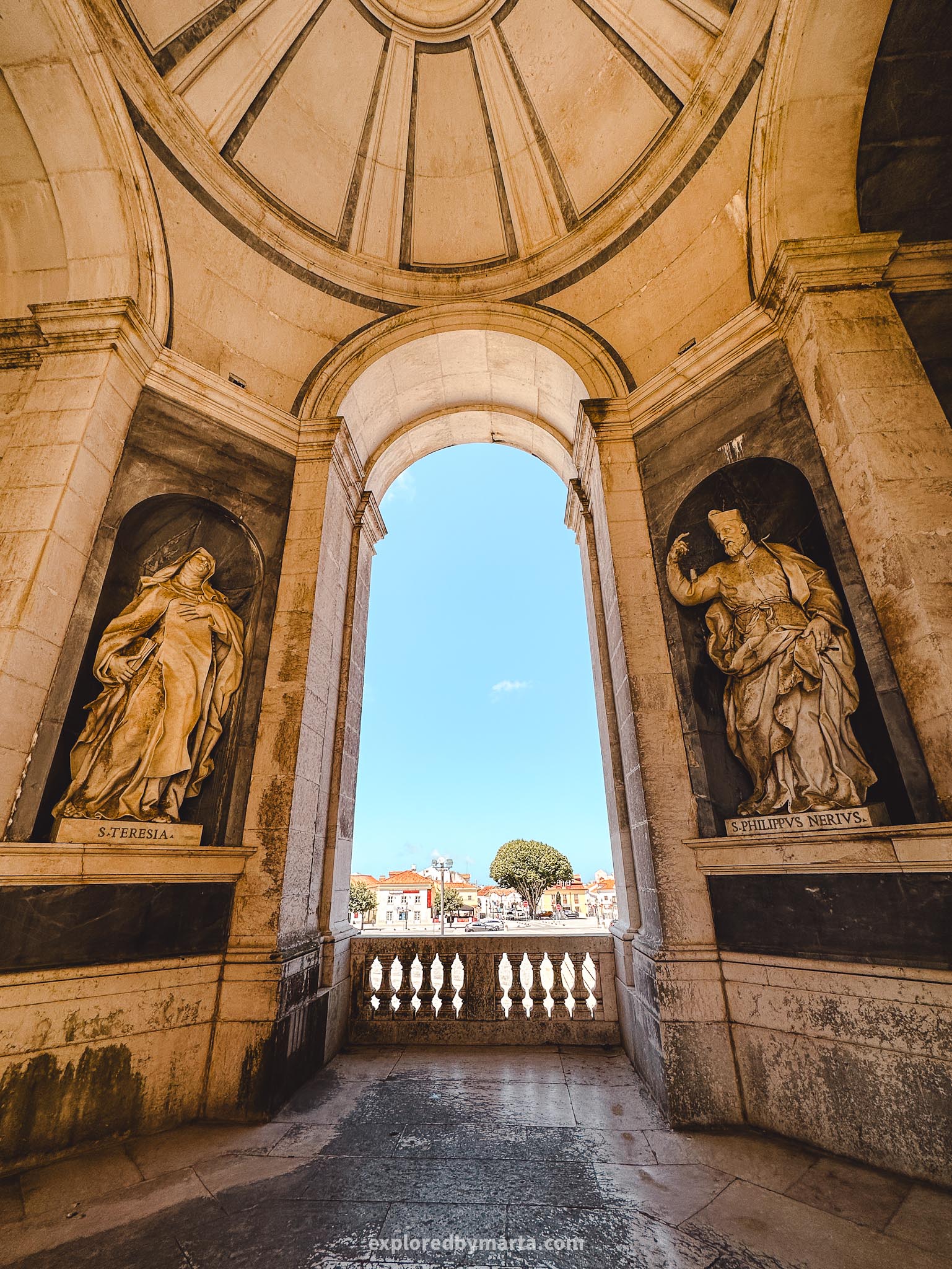
However, what was meant to be a monastery became a massive complex with a royal palace, a basilica, and a convent all in one.
The palace complex includes 1,200 rooms, halls, and 156 stairways, as well as a large library with over 30,000 rare books. The library is actually famous for housing bats, which protect the books from insects.
Obviously, we came to Mafra just to see the palace. Its impressive facade is 220 meters long. However, behind the main facade hides a monastery with cells for about 300 monks.


The palace is truly massive. I thought we would never get through that building in a day, but somehow we managed to do that, haha! A visit to the basilica is free, but there is an entrance fee to see the palace and the monastery.
Interestingly, the Palace of Mafra is also the final residence of the last king of Portugal, Manuel II, who left the palace to go into exile on 5 October 1910 after it was announced that the monarchy was overthrown and Portugal was now a republic.
We visited Mafra as a day trip from Lisbon. If you love architecture and royal history, Mafra is one of those places that have to be on your Portugal itinerary.
21. Lamego, a hidden gem in Northern Portugal

If you’d rather explore some hidden gems in Portugal, this one is for you!
Lamego is a beautiful historic town in northern Portugal, somewhere in the heart of the Douro Valley. It is known for its baroque architecture, religious heritage, and, of course, the production of wines that come from the nearby Douro wine region.
The town’s most iconic landmark is the Santuário de Nossa Senhora dos Remédios, one of Portugal’s most stunning pilgrimage sites. Almost everyone knows Braga’s iconic Bom Jesus do Monte church with its white Baroque staircase, but this is even better.
The sanctuary sits top of Santo Estêvão Hill and was built between the 18th and 20th centuries. It can be accessed from the town by a long Baroque staircase of 686 steps (higher than Bom Jesus do Monte), but you can drive up there by car as well.

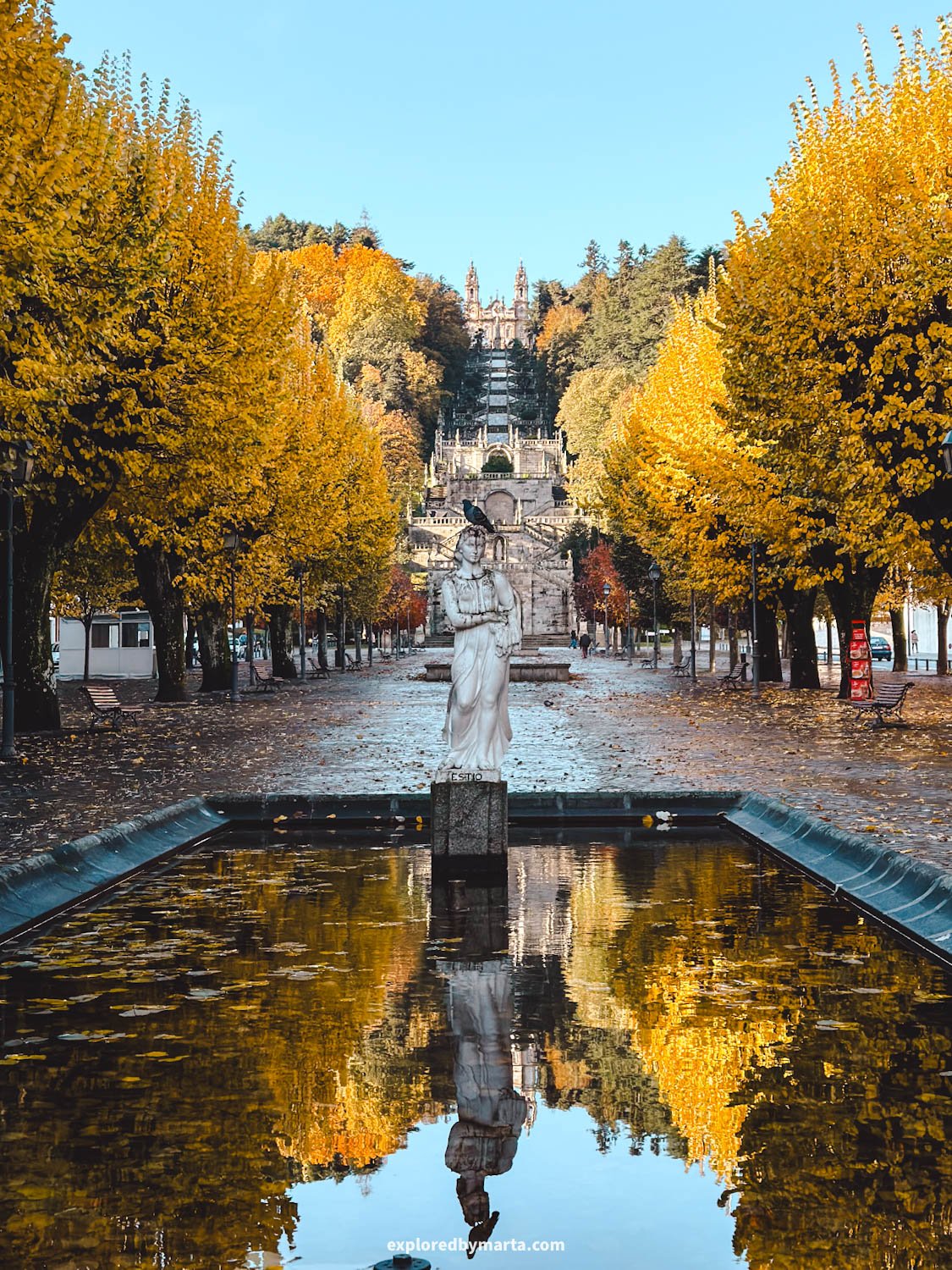
However, it takes away the magic of climbing the beautiful stairs. To me, climbing the stairs was the best part of the experience, haha. We climbed all the way up there, explored the sanctuary, and then climbed back down.
The Baroque is beautifully decorated with fountains, statues, and azulejos, the traditional blue-and-white tiles.
Building sanctuaries on top of hills and then adding majestic, long staircases up to them is not uncommon in Portugal. We found a couple of similar spots, but somehow the one in Braga up to Bom Jesus do Monte is the most popular of all.
But I liked this one even more! What do you think?
Location: Santuário de Nossa Senhora dos Remédios
22. Elvas, the Queen of the Border
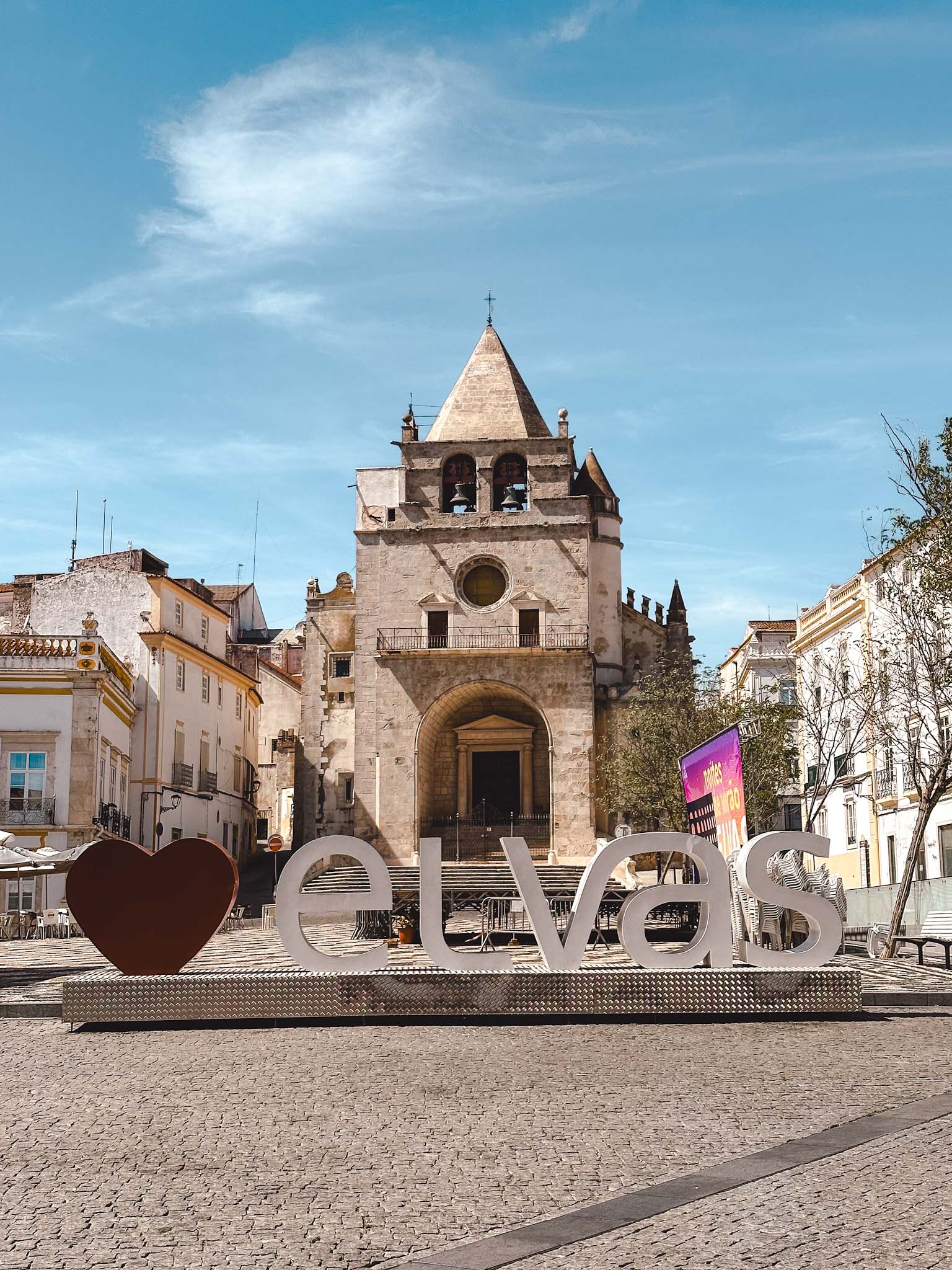
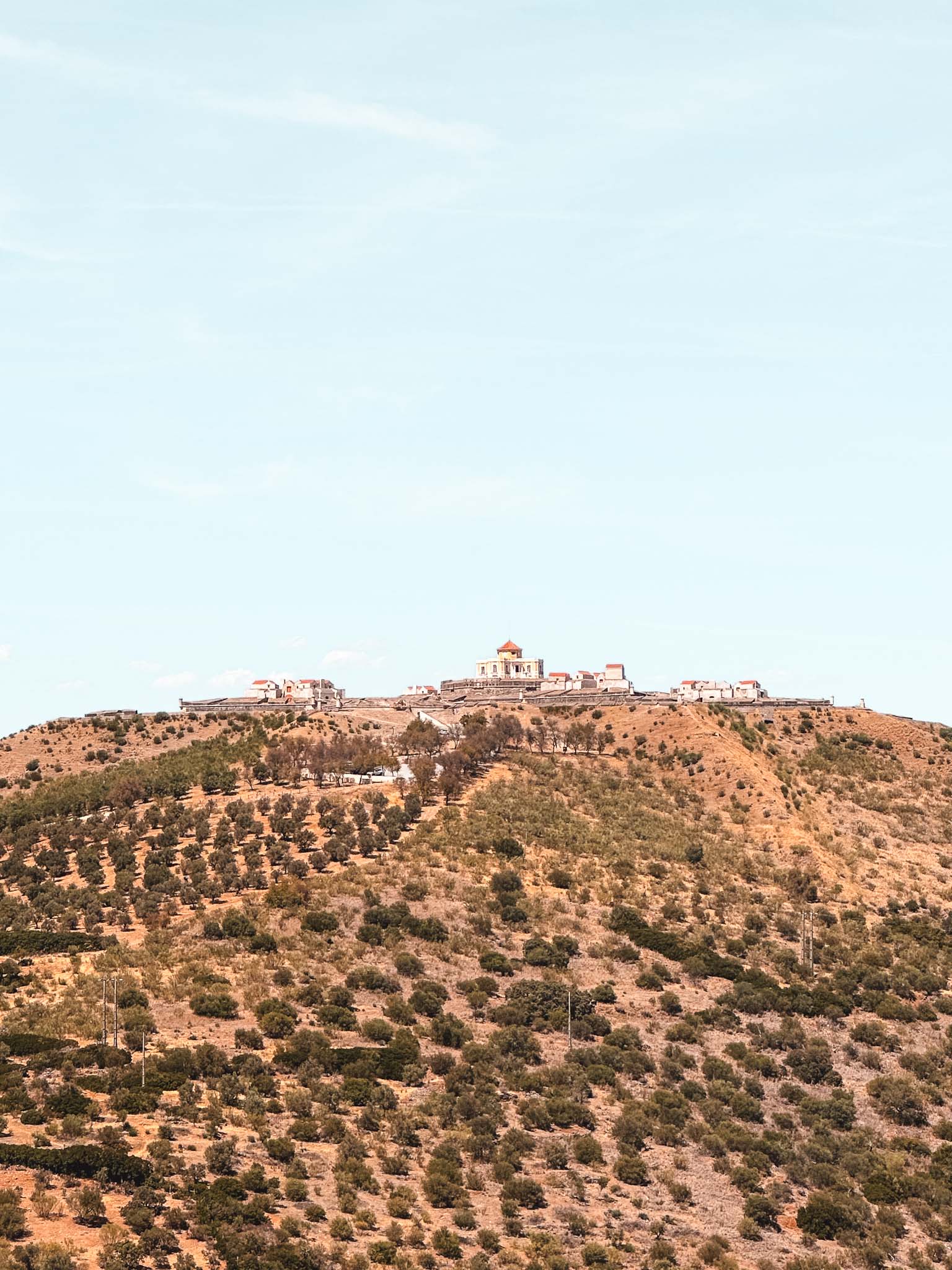
Just a 1-hour drive away from Évora in the Alentejo region, there is an authentic Portuguese city, Elvas. The city features a couple of unique places that make this one of the best cities to visit in Portugal.
Elvas lies on a hill just a couple of kilometers from the border of Spain, so it is often called the Queen of the Border.
It is known for its unique star-shaped military architecture – bastion fortifications that are the largest bulwarked dry ditch system in the world. For this reason, Elvas is listed among the UNESCO World Heritage Sites.


The whole historic center of Elvas is built inside massive fortifications. If you drive to the city, you will have to drive through a narrow gateway leading inside the star-shaped walls and forts, which once protected Portugal from invasions.
However, there are other smaller forts around the city.
Obviously, it is not possible to see the shape of the fort when you are at ground level. However, you can see the smaller forts on Google Maps if you switch on the satellite view. Look for Forte de Santa Luzia as well as Forte de Nossa Senhora da Graça.
You can also see the forts from afar, like, from the Castle of Elvas, you can see one of the forts, Forte de Nossa Senhora da Graça. It sits on a nearby hill and is very visible from the castle.

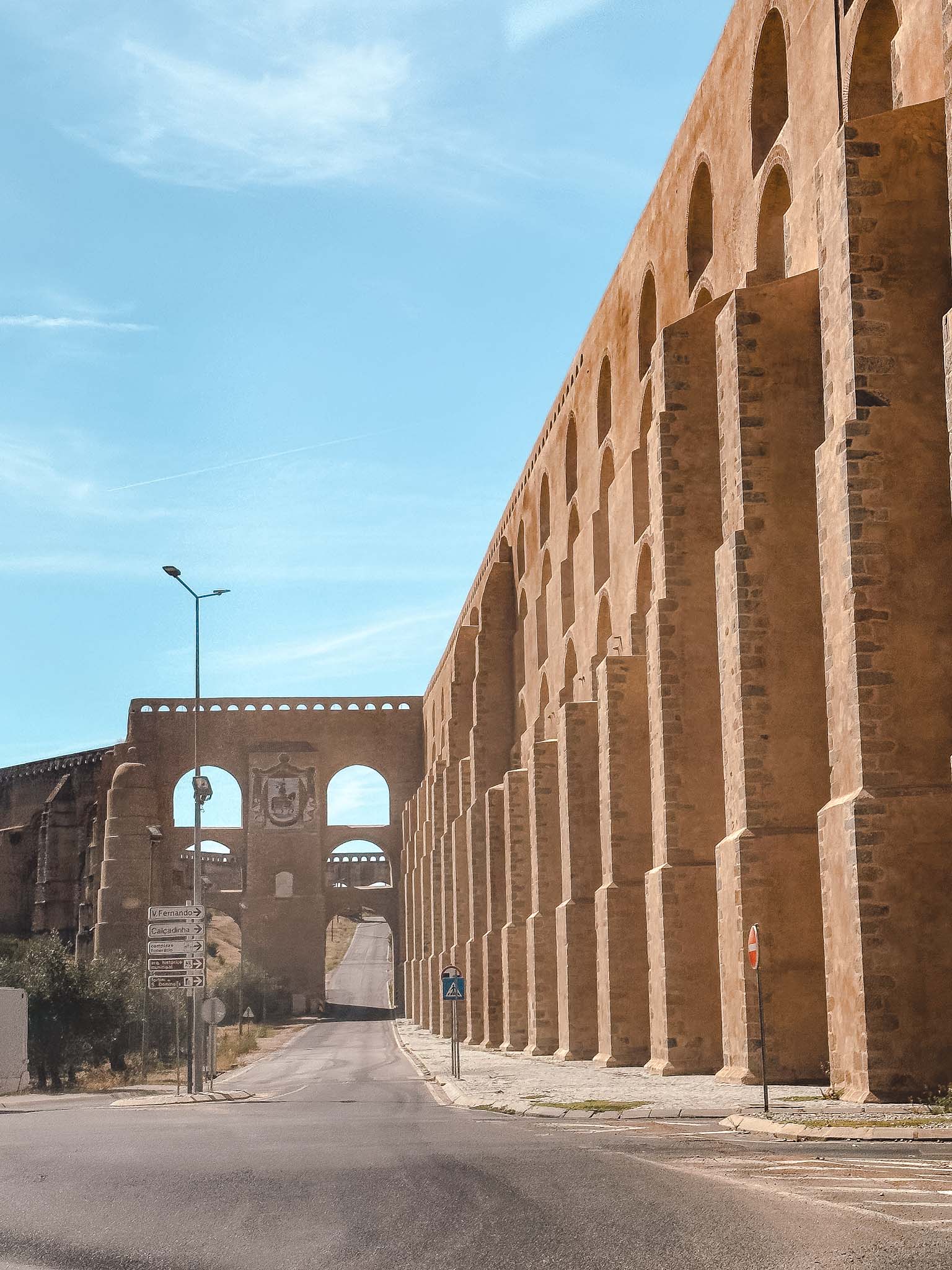
But if you go to Miradouro da Parada do Castelo viewpoint right next to the castle, you will spot the other fort as well, along with its massive star-shaped stone fortifications.
Other places to visit in Elvas include the Castle of Elvas (there is a small entrance fee if you want to climb up to the walls and explore the watchtowers), the famous Arco de Santa Clara arch, Praça da República main square, and the massive Amoreira Aqueduct.
Walking through Elvas feels like stepping back in time – the streets are filled with whitewashed houses, narrow alleys, and a calm, authentic atmosphere. It feels far removed from Portugal’s busier tourist spots.
23. Bragança, the medieval stronghold
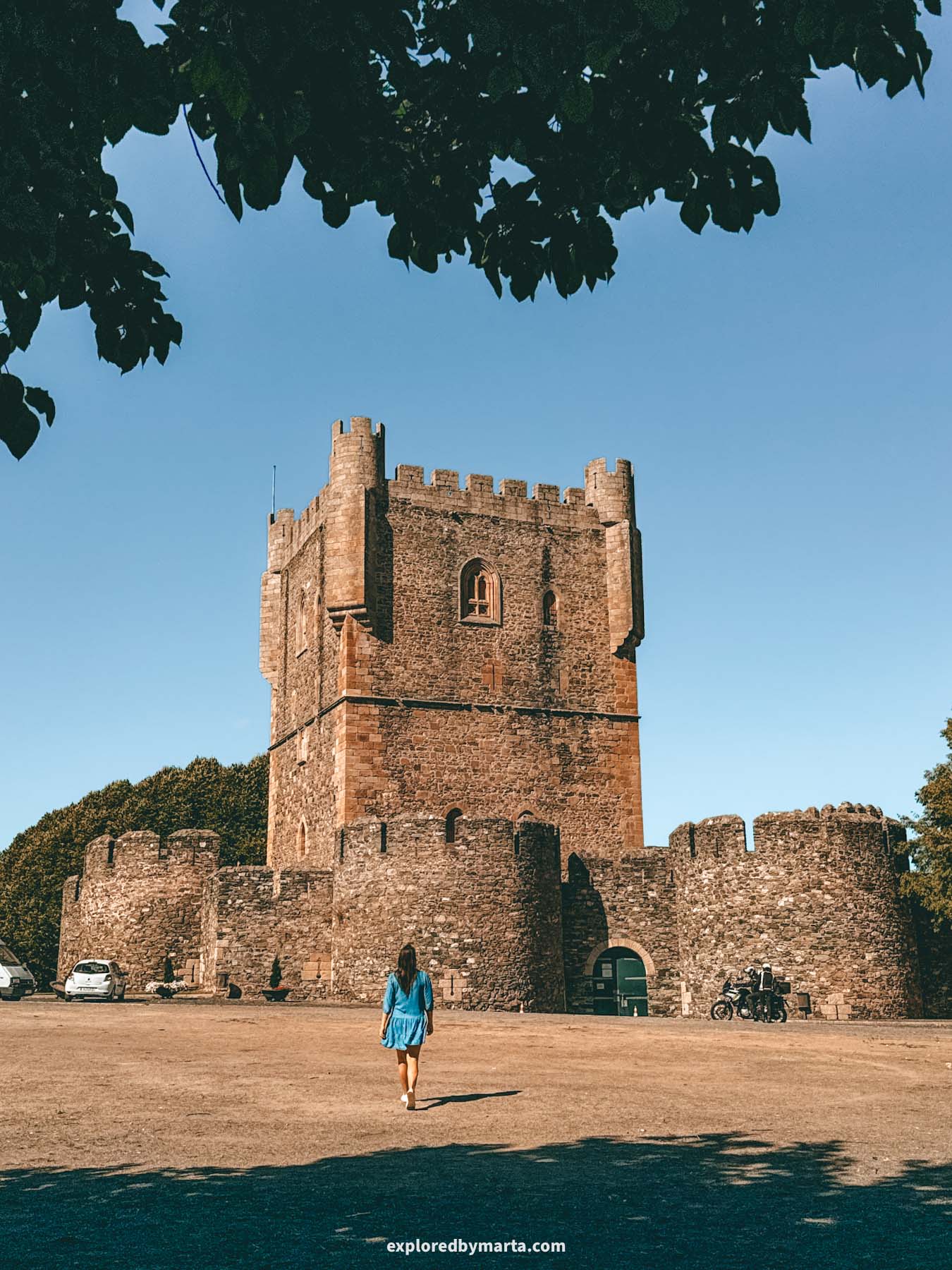
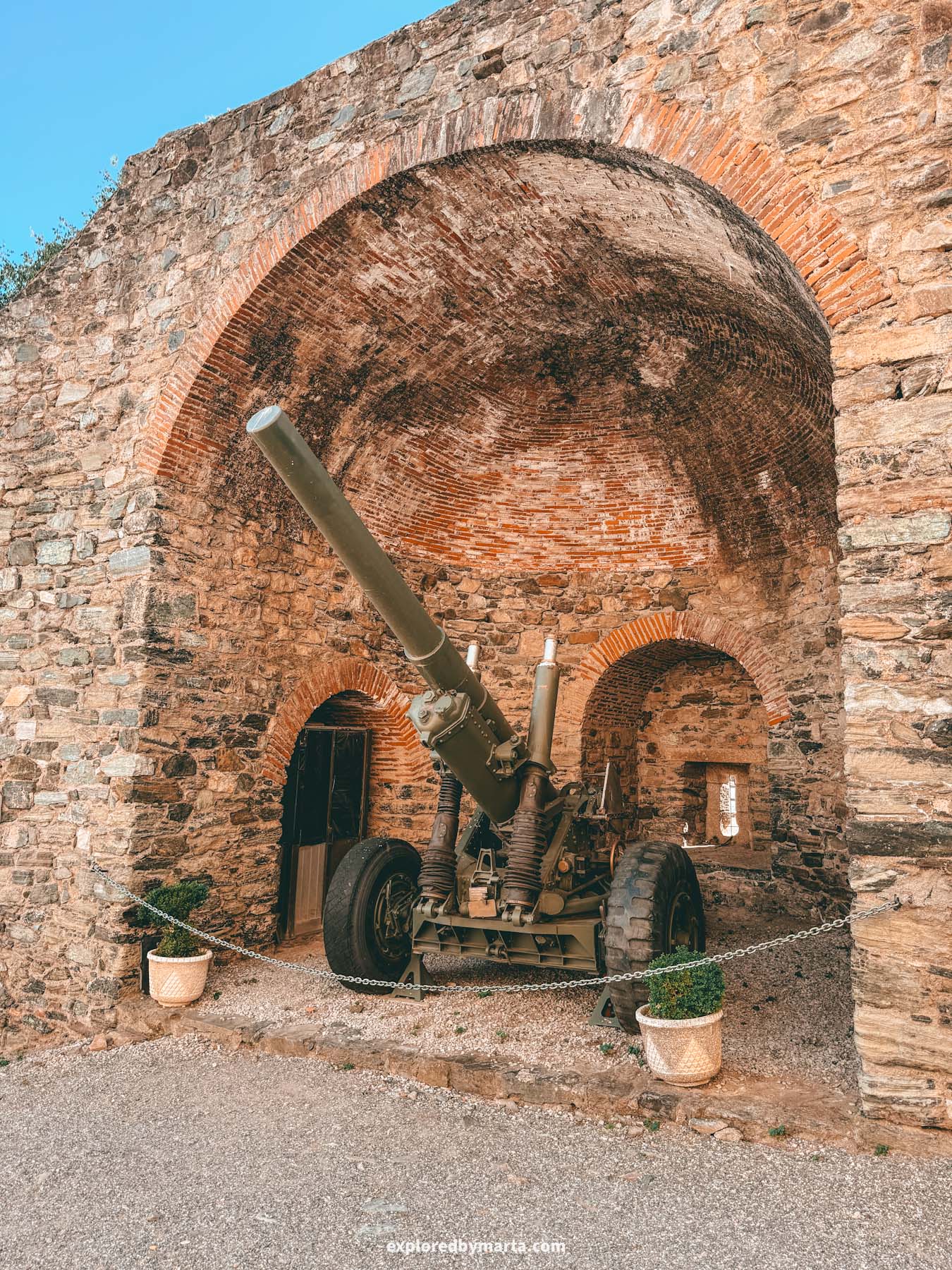
Another worthwhile destination, a bit further away from all the tourist hotspots, is Bragança.
Located close to the Spanish border, this small city is the capital of the Trás-os-Montes region, one of Portugal’s most remote and authentic areas. If you’re looking for a destination that feels off the beaten path, Bragança is a great choice!
The highlight of Bragança is its impressive medieval castle, Castelo de Bragança, which dominates the skyline. Built in the 12th century by King Sancho I, it is one of the best-preserved medieval castles in Portugal.
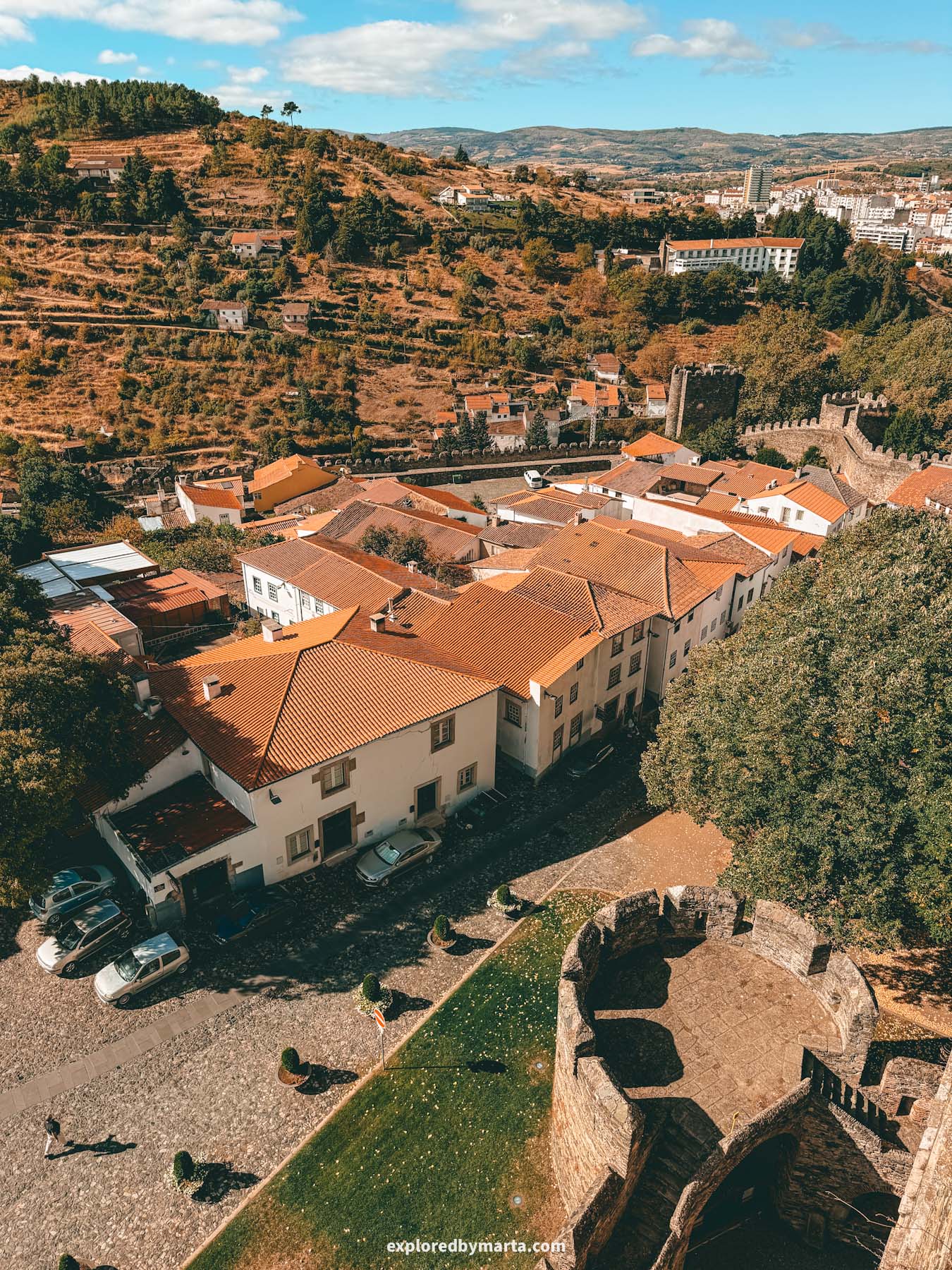

Inside the castle walls, you’ll find a small medieval village with cobblestone streets, traditional stone houses, and a charming church.
At first, I was actually quite skeptical about visiting this castle. We had to drive for hours to get there and then those same hours to get back to our apartment. However, it turned out to be one of my favorite medieval castles in Portugal.
For a small entrance fee (they asked for it in cash), you can not only explore the territory within the castle walls, but also climb the walls and the impressive, 33-meter castle tower for panoramic views of the city and the surrounding countryside.
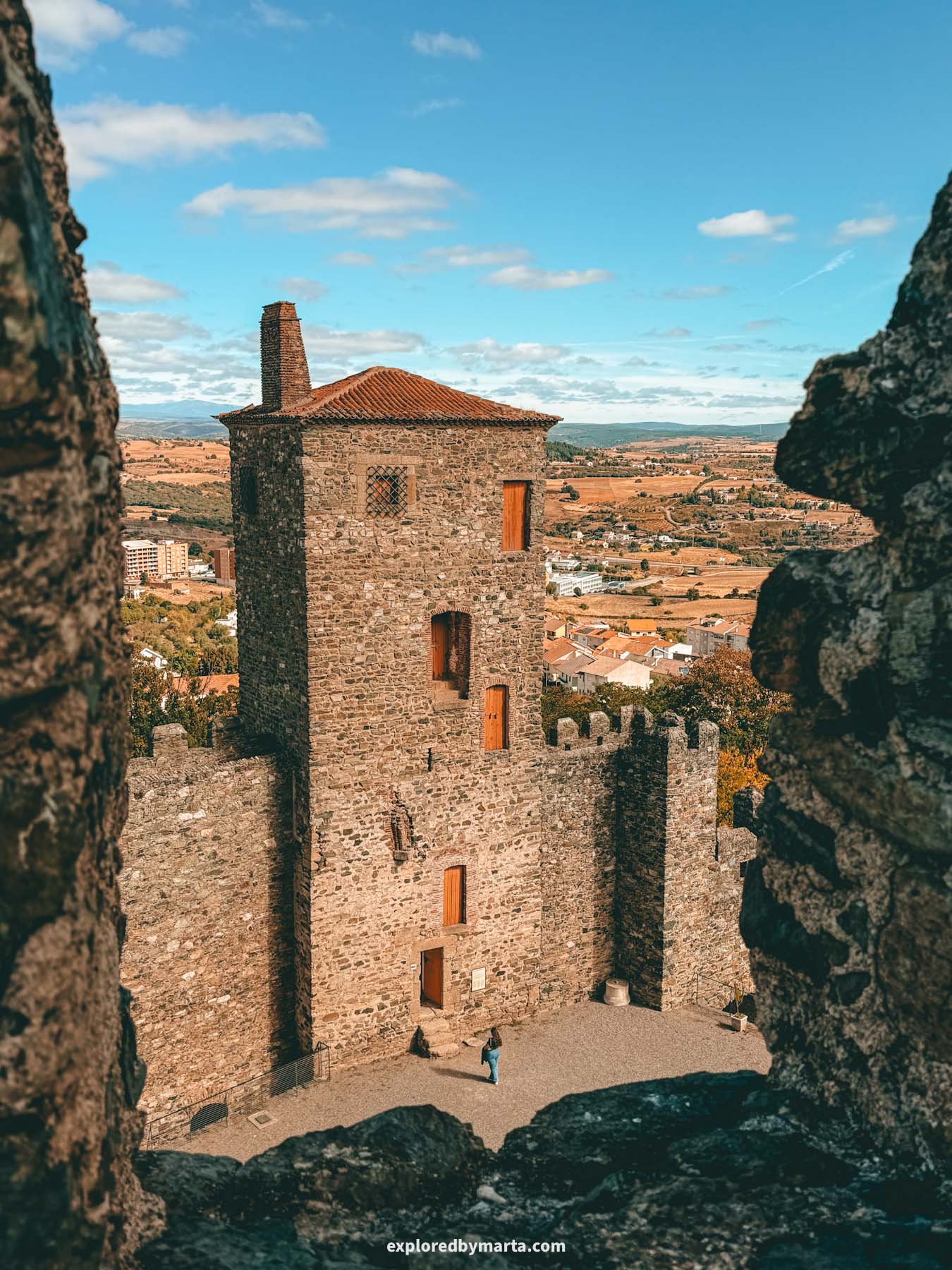
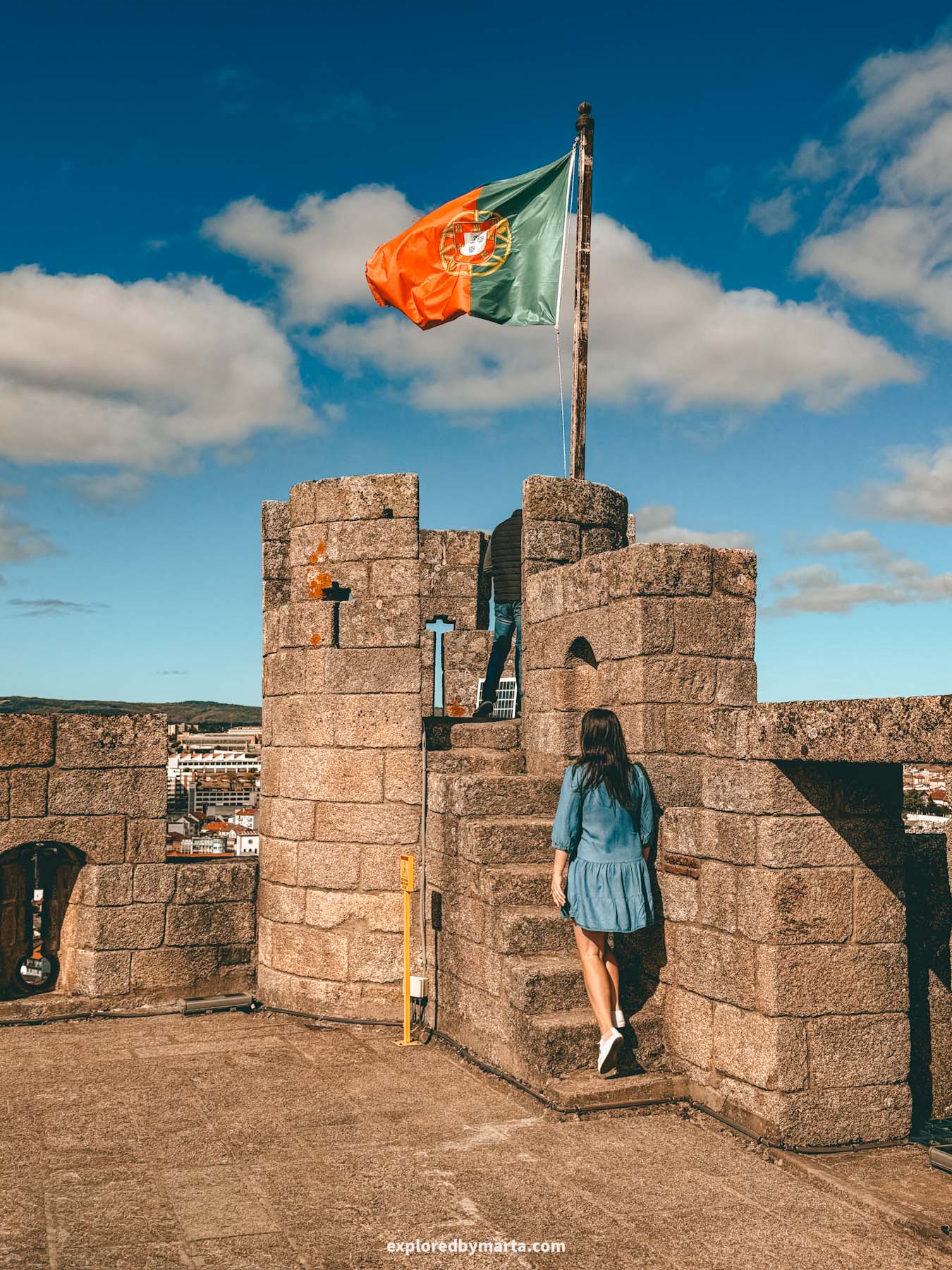
And not only that! The castle tower is actually a Military Museum, which houses a collection of ancient weapons, maps, flags, armor, and many more interesting artifacts from Portugal’s history. It was so cool and so interesting, we spent over an hour there!
Fun fact – the castle also gave its name to the House of Braganza, which is one of the most important royal dynasties in Portuguese history. They ruled over the country from the 17th to the 20th century and produced 15 Portuguese monarchs!
Bragança may not be as well-known as other cities in Portugal, but that’s part of its charm. It’s quiet, full of history, and gives you a real taste of traditional Portuguese life away from the crowds. If you happen to be nearby, do stop by to check out Bragança!
Location: Castelo de Bragança
Happy exploring!
Portugal is one of those countries that has surprises on every turn. We explored everything from lively coastal cities like Lisbon and Porto to charming medieval towns such as Óbidos, Guimarães, and Évora, and every place had its own unique story to tell.
Whether you’re wandering along centuries-old cobblestone streets, admiring jaw-dropping Gothic buildings, sipping coffee by the river, or watching the sunset from a hilltop viewpoint, exploring Portugal’s towns and cities is all about soaking in that unique atmosphere.
We’ve spent months traveling across Portugal and visiting both the famous and the lesser-known spots, and every place has had something special to offer. I hope this list helps you plan your own adventure and inspires you to discover more of Portugal’s wonders! Cheers!
PIN FOR LATER!

